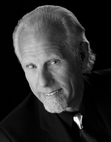Paul Bishop's Blog, page 27
May 5, 2017
ALL THE GOOD BOOKS—PART ONE
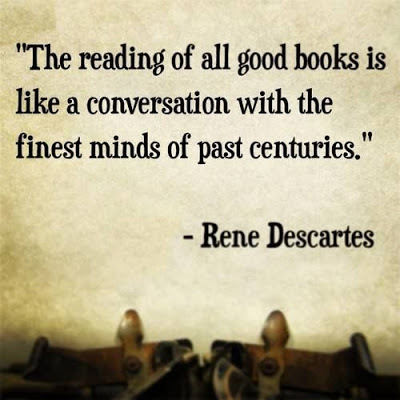 ALL THE GOOD BOOKS—PART ONE My friend Mary, an omnivorous reader, is a wonderful woman who owned a cramped , but cool independent bookstore near my home. When Mary retired, the store was sold to another wonderful woman who moved it a mile away to a new location. Despite her retiredstatus, Mary volunteers in the store two or three days a week, continuing to help others find great books for which they might not even know they are looking. Mary and I were chatting in the store recently when she confessed she’d celebrated her 86th birthday a week earlier. When I offered my condolences, Mary zinged me a quizzical look and told me in firm tones, “I’m shooting for ninety.” “And I’m sure you’ll make it,” I said, then gestured at the high towers of books forming a literary skyline around us. “I offered my condolences because at eighty-six there can’t possibly be any good books left to read.” Mary’s eyes sparked with a cliché twinkle before she whacked my arm with a left hook she stole from Muhammad Ali. “Don’t be silly,” she said. “You can’t possibly read all the good books—no matter how long you live.”
ALL THE GOOD BOOKS—PART ONE My friend Mary, an omnivorous reader, is a wonderful woman who owned a cramped , but cool independent bookstore near my home. When Mary retired, the store was sold to another wonderful woman who moved it a mile away to a new location. Despite her retiredstatus, Mary volunteers in the store two or three days a week, continuing to help others find great books for which they might not even know they are looking. Mary and I were chatting in the store recently when she confessed she’d celebrated her 86th birthday a week earlier. When I offered my condolences, Mary zinged me a quizzical look and told me in firm tones, “I’m shooting for ninety.” “And I’m sure you’ll make it,” I said, then gestured at the high towers of books forming a literary skyline around us. “I offered my condolences because at eighty-six there can’t possibly be any good books left to read.” Mary’s eyes sparked with a cliché twinkle before she whacked my arm with a left hook she stole from Muhammad Ali. “Don’t be silly,” she said. “You can’t possibly read all the good books—no matter how long you live.”
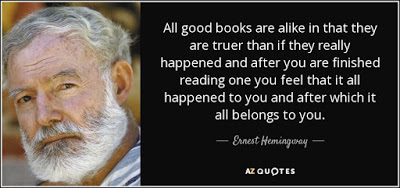 According to bumper sticker psychiatry there is no such thing as a bad child, only bad parents. Perhaps this existential bit of nonsense can be skewed for the literary world to claim there are no bad books, only bad authors. However, if all books started out good, there are many in dire need of therapy after being screwed up by their literary parents. Over the years, a lot of books have failed to make it past my personal fifty page cut. Basically, if I’m not engaged in a book by page fifty, it’s tossed in the pile destined for a Friends of the Library sale. There seem to be a lot more in this category as my age increases and my patience shrinks. My fifty page cut eventually became a forty page cut, and then a thirty page cut. Currently, it hovers somewhere around twenty-five.
According to bumper sticker psychiatry there is no such thing as a bad child, only bad parents. Perhaps this existential bit of nonsense can be skewed for the literary world to claim there are no bad books, only bad authors. However, if all books started out good, there are many in dire need of therapy after being screwed up by their literary parents. Over the years, a lot of books have failed to make it past my personal fifty page cut. Basically, if I’m not engaged in a book by page fifty, it’s tossed in the pile destined for a Friends of the Library sale. There seem to be a lot more in this category as my age increases and my patience shrinks. My fifty page cut eventually became a forty page cut, and then a thirty page cut. Currently, it hovers somewhere around twenty-five.
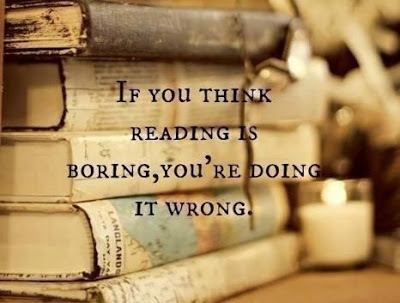 My friend Mary is right—You can’t possibly read all the good books no matter how long you live. Consequently, there is no upside to finishing any book you are not enjoying (unless there are mitigating factors requiring you to deal with the malefactor). Bad books may only be good books forced into bad behavior by their literary parents, but there are too many well behaved books waiting to fill you with wonder and enjoyment.
My friend Mary is right—You can’t possibly read all the good books no matter how long you live. Consequently, there is no upside to finishing any book you are not enjoying (unless there are mitigating factors requiring you to deal with the malefactor). Bad books may only be good books forced into bad behavior by their literary parents, but there are too many well behaved books waiting to fill you with wonder and enjoyment.
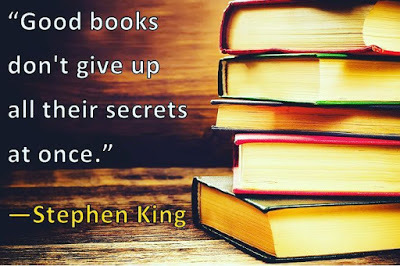 Many good books grow up to be class valedictorians. These are the books in which you become fully immersed—baptized in the water of their pages—and are often touched with despair whenever you turn their last page. You gently close the covers and are unwillingly transported back into this world—where you are gobsmacked to find everyone is carrying on normally as if your emotional crisis hadn’t occurred. Like Mary, I am an omnivorous reader. Many a genre has fallen before me and yielded up its secrets. I understand too well the anguish of turning the last page of a stunning standalone novel or the last book in a beloved series.
Many good books grow up to be class valedictorians. These are the books in which you become fully immersed—baptized in the water of their pages—and are often touched with despair whenever you turn their last page. You gently close the covers and are unwillingly transported back into this world—where you are gobsmacked to find everyone is carrying on normally as if your emotional crisis hadn’t occurred. Like Mary, I am an omnivorous reader. Many a genre has fallen before me and yielded up its secrets. I understand too well the anguish of turning the last page of a stunning standalone novel or the last book in a beloved series.
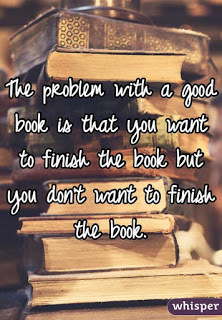 I also know the joy of unexpectedly perceiving a book, a series, or overlooked author through a different and intriguing prism—opening up a whole new realm of obsessive reading. The companion to this experience is discovering an author whose books serendipitously enter your orbit with all the subtly of a hurtling giant asteroid. You tentatively try one title and are immediately captivated by a new world and delight in knowing the author has a huge backlist of books waiting for you to explore. Recently, it has been my good fortune to experience both phenomena. In my pre-teen adolescence of the mid-sixties everything was all about spies. James Bond, The Man From U.N.C.L.E., Our Man Flint, Mission Impossible, I Spy, Secret Agent, The Wild Wild West, Get Smart, and other swinging spies dominate television and the big screen. I was as hooked as any junkie, and my reading habits were all about mainlining related source material, TV tie-in novels, and anything else espionage related the local bookmobile could provide. I discovered Len Deighton’s redoubtable spy Harry Palmer, Donald Hamilton’s all-American agent Matt Helm (the book version as opposed to the nonsense of the Dean Martin movies), and I even came in out of the cold with John le Carré.
I also know the joy of unexpectedly perceiving a book, a series, or overlooked author through a different and intriguing prism—opening up a whole new realm of obsessive reading. The companion to this experience is discovering an author whose books serendipitously enter your orbit with all the subtly of a hurtling giant asteroid. You tentatively try one title and are immediately captivated by a new world and delight in knowing the author has a huge backlist of books waiting for you to explore. Recently, it has been my good fortune to experience both phenomena. In my pre-teen adolescence of the mid-sixties everything was all about spies. James Bond, The Man From U.N.C.L.E., Our Man Flint, Mission Impossible, I Spy, Secret Agent, The Wild Wild West, Get Smart, and other swinging spies dominate television and the big screen. I was as hooked as any junkie, and my reading habits were all about mainlining related source material, TV tie-in novels, and anything else espionage related the local bookmobile could provide. I discovered Len Deighton’s redoubtable spy Harry Palmer, Donald Hamilton’s all-American agent Matt Helm (the book version as opposed to the nonsense of the Dean Martin movies), and I even came in out of the cold with John le Carré.
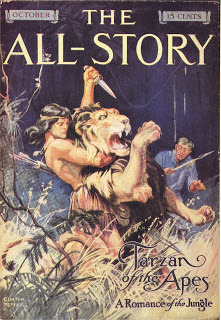 When Tarzan of the Apes crossed my path during the same time period, I gave it short-shrift. I read a few pages, realized it was different from the Tarzan films, but somehow it didn’t resonate with me. At the time, my attention and reading tastes were transitioning from spies to hardboiled detective fiction, a genre which would dominate my to be read pile for years to come. Even when I later discovered the joys of detective pulp fiction magazines, I still steered away from Tarzan and others of his jungle brethren. But last year I had the opportunity to read my buddy Will Murray’s recently published and beautifully packaged Tarzan continuation novel, Return To Pal-ul-don. It was brilliant, and I enjoyed it immensely. Maybe there was something to this Tarzan guy...
When Tarzan of the Apes crossed my path during the same time period, I gave it short-shrift. I read a few pages, realized it was different from the Tarzan films, but somehow it didn’t resonate with me. At the time, my attention and reading tastes were transitioning from spies to hardboiled detective fiction, a genre which would dominate my to be read pile for years to come. Even when I later discovered the joys of detective pulp fiction magazines, I still steered away from Tarzan and others of his jungle brethren. But last year I had the opportunity to read my buddy Will Murray’s recently published and beautifully packaged Tarzan continuation novel, Return To Pal-ul-don. It was brilliant, and I enjoyed it immensely. Maybe there was something to this Tarzan guy...
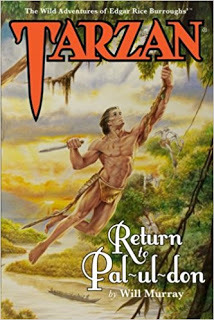 Based on my experience with Tarzan: Return To Pal-ul-don, I decided I should try one of the original Tarzan novels. I knew I had a couple of the ‘70s Tarzan paperbacks on my shelf—collected not for reading purposes, but for the cool Frazetta covers—and a complete Tarzan omnibus hidden somewhere in the cloud connected to my Kindle, but somehow, I was sidetracked by my then burgeoning interest in Western paperback originals from the ‘70s and ‘80s. Finally, a few weeks ago, I was scouring the audio book shelves at my local library where I spotted an attractively packaged, newly released version of Tarzan of the Apeson CD. I snagged it up and was particularly excited as it was read by my favorite voice actor, Simon Prebble.
Based on my experience with Tarzan: Return To Pal-ul-don, I decided I should try one of the original Tarzan novels. I knew I had a couple of the ‘70s Tarzan paperbacks on my shelf—collected not for reading purposes, but for the cool Frazetta covers—and a complete Tarzan omnibus hidden somewhere in the cloud connected to my Kindle, but somehow, I was sidetracked by my then burgeoning interest in Western paperback originals from the ‘70s and ‘80s. Finally, a few weeks ago, I was scouring the audio book shelves at my local library where I spotted an attractively packaged, newly released version of Tarzan of the Apeson CD. I snagged it up and was particularly excited as it was read by my favorite voice actor, Simon Prebble.
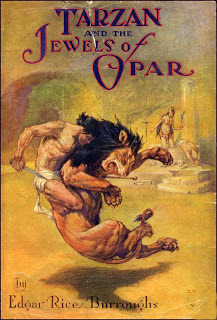 By the second track of the first CD, I couldn’t believe how quickly I was being drawn in to the story. Let’s face it, the concept of Tarzan is ridiculous—which may have been one of the reasons I hadn’t been moved to read the books much earlier. But now, with reading maturity and my own writing career and experience to pull from, I consciously began to listen not only to the story, but to analyze how Edgar Rice Burroughs had constructed his magnificent tale. Yes, the concept stretches a reader’s suspension of disbelief, but ERB realizes this and responds with a brilliant counter intuitive choice to anchor his prose in logical progression. Each scene is built logically from the events of the one before—if you accept the first situation as possible, you accept the next logicalprogression as possible, and the next until you have been led into accepting a reality (an orphan raised by apes who becomes King of the Jungle) you would have rejected on its face.
By the second track of the first CD, I couldn’t believe how quickly I was being drawn in to the story. Let’s face it, the concept of Tarzan is ridiculous—which may have been one of the reasons I hadn’t been moved to read the books much earlier. But now, with reading maturity and my own writing career and experience to pull from, I consciously began to listen not only to the story, but to analyze how Edgar Rice Burroughs had constructed his magnificent tale. Yes, the concept stretches a reader’s suspension of disbelief, but ERB realizes this and responds with a brilliant counter intuitive choice to anchor his prose in logical progression. Each scene is built logically from the events of the one before—if you accept the first situation as possible, you accept the next logicalprogression as possible, and the next until you have been led into accepting a reality (an orphan raised by apes who becomes King of the Jungle) you would have rejected on its face.
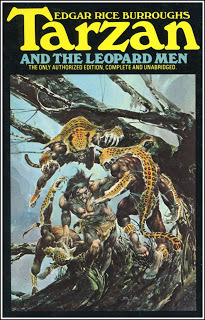 As a reader, your brain accepts this process without question—Yes, that could happen...Yes, that could happen next—and then you are excitedly swinging through the trees with an ape man, engaging in deadly combat with lions and king apes armed only with a sharp knife, and lusting after some dame named Jane. Holy cow! This was splendid stuff brought even more to life by Simon Prebble’s excellent audio performance. Mary was more than right—You can’t read all the good books. There are twenty-four books in the original Tarzan series written by ERB between 1912 and 1965. There are another thirteen authorized continuation novels, including more from my pal Will Murray—who I am holding personally responsible for this new collecting obsession. It appears, my reading dance card is going to be filled for a while as I dip into the promises of the other books in the Tarzan series.
As a reader, your brain accepts this process without question—Yes, that could happen...Yes, that could happen next—and then you are excitedly swinging through the trees with an ape man, engaging in deadly combat with lions and king apes armed only with a sharp knife, and lusting after some dame named Jane. Holy cow! This was splendid stuff brought even more to life by Simon Prebble’s excellent audio performance. Mary was more than right—You can’t read all the good books. There are twenty-four books in the original Tarzan series written by ERB between 1912 and 1965. There are another thirteen authorized continuation novels, including more from my pal Will Murray—who I am holding personally responsible for this new collecting obsession. It appears, my reading dance card is going to be filled for a while as I dip into the promises of the other books in the Tarzan series.
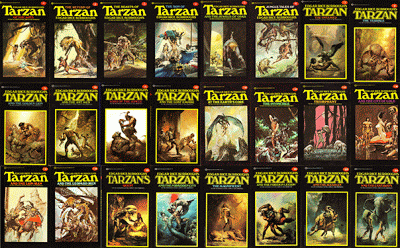 However, my to be read pile—actually, a perilous tower of Babylonian proportions—has grown exponentially with the second phenomena I mentioned (discovering an author—new to you—who grabs your imagination and has a huge backlist of books waiting for you to explore), but the reveal of the experience will have to wait until next week’s column… To visit the official Edgar Rice Burroughs Tarzan website CLICK HERE
However, my to be read pile—actually, a perilous tower of Babylonian proportions—has grown exponentially with the second phenomena I mentioned (discovering an author—new to you—who grabs your imagination and has a huge backlist of books waiting for you to explore), but the reveal of the experience will have to wait until next week’s column… To visit the official Edgar Rice Burroughs Tarzan website CLICK HERE
 ALL THE GOOD BOOKS—PART ONE My friend Mary, an omnivorous reader, is a wonderful woman who owned a cramped , but cool independent bookstore near my home. When Mary retired, the store was sold to another wonderful woman who moved it a mile away to a new location. Despite her retiredstatus, Mary volunteers in the store two or three days a week, continuing to help others find great books for which they might not even know they are looking. Mary and I were chatting in the store recently when she confessed she’d celebrated her 86th birthday a week earlier. When I offered my condolences, Mary zinged me a quizzical look and told me in firm tones, “I’m shooting for ninety.” “And I’m sure you’ll make it,” I said, then gestured at the high towers of books forming a literary skyline around us. “I offered my condolences because at eighty-six there can’t possibly be any good books left to read.” Mary’s eyes sparked with a cliché twinkle before she whacked my arm with a left hook she stole from Muhammad Ali. “Don’t be silly,” she said. “You can’t possibly read all the good books—no matter how long you live.”
ALL THE GOOD BOOKS—PART ONE My friend Mary, an omnivorous reader, is a wonderful woman who owned a cramped , but cool independent bookstore near my home. When Mary retired, the store was sold to another wonderful woman who moved it a mile away to a new location. Despite her retiredstatus, Mary volunteers in the store two or three days a week, continuing to help others find great books for which they might not even know they are looking. Mary and I were chatting in the store recently when she confessed she’d celebrated her 86th birthday a week earlier. When I offered my condolences, Mary zinged me a quizzical look and told me in firm tones, “I’m shooting for ninety.” “And I’m sure you’ll make it,” I said, then gestured at the high towers of books forming a literary skyline around us. “I offered my condolences because at eighty-six there can’t possibly be any good books left to read.” Mary’s eyes sparked with a cliché twinkle before she whacked my arm with a left hook she stole from Muhammad Ali. “Don’t be silly,” she said. “You can’t possibly read all the good books—no matter how long you live.”
 According to bumper sticker psychiatry there is no such thing as a bad child, only bad parents. Perhaps this existential bit of nonsense can be skewed for the literary world to claim there are no bad books, only bad authors. However, if all books started out good, there are many in dire need of therapy after being screwed up by their literary parents. Over the years, a lot of books have failed to make it past my personal fifty page cut. Basically, if I’m not engaged in a book by page fifty, it’s tossed in the pile destined for a Friends of the Library sale. There seem to be a lot more in this category as my age increases and my patience shrinks. My fifty page cut eventually became a forty page cut, and then a thirty page cut. Currently, it hovers somewhere around twenty-five.
According to bumper sticker psychiatry there is no such thing as a bad child, only bad parents. Perhaps this existential bit of nonsense can be skewed for the literary world to claim there are no bad books, only bad authors. However, if all books started out good, there are many in dire need of therapy after being screwed up by their literary parents. Over the years, a lot of books have failed to make it past my personal fifty page cut. Basically, if I’m not engaged in a book by page fifty, it’s tossed in the pile destined for a Friends of the Library sale. There seem to be a lot more in this category as my age increases and my patience shrinks. My fifty page cut eventually became a forty page cut, and then a thirty page cut. Currently, it hovers somewhere around twenty-five.
 My friend Mary is right—You can’t possibly read all the good books no matter how long you live. Consequently, there is no upside to finishing any book you are not enjoying (unless there are mitigating factors requiring you to deal with the malefactor). Bad books may only be good books forced into bad behavior by their literary parents, but there are too many well behaved books waiting to fill you with wonder and enjoyment.
My friend Mary is right—You can’t possibly read all the good books no matter how long you live. Consequently, there is no upside to finishing any book you are not enjoying (unless there are mitigating factors requiring you to deal with the malefactor). Bad books may only be good books forced into bad behavior by their literary parents, but there are too many well behaved books waiting to fill you with wonder and enjoyment.
 Many good books grow up to be class valedictorians. These are the books in which you become fully immersed—baptized in the water of their pages—and are often touched with despair whenever you turn their last page. You gently close the covers and are unwillingly transported back into this world—where you are gobsmacked to find everyone is carrying on normally as if your emotional crisis hadn’t occurred. Like Mary, I am an omnivorous reader. Many a genre has fallen before me and yielded up its secrets. I understand too well the anguish of turning the last page of a stunning standalone novel or the last book in a beloved series.
Many good books grow up to be class valedictorians. These are the books in which you become fully immersed—baptized in the water of their pages—and are often touched with despair whenever you turn their last page. You gently close the covers and are unwillingly transported back into this world—where you are gobsmacked to find everyone is carrying on normally as if your emotional crisis hadn’t occurred. Like Mary, I am an omnivorous reader. Many a genre has fallen before me and yielded up its secrets. I understand too well the anguish of turning the last page of a stunning standalone novel or the last book in a beloved series.
 I also know the joy of unexpectedly perceiving a book, a series, or overlooked author through a different and intriguing prism—opening up a whole new realm of obsessive reading. The companion to this experience is discovering an author whose books serendipitously enter your orbit with all the subtly of a hurtling giant asteroid. You tentatively try one title and are immediately captivated by a new world and delight in knowing the author has a huge backlist of books waiting for you to explore. Recently, it has been my good fortune to experience both phenomena. In my pre-teen adolescence of the mid-sixties everything was all about spies. James Bond, The Man From U.N.C.L.E., Our Man Flint, Mission Impossible, I Spy, Secret Agent, The Wild Wild West, Get Smart, and other swinging spies dominate television and the big screen. I was as hooked as any junkie, and my reading habits were all about mainlining related source material, TV tie-in novels, and anything else espionage related the local bookmobile could provide. I discovered Len Deighton’s redoubtable spy Harry Palmer, Donald Hamilton’s all-American agent Matt Helm (the book version as opposed to the nonsense of the Dean Martin movies), and I even came in out of the cold with John le Carré.
I also know the joy of unexpectedly perceiving a book, a series, or overlooked author through a different and intriguing prism—opening up a whole new realm of obsessive reading. The companion to this experience is discovering an author whose books serendipitously enter your orbit with all the subtly of a hurtling giant asteroid. You tentatively try one title and are immediately captivated by a new world and delight in knowing the author has a huge backlist of books waiting for you to explore. Recently, it has been my good fortune to experience both phenomena. In my pre-teen adolescence of the mid-sixties everything was all about spies. James Bond, The Man From U.N.C.L.E., Our Man Flint, Mission Impossible, I Spy, Secret Agent, The Wild Wild West, Get Smart, and other swinging spies dominate television and the big screen. I was as hooked as any junkie, and my reading habits were all about mainlining related source material, TV tie-in novels, and anything else espionage related the local bookmobile could provide. I discovered Len Deighton’s redoubtable spy Harry Palmer, Donald Hamilton’s all-American agent Matt Helm (the book version as opposed to the nonsense of the Dean Martin movies), and I even came in out of the cold with John le Carré.
 When Tarzan of the Apes crossed my path during the same time period, I gave it short-shrift. I read a few pages, realized it was different from the Tarzan films, but somehow it didn’t resonate with me. At the time, my attention and reading tastes were transitioning from spies to hardboiled detective fiction, a genre which would dominate my to be read pile for years to come. Even when I later discovered the joys of detective pulp fiction magazines, I still steered away from Tarzan and others of his jungle brethren. But last year I had the opportunity to read my buddy Will Murray’s recently published and beautifully packaged Tarzan continuation novel, Return To Pal-ul-don. It was brilliant, and I enjoyed it immensely. Maybe there was something to this Tarzan guy...
When Tarzan of the Apes crossed my path during the same time period, I gave it short-shrift. I read a few pages, realized it was different from the Tarzan films, but somehow it didn’t resonate with me. At the time, my attention and reading tastes were transitioning from spies to hardboiled detective fiction, a genre which would dominate my to be read pile for years to come. Even when I later discovered the joys of detective pulp fiction magazines, I still steered away from Tarzan and others of his jungle brethren. But last year I had the opportunity to read my buddy Will Murray’s recently published and beautifully packaged Tarzan continuation novel, Return To Pal-ul-don. It was brilliant, and I enjoyed it immensely. Maybe there was something to this Tarzan guy...
 Based on my experience with Tarzan: Return To Pal-ul-don, I decided I should try one of the original Tarzan novels. I knew I had a couple of the ‘70s Tarzan paperbacks on my shelf—collected not for reading purposes, but for the cool Frazetta covers—and a complete Tarzan omnibus hidden somewhere in the cloud connected to my Kindle, but somehow, I was sidetracked by my then burgeoning interest in Western paperback originals from the ‘70s and ‘80s. Finally, a few weeks ago, I was scouring the audio book shelves at my local library where I spotted an attractively packaged, newly released version of Tarzan of the Apeson CD. I snagged it up and was particularly excited as it was read by my favorite voice actor, Simon Prebble.
Based on my experience with Tarzan: Return To Pal-ul-don, I decided I should try one of the original Tarzan novels. I knew I had a couple of the ‘70s Tarzan paperbacks on my shelf—collected not for reading purposes, but for the cool Frazetta covers—and a complete Tarzan omnibus hidden somewhere in the cloud connected to my Kindle, but somehow, I was sidetracked by my then burgeoning interest in Western paperback originals from the ‘70s and ‘80s. Finally, a few weeks ago, I was scouring the audio book shelves at my local library where I spotted an attractively packaged, newly released version of Tarzan of the Apeson CD. I snagged it up and was particularly excited as it was read by my favorite voice actor, Simon Prebble.
 By the second track of the first CD, I couldn’t believe how quickly I was being drawn in to the story. Let’s face it, the concept of Tarzan is ridiculous—which may have been one of the reasons I hadn’t been moved to read the books much earlier. But now, with reading maturity and my own writing career and experience to pull from, I consciously began to listen not only to the story, but to analyze how Edgar Rice Burroughs had constructed his magnificent tale. Yes, the concept stretches a reader’s suspension of disbelief, but ERB realizes this and responds with a brilliant counter intuitive choice to anchor his prose in logical progression. Each scene is built logically from the events of the one before—if you accept the first situation as possible, you accept the next logicalprogression as possible, and the next until you have been led into accepting a reality (an orphan raised by apes who becomes King of the Jungle) you would have rejected on its face.
By the second track of the first CD, I couldn’t believe how quickly I was being drawn in to the story. Let’s face it, the concept of Tarzan is ridiculous—which may have been one of the reasons I hadn’t been moved to read the books much earlier. But now, with reading maturity and my own writing career and experience to pull from, I consciously began to listen not only to the story, but to analyze how Edgar Rice Burroughs had constructed his magnificent tale. Yes, the concept stretches a reader’s suspension of disbelief, but ERB realizes this and responds with a brilliant counter intuitive choice to anchor his prose in logical progression. Each scene is built logically from the events of the one before—if you accept the first situation as possible, you accept the next logicalprogression as possible, and the next until you have been led into accepting a reality (an orphan raised by apes who becomes King of the Jungle) you would have rejected on its face.
 As a reader, your brain accepts this process without question—Yes, that could happen...Yes, that could happen next—and then you are excitedly swinging through the trees with an ape man, engaging in deadly combat with lions and king apes armed only with a sharp knife, and lusting after some dame named Jane. Holy cow! This was splendid stuff brought even more to life by Simon Prebble’s excellent audio performance. Mary was more than right—You can’t read all the good books. There are twenty-four books in the original Tarzan series written by ERB between 1912 and 1965. There are another thirteen authorized continuation novels, including more from my pal Will Murray—who I am holding personally responsible for this new collecting obsession. It appears, my reading dance card is going to be filled for a while as I dip into the promises of the other books in the Tarzan series.
As a reader, your brain accepts this process without question—Yes, that could happen...Yes, that could happen next—and then you are excitedly swinging through the trees with an ape man, engaging in deadly combat with lions and king apes armed only with a sharp knife, and lusting after some dame named Jane. Holy cow! This was splendid stuff brought even more to life by Simon Prebble’s excellent audio performance. Mary was more than right—You can’t read all the good books. There are twenty-four books in the original Tarzan series written by ERB between 1912 and 1965. There are another thirteen authorized continuation novels, including more from my pal Will Murray—who I am holding personally responsible for this new collecting obsession. It appears, my reading dance card is going to be filled for a while as I dip into the promises of the other books in the Tarzan series.
 However, my to be read pile—actually, a perilous tower of Babylonian proportions—has grown exponentially with the second phenomena I mentioned (discovering an author—new to you—who grabs your imagination and has a huge backlist of books waiting for you to explore), but the reveal of the experience will have to wait until next week’s column… To visit the official Edgar Rice Burroughs Tarzan website CLICK HERE
However, my to be read pile—actually, a perilous tower of Babylonian proportions—has grown exponentially with the second phenomena I mentioned (discovering an author—new to you—who grabs your imagination and has a huge backlist of books waiting for you to explore), but the reveal of the experience will have to wait until next week’s column… To visit the official Edgar Rice Burroughs Tarzan website CLICK HERE
Published on May 05, 2017 09:06
May 1, 2017
THE WAR FOR THE POST—APOCALYPTIC SKIES
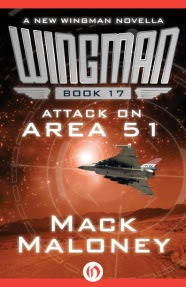
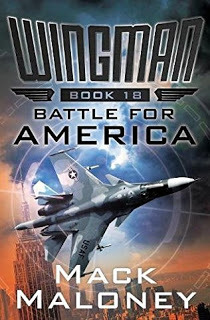 THE WAR FOR THE POST—APOCALYPTIC SKIES Sold on the simple premise—Mad Max with rock star fighter pilots and their hot rod planes after WWIII—the Wingman novels morphed into one of the biggest selling post-apocalyptic military action series of the ‘80s and ‘90s. Written by Mack Maloney, the Wingmannovels—and those in the other successful futuristic/sci-fi series created by Maloney—are direct descendants of the paperback original men’s adventure series, which overran the spinner racks during the ‘60s and ‘70s.
THE WAR FOR THE POST—APOCALYPTIC SKIES Sold on the simple premise—Mad Max with rock star fighter pilots and their hot rod planes after WWIII—the Wingman novels morphed into one of the biggest selling post-apocalyptic military action series of the ‘80s and ‘90s. Written by Mack Maloney, the Wingmannovels—and those in the other successful futuristic/sci-fi series created by Maloney—are direct descendants of the paperback original men’s adventure series, which overran the spinner racks during the ‘60s and ‘70s.
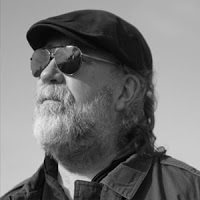 Lean, hard, filled with fast moving muscular prose, a Mack Maloney novel promises an escape into a dangerous world where a hero, such as Wingman’s Zen fighter pilot Hawk Hunter, must rise against the tides of darkness, destruction, and chaos—all under the banner of a tattered, but proud American flag. In 1999, after sixteen novels, Maloney put his Wingman series on hiatus as demands of other writing projects took precedent. Moving from strength to strength, Maloney created an unprecedented run of successful series in his chosen genre, including Chopper Ops, Starhawk, Superhawks, Pirate Hunters, and Strikemasters.
Lean, hard, filled with fast moving muscular prose, a Mack Maloney novel promises an escape into a dangerous world where a hero, such as Wingman’s Zen fighter pilot Hawk Hunter, must rise against the tides of darkness, destruction, and chaos—all under the banner of a tattered, but proud American flag. In 1999, after sixteen novels, Maloney put his Wingman series on hiatus as demands of other writing projects took precedent. Moving from strength to strength, Maloney created an unprecedented run of successful series in his chosen genre, including Chopper Ops, Starhawk, Superhawks, Pirate Hunters, and Strikemasters.
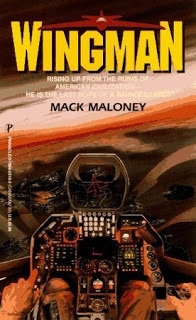 In 2013—fourteen years after the 16th Wingman novel (The Tomorrow War)—Maloney again put out a call for his old buddy, US Air Force Major Hawk Hunter and his crew of hardened patriotic ex-military fighters. With the support of a new publisher—Open Road Media —making Maloney’s backlist readily available again, Wingmanwas once more ready for battle. This time, Hawk Hunter and his crew were needed to save America from another threat of Armageddon in Wingman #17: Attack On Area 51, a 30,000 word novella reestablishing the world of Wingman.
In 2013—fourteen years after the 16th Wingman novel (The Tomorrow War)—Maloney again put out a call for his old buddy, US Air Force Major Hawk Hunter and his crew of hardened patriotic ex-military fighters. With the support of a new publisher—Open Road Media —making Maloney’s backlist readily available again, Wingmanwas once more ready for battle. This time, Hawk Hunter and his crew were needed to save America from another threat of Armageddon in Wingman #17: Attack On Area 51, a 30,000 word novella reestablishing the world of Wingman.
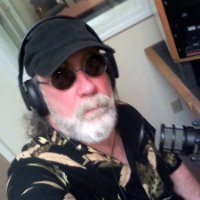 The 18th book in the Wingman series, Battle For America, will be published this May pitting Hawk Hunter—returning from a space odyssey to divert a hurtling comet—against a 60,000 strong, heavily armed Russian army occupying New York, and the deadly threat of personal betrayal...America is once again facing anarchy in the streets and in the air, and only the flashing fingers of Mack Maloney on his keyboard can save us. During a lull in the current battle, Mack has stepped into the interrogation room for a quick debriefing…******** What would a Pentagon update tell us about the background of Mack Maloney?
The 18th book in the Wingman series, Battle For America, will be published this May pitting Hawk Hunter—returning from a space odyssey to divert a hurtling comet—against a 60,000 strong, heavily armed Russian army occupying New York, and the deadly threat of personal betrayal...America is once again facing anarchy in the streets and in the air, and only the flashing fingers of Mack Maloney on his keyboard can save us. During a lull in the current battle, Mack has stepped into the interrogation room for a quick debriefing…******** What would a Pentagon update tell us about the background of Mack Maloney?
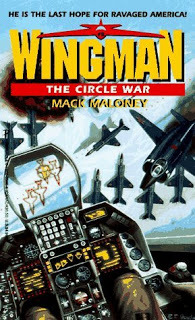 Not much, I hope. Grew up in the Dorchester section of Boston, Catholic grade school, technical high school, went to college instead of going into the military. Became a sportswriter out of college and then worked as a flack for GE. Now writes military books and has a military-themed radio show. I think I’m pretty clean as far as the Pentagon goes, though I used to wonder, because back in college in the 70s I was friends with people in the SDS, and they were affiliated with the Weathermen and off we go. But I’ve had some experience with security clearances since then and I think all that would have come up by now. Maybe they weren’t watching as closely as we thought they were back then. It would be a different story these days.
What brought you back to Hawk Hunter and Wingman after a decade hiatus?
Not much, I hope. Grew up in the Dorchester section of Boston, Catholic grade school, technical high school, went to college instead of going into the military. Became a sportswriter out of college and then worked as a flack for GE. Now writes military books and has a military-themed radio show. I think I’m pretty clean as far as the Pentagon goes, though I used to wonder, because back in college in the 70s I was friends with people in the SDS, and they were affiliated with the Weathermen and off we go. But I’ve had some experience with security clearances since then and I think all that would have come up by now. Maybe they weren’t watching as closely as we thought they were back then. It would be a different story these days.
What brought you back to Hawk Hunter and Wingman after a decade hiatus?
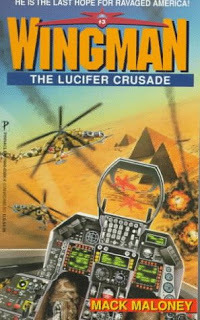 By the 16th book we’d run out of enemies. This was the late nineties and the Russians were our friends. The terrorists’ threat wasn’t quite as scary as it is now and you can only fight the Fourth Reich Nazis for so long before it gets ho-hum. I grew up reading nothing but science fiction, including lots of Ace Doubles. Through a bit of agent maneuvering, I was able to continue the Wingman series at Ace Science Fiction for five more books and re-invent it in a way. Basically Hawk Hunter goes 5,000 years into the future and becomes a new hero named Starhawk. His F-16 is now able to go two light years a second. People really liked those books and I liked writing them. But then the rights to all the previous Wingmanbooks came back to us, Open Road Media started re-publishing them and the original series became a hit again. Someone suggested I write a novella tying the Starhawk series back to the original Wingmans and that became Attack on Area 51. People liked it, so the next step was to write a brand new full-length Wingman novel and that’s Wingman #18: Battle for America. I think it’s 115,000 words. As a writer, I’m sure you can appreciate that. It was a lot of typing.
You’ve said you hadn’t read other post-apocalyptic military action novels before you started writing the Wingman series
. Was this a hindrance or a help? How were you able to hit the genre sweet spot while flying blind and not knowing where the target was—something of a challenge even for Hawk Hunter?
By the 16th book we’d run out of enemies. This was the late nineties and the Russians were our friends. The terrorists’ threat wasn’t quite as scary as it is now and you can only fight the Fourth Reich Nazis for so long before it gets ho-hum. I grew up reading nothing but science fiction, including lots of Ace Doubles. Through a bit of agent maneuvering, I was able to continue the Wingman series at Ace Science Fiction for five more books and re-invent it in a way. Basically Hawk Hunter goes 5,000 years into the future and becomes a new hero named Starhawk. His F-16 is now able to go two light years a second. People really liked those books and I liked writing them. But then the rights to all the previous Wingmanbooks came back to us, Open Road Media started re-publishing them and the original series became a hit again. Someone suggested I write a novella tying the Starhawk series back to the original Wingmans and that became Attack on Area 51. People liked it, so the next step was to write a brand new full-length Wingman novel and that’s Wingman #18: Battle for America. I think it’s 115,000 words. As a writer, I’m sure you can appreciate that. It was a lot of typing.
You’ve said you hadn’t read other post-apocalyptic military action novels before you started writing the Wingman series
. Was this a hindrance or a help? How were you able to hit the genre sweet spot while flying blind and not knowing where the target was—something of a challenge even for Hawk Hunter?
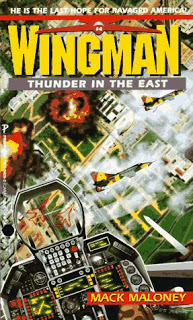 I was very lucky. I’d co-written a couple non-fiction books and in the process was able to get an agent. This was the mid-80s. Top Gun was a huge movie and Tom Clancy was like a superstar. And there were a lot of Mad Max-type pulp books around. Through a friend, I was hired to write the last book in a series called the Outrider. Post-apocalyptic, motorcycle-riding hero in a world full of zombies, freaks, mutants, dwarves, teen-age hookers, the works. I inherited the pen name, Dick Harding, if you can believe it. They discontinued the line before the book could come out, but I got paid a thousand dollars and, more importantly, without even really thinking about it, I had sat down and written a novel in like two months. Later on, my agent asked me for some ideas he could pitch, and I said, how about Mad Max in an airplane. He used the Outrider book as my writing sample, Zebra Books signed me up, and here we are. But it was all in the timing. If Top Gun had been a flop or if Tom Clancy had stayed an insurance salesman, I wouldn’t be here talking to you.
Did you do much research before starting the Wingman series, or did you rely on your store of common knowledge to make everything up as you went along?
I was very lucky. I’d co-written a couple non-fiction books and in the process was able to get an agent. This was the mid-80s. Top Gun was a huge movie and Tom Clancy was like a superstar. And there were a lot of Mad Max-type pulp books around. Through a friend, I was hired to write the last book in a series called the Outrider. Post-apocalyptic, motorcycle-riding hero in a world full of zombies, freaks, mutants, dwarves, teen-age hookers, the works. I inherited the pen name, Dick Harding, if you can believe it. They discontinued the line before the book could come out, but I got paid a thousand dollars and, more importantly, without even really thinking about it, I had sat down and written a novel in like two months. Later on, my agent asked me for some ideas he could pitch, and I said, how about Mad Max in an airplane. He used the Outrider book as my writing sample, Zebra Books signed me up, and here we are. But it was all in the timing. If Top Gun had been a flop or if Tom Clancy had stayed an insurance salesman, I wouldn’t be here talking to you.
Did you do much research before starting the Wingman series, or did you rely on your store of common knowledge to make everything up as you went along?
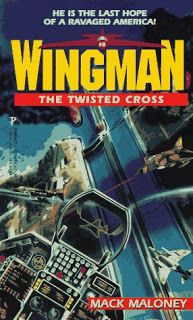 The first few books I had to rely on common knowledge because I wrote them so fast. Zebra wanted four books a year and I was still working as a PR guy for GE at the time. So I’d get up at 4 AM, write until 7AM, go to work, come home and write until 11PM or so. I did that day after day for a long time, so there was almost no time to do any in-depth research. As far as storylines, Zebra always needed a three-paragraph outline before I started a new book—these were the words that would eventually wind up on back cover. So I’d write those three paragraphs, always emphasizing the airplanes and dogfights and so on, and then get the OK to do the entire book. From there it was nothing but making it up as it went along. Just typing pages and pages of raw, misspelled words, getting the plot down before going back correcting it, editing and re-editing. It was nuts—and still, I was turning them in late which drove the publisher crazy. I lived in Saratoga NY at the time, right next to the famous race track, and my editor would leave messages on my answering machine like: Where the hell is the book! And by the way, could you put ten bucks on a horse for me in the sixth? This went on for almost three years before I was able to quit my job at GE and write full-time. Looking back on it, it was a real grind, but on another level, it was blast.
As Wingman and your other series progressed did you find a need for more or less research?
The first few books I had to rely on common knowledge because I wrote them so fast. Zebra wanted four books a year and I was still working as a PR guy for GE at the time. So I’d get up at 4 AM, write until 7AM, go to work, come home and write until 11PM or so. I did that day after day for a long time, so there was almost no time to do any in-depth research. As far as storylines, Zebra always needed a three-paragraph outline before I started a new book—these were the words that would eventually wind up on back cover. So I’d write those three paragraphs, always emphasizing the airplanes and dogfights and so on, and then get the OK to do the entire book. From there it was nothing but making it up as it went along. Just typing pages and pages of raw, misspelled words, getting the plot down before going back correcting it, editing and re-editing. It was nuts—and still, I was turning them in late which drove the publisher crazy. I lived in Saratoga NY at the time, right next to the famous race track, and my editor would leave messages on my answering machine like: Where the hell is the book! And by the way, could you put ten bucks on a horse for me in the sixth? This went on for almost three years before I was able to quit my job at GE and write full-time. Looking back on it, it was a real grind, but on another level, it was blast.
As Wingman and your other series progressed did you find a need for more or less research?
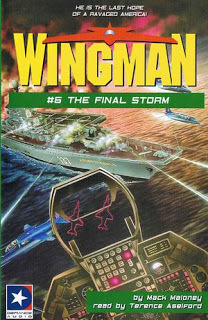 I pretty much had all the aircraft and weaponry down at first. My father was a World War Two vet and he used to read military books, especially about aviation. There were always lots of them around the house and I used to go through them, looking at the pictures before I could even read. Eventually, I knew every airplane the US military had ever built. Some kids grew up memorizing the back of baseball cards—I grew up reading my father’s airplane books. So when Zebra bought Wingman, I was able to put that knowledge to good use. Later on, when the Internet came into being, it became a lot easier just to look things up, so there’s more research in the later books.
There is a refreshing difference in your approach to a post-apocalyptic American response. Your character’s actions and philosophies are patriotic, but without pushing a hardcore rightwing, xenophobic agenda. This is not the world as seen through the eyes of William Johnstone’s Ashes series or Jerry Ahern’s Survivalist series. Was this a conscious decision on your part? Is it noticed and commented on by your readers? Did your publisher ever encourage you to stray from this course?
I pretty much had all the aircraft and weaponry down at first. My father was a World War Two vet and he used to read military books, especially about aviation. There were always lots of them around the house and I used to go through them, looking at the pictures before I could even read. Eventually, I knew every airplane the US military had ever built. Some kids grew up memorizing the back of baseball cards—I grew up reading my father’s airplane books. So when Zebra bought Wingman, I was able to put that knowledge to good use. Later on, when the Internet came into being, it became a lot easier just to look things up, so there’s more research in the later books.
There is a refreshing difference in your approach to a post-apocalyptic American response. Your character’s actions and philosophies are patriotic, but without pushing a hardcore rightwing, xenophobic agenda. This is not the world as seen through the eyes of William Johnstone’s Ashes series or Jerry Ahern’s Survivalist series. Was this a conscious decision on your part? Is it noticed and commented on by your readers? Did your publisher ever encourage you to stray from this course?
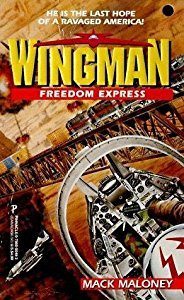 Well, I’m not a right-wing type of guy. I grew up in the ‘60s and it was all about love and peace and music, but at the same time, the Vietnam War was going on. I knew people who went to Vietnam. My older brother was there, and on one hand you try to be patriotic, but on the other, it was becoming clear the whole thing was going south. I remember a turning point around 1969. I was in a gang in Dorchester back then—not a street gang as you think of them now, more like an old ‘50s gang. A bunch of us went to this enormous party for a guy we knew from another gang who’d just come back from Vietnam. We were at a lake, and we were all loaded, drinking and so on, but the guy himself just sat there, staring off into the distance for the whole time. He was a mess. Just about the only thing he said to us was, I saw a lot of guys killed over there trying to be John Wayne. That really stuck with me and I started questioning, what is this all for really? Fifty thousand American soldiers killed, two million Vietnamese. For what? Politics? It really started to turn me against the whole thing and when I went to college I got the full treatment from the other point of view. I know sometimes you just have to go, like World War Two and the first Gulf War. But you know, the people who start these other crazy wars are never the ones out there getting shot at. It’s easy to do when your own ass isn’t on the line. So, when Wingman came along, I didn’t want the character to be one of these lock-step guys who was fighting for some right wing agenda. I wanted the character to be a patriot, someone who loved this country because of the people who lived here and what they stood for, not because of the politics or some fat-cat generals getting their jollies. Zebra never said a word to me about it and the strange thing is, not one reader ever complained either. No one ever wrote to me and said they thought Hawk Hunter was too much of a commie. But lots wrote to me and said I joined the military because that’s the kind of patriot I want to be.
Do you see your post-apocalyptic stories as entertainment, a warning, both?
Pure entertainment. I think at this point it’s probably too late for any kind of warning.
When you set out to create a new series, what goes into your thought process?
Just to create a character that people will like without over-doing it and to give them some kind of cool piece of machinery with which to do their thing. A jet fighter is the best because they’re sexy and can go fast, so it’s like you’re always moving. Helicopters are cool too, except you find yourself always having to refuel them, so you have to invent different ways to gas them up without slowing down the action.
Your first books were pop culture television reference works. How do the media influences of your youth continue to inspire you?
Well, I’m not a right-wing type of guy. I grew up in the ‘60s and it was all about love and peace and music, but at the same time, the Vietnam War was going on. I knew people who went to Vietnam. My older brother was there, and on one hand you try to be patriotic, but on the other, it was becoming clear the whole thing was going south. I remember a turning point around 1969. I was in a gang in Dorchester back then—not a street gang as you think of them now, more like an old ‘50s gang. A bunch of us went to this enormous party for a guy we knew from another gang who’d just come back from Vietnam. We were at a lake, and we were all loaded, drinking and so on, but the guy himself just sat there, staring off into the distance for the whole time. He was a mess. Just about the only thing he said to us was, I saw a lot of guys killed over there trying to be John Wayne. That really stuck with me and I started questioning, what is this all for really? Fifty thousand American soldiers killed, two million Vietnamese. For what? Politics? It really started to turn me against the whole thing and when I went to college I got the full treatment from the other point of view. I know sometimes you just have to go, like World War Two and the first Gulf War. But you know, the people who start these other crazy wars are never the ones out there getting shot at. It’s easy to do when your own ass isn’t on the line. So, when Wingman came along, I didn’t want the character to be one of these lock-step guys who was fighting for some right wing agenda. I wanted the character to be a patriot, someone who loved this country because of the people who lived here and what they stood for, not because of the politics or some fat-cat generals getting their jollies. Zebra never said a word to me about it and the strange thing is, not one reader ever complained either. No one ever wrote to me and said they thought Hawk Hunter was too much of a commie. But lots wrote to me and said I joined the military because that’s the kind of patriot I want to be.
Do you see your post-apocalyptic stories as entertainment, a warning, both?
Pure entertainment. I think at this point it’s probably too late for any kind of warning.
When you set out to create a new series, what goes into your thought process?
Just to create a character that people will like without over-doing it and to give them some kind of cool piece of machinery with which to do their thing. A jet fighter is the best because they’re sexy and can go fast, so it’s like you’re always moving. Helicopters are cool too, except you find yourself always having to refuel them, so you have to invent different ways to gas them up without slowing down the action.
Your first books were pop culture television reference works. How do the media influences of your youth continue to inspire you?
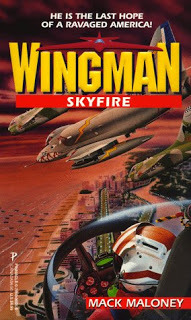 Yes, I co-wrote two non-fiction books way back when. One was on the old Alfred Hitchcock show and another on the Perry Mason show. I used to watch them as a kid, but frankly I was more into shows like Twilight Zone and Outer Limits. Any kind of creature feature or science fiction movie, I was all over it. There really wasn’t much of that stuff around until Star Trek, so I had to look for it, but that was definitely my thing back then and still is. I’d say Twilight Zone had the biggest influence on me. I still love watching it today. It’s just so freaking weird.
There is a intermingling of humor and an amount of cool MacGuyverism inventiveness in all of your books. Is this endemic to the way you write or a purposeful blending you are conscious of as the pages flow?
Yes, I co-wrote two non-fiction books way back when. One was on the old Alfred Hitchcock show and another on the Perry Mason show. I used to watch them as a kid, but frankly I was more into shows like Twilight Zone and Outer Limits. Any kind of creature feature or science fiction movie, I was all over it. There really wasn’t much of that stuff around until Star Trek, so I had to look for it, but that was definitely my thing back then and still is. I’d say Twilight Zone had the biggest influence on me. I still love watching it today. It’s just so freaking weird.
There is a intermingling of humor and an amount of cool MacGuyverism inventiveness in all of your books. Is this endemic to the way you write or a purposeful blending you are conscious of as the pages flow?
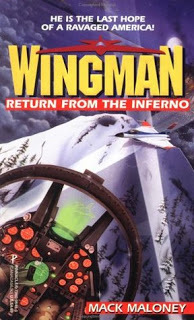 I think you could call it, unconscious blending. I mean, Lifecan be really funny at times, so there’s no reason a story about a post-World War Three jet fighter hero can’t have some humorous moments in it. It’s also a way of keeping it light, and not dragging around that tired right-wing agenda for every book. To me, that’s the opposite of fun. But I never think, Okay, let’s put a funny part right here. It just happens. The MacGuyerisms just come with any story that has the good guy underdogs battling some enormous bad guy army. In fact, the guy who played MacGuyver, Richard Dean Anderson, was a kind of model for Hawk Hunter. I always imagined him playing Hunter in a Wingman movie. At one point, we actually talked to his agent about it, but he had already signed on to do another TV series, so it didn’t happen. It was a long shot, but I think it would have been cool.
What can you reveal about the story of Wingman: Battle For America, and what do you envision for the future of the Wingman series?
I think you could call it, unconscious blending. I mean, Lifecan be really funny at times, so there’s no reason a story about a post-World War Three jet fighter hero can’t have some humorous moments in it. It’s also a way of keeping it light, and not dragging around that tired right-wing agenda for every book. To me, that’s the opposite of fun. But I never think, Okay, let’s put a funny part right here. It just happens. The MacGuyerisms just come with any story that has the good guy underdogs battling some enormous bad guy army. In fact, the guy who played MacGuyver, Richard Dean Anderson, was a kind of model for Hawk Hunter. I always imagined him playing Hunter in a Wingman movie. At one point, we actually talked to his agent about it, but he had already signed on to do another TV series, so it didn’t happen. It was a long shot, but I think it would have been cool.
What can you reveal about the story of Wingman: Battle For America, and what do you envision for the future of the Wingman series?
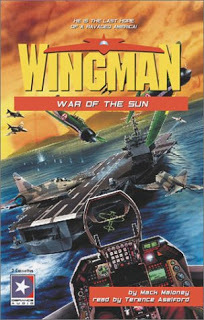 Again, the idea was to write a full-length Wingman novel, just like the original books. In those years when I was doing other things, a lot of people wrote me and asked when is Wingman coming back, so that was the goal. It’s convenient that the Russians are our adversaries again, and it was a chance to bring back a lot of the characters who appeared in the earlier books. On one level, the Russians have taken over New York City and Wingman and his friends try to throw them out, even though the odds are stacked very high against them. His girlfriend Dominique is involved, of course, but this time she’s more than just eye candy. There’s also that doing the most with the least angle that’s in a lot of the original books and there’s a surprise ending. The cover shows Hunter flying a Russian Su-34 jet fighter with USAF markings. How that comes to be is really the basis of the story. As for what’s next for Wingman, who knows? The re-prints are a big hit, way bigger than I ever thought would happen. I mean, combined with the other books, we’ve topped 1.1 million books. But if we knew the future, I think we’d be sitting at the racetrack right now.
Bestselling writer, successful music promoter, innovative CD producer (Sky Club—aliens recreating music found on a dead astronaut’s i-Pod), popular radio show host (Military X-Files), UFO enthusiast...What does your daily schedule look like, how do you fit it all in with family responsibilities, and what do you do to relax?
Again, the idea was to write a full-length Wingman novel, just like the original books. In those years when I was doing other things, a lot of people wrote me and asked when is Wingman coming back, so that was the goal. It’s convenient that the Russians are our adversaries again, and it was a chance to bring back a lot of the characters who appeared in the earlier books. On one level, the Russians have taken over New York City and Wingman and his friends try to throw them out, even though the odds are stacked very high against them. His girlfriend Dominique is involved, of course, but this time she’s more than just eye candy. There’s also that doing the most with the least angle that’s in a lot of the original books and there’s a surprise ending. The cover shows Hunter flying a Russian Su-34 jet fighter with USAF markings. How that comes to be is really the basis of the story. As for what’s next for Wingman, who knows? The re-prints are a big hit, way bigger than I ever thought would happen. I mean, combined with the other books, we’ve topped 1.1 million books. But if we knew the future, I think we’d be sitting at the racetrack right now.
Bestselling writer, successful music promoter, innovative CD producer (Sky Club—aliens recreating music found on a dead astronaut’s i-Pod), popular radio show host (Military X-Files), UFO enthusiast...What does your daily schedule look like, how do you fit it all in with family responsibilities, and what do you do to relax?
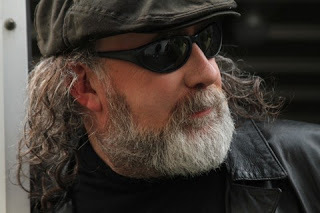 I need a nap just hearing all that. It seems like a lot and it is, but again, I’m just lucky I’m in a situation where I can do other things while I’m still writing books. We do all the music production in Boston, which is just an hour train ride away. We do the radio show at a station right here in our little town, so that’s really convenient as well. For the most part, I take the morning to do any kind of business that’s happening and then start writing in the afternoon and into the night. Thank you, Red Bull. I have a very understanding wife and that’s really the most important thing. We live in a nice place on the ocean. Nothing too crazy, just a nice beach house in a nice location. I have the MLB TV package so there’s usually a baseball game on. During football season, it’s New England Patriots 24/7. And I’ve always got some kind of music playing somewhere in the background and the refrigerator is always close by. I guess, in a way, I’m relaxing a lot of the time—unless I’m approaching a deadline. Then it becomes a certain kind of hell.
I need a nap just hearing all that. It seems like a lot and it is, but again, I’m just lucky I’m in a situation where I can do other things while I’m still writing books. We do all the music production in Boston, which is just an hour train ride away. We do the radio show at a station right here in our little town, so that’s really convenient as well. For the most part, I take the morning to do any kind of business that’s happening and then start writing in the afternoon and into the night. Thank you, Red Bull. I have a very understanding wife and that’s really the most important thing. We live in a nice place on the ocean. Nothing too crazy, just a nice beach house in a nice location. I have the MLB TV package so there’s usually a baseball game on. During football season, it’s New England Patriots 24/7. And I’ve always got some kind of music playing somewhere in the background and the refrigerator is always close by. I guess, in a way, I’m relaxing a lot of the time—unless I’m approaching a deadline. Then it becomes a certain kind of hell.
 Is there a specific book or author you find yourself recommending over and over or a book
you’ve returned to again and again?
My favorite book of all time is Going After Cacciato by Tim O’Brien. It’s a novel about Vietnam and it has many levels, but the basic plot is, a guy goes AWOL in Vietnam and the rest of his squad is ordered to go after him and bring him back, no matter what. So they follow him, on foot, all the way to Paris. Sounds crazy but it’s just an incredible book. That’s the one I recommend to everyone.
What is your favorite book to movie adaptation?
Is there a specific book or author you find yourself recommending over and over or a book
you’ve returned to again and again?
My favorite book of all time is Going After Cacciato by Tim O’Brien. It’s a novel about Vietnam and it has many levels, but the basic plot is, a guy goes AWOL in Vietnam and the rest of his squad is ordered to go after him and bring him back, no matter what. So they follow him, on foot, all the way to Paris. Sounds crazy but it’s just an incredible book. That’s the one I recommend to everyone.
What is your favorite book to movie adaptation?
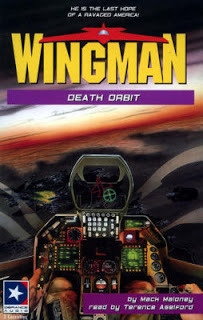 I went to graduate school at Emerson College for film making, and as a result, I don’t like very many films. It’s a case of you really don’t want to know how the sausage is made and you wind up catching all the mistakes. Book to movie adaptations are usually pretty lame because they have to cut out a lot of the good stuff in order to squeeze everything into 120 minutes or so, and once it’s ruined like that, it’s ruined forever. But that said, the film, Munich, still haunts me. It was based on a book titled, Vengeanceby Yuval Aviv, who was a Mossad agent. He knew what he was talking about and the movie proves it. But it’s not a feel-good film. Just the opposite. I remember walking out of the theater thinking, we live in a really screwed-up world.
What book would you like to see as a movie?
How about all the Wingman books? Actually, a couple have been optioned for the movies, but the people always come back and say: It would be too expensive to do this right. But never say never. And, if I had to make choice, I’d say Going After Cacciato would make a fantastic movie if they did it right.
What imaginary place from a book would you want to live?
Oddly enough, where we live now is not too different from a place called Skyfire where, in one book, Wingman lives for a short amount of time with his girlfriend, Dominique. Skyfire is a hay farm on the ocean on Cape Cod, south of Boston. We live on the north shore of Boston, and it’s not a hay farm, but a lot of other things are similar. It’s sort of strange how it turned out that way.
What fictional character would you like to have a beer with?
Definitely Superman. ********Thx, Mack for spending a little time under the bright lights of the interrogation room. I’m looking forward to Wingman #18: Battle For America and whatever flows forth from your battered typewriter next... All Wingmane-books published by
Open Road Media
are available on Amazon... Wingman #17: Attack On Area 51 and Wingman #18: Battle for America is available in e-book and in paperback at your local bookstore also from
Open Road Media
...
I went to graduate school at Emerson College for film making, and as a result, I don’t like very many films. It’s a case of you really don’t want to know how the sausage is made and you wind up catching all the mistakes. Book to movie adaptations are usually pretty lame because they have to cut out a lot of the good stuff in order to squeeze everything into 120 minutes or so, and once it’s ruined like that, it’s ruined forever. But that said, the film, Munich, still haunts me. It was based on a book titled, Vengeanceby Yuval Aviv, who was a Mossad agent. He knew what he was talking about and the movie proves it. But it’s not a feel-good film. Just the opposite. I remember walking out of the theater thinking, we live in a really screwed-up world.
What book would you like to see as a movie?
How about all the Wingman books? Actually, a couple have been optioned for the movies, but the people always come back and say: It would be too expensive to do this right. But never say never. And, if I had to make choice, I’d say Going After Cacciato would make a fantastic movie if they did it right.
What imaginary place from a book would you want to live?
Oddly enough, where we live now is not too different from a place called Skyfire where, in one book, Wingman lives for a short amount of time with his girlfriend, Dominique. Skyfire is a hay farm on the ocean on Cape Cod, south of Boston. We live on the north shore of Boston, and it’s not a hay farm, but a lot of other things are similar. It’s sort of strange how it turned out that way.
What fictional character would you like to have a beer with?
Definitely Superman. ********Thx, Mack for spending a little time under the bright lights of the interrogation room. I’m looking forward to Wingman #18: Battle For America and whatever flows forth from your battered typewriter next... All Wingmane-books published by
Open Road Media
are available on Amazon... Wingman #17: Attack On Area 51 and Wingman #18: Battle for America is available in e-book and in paperback at your local bookstore also from
Open Road Media
...
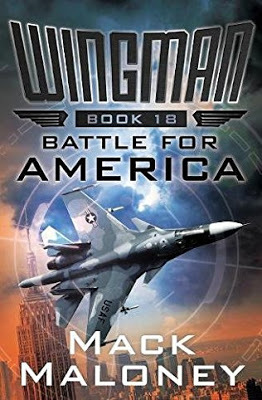 WINGMAN #18: BATTLE FOR AMERICA An ace fighter pilot aims to save a shattered America from Russian invasion in this new Wingman novel from the best high-action thriller writer out there (Jon Land). Former US Air Force major Hawk Hunter and his band of patriotic ex-military men have fought tirelessly to reunite their fractured nation after the Russian nuclear sneak attack that put a devastating end to World War III. Now, returning from a space odyssey that began with the diversion of a comet headed for Earth, Hunter finds a 60,000-man Russian army occupying New York City, ready to invade the rest of America. Equally alarming are reports claiming that Hawk s former girlfriend, Dominique, is living with the head of the Russian secret police in a Manhattan penthouse. Buzzing through the city s skyscraper canyons in a tiny STOL Highlander and glimpsing the enemy invaders massive weaponry for himself, Hawk realizes he’s up against the greatest danger his homeland has ever faced, even with the help of Captain Bull Dozer and his team of ex-Marines. But with the woman and the country he loves in dire peril, threatened by a mysterious convoy of Russian superships, the Wingman will apply all his aviation prowess and strategic ingenuity to devise a plan to launch the fiercest, most crucial battle for America yet, no matter the risks. Filled with fast-paced, furious action and a wide range of aircraft and military hardware that will fascinate techno-thriller fans, Battle for America brings back favorite characters from earlier books in the series and delivers a riveting story that reveals new insight on America’s most enigmatic hero: the Wingman.
WINGMAN #18: BATTLE FOR AMERICA An ace fighter pilot aims to save a shattered America from Russian invasion in this new Wingman novel from the best high-action thriller writer out there (Jon Land). Former US Air Force major Hawk Hunter and his band of patriotic ex-military men have fought tirelessly to reunite their fractured nation after the Russian nuclear sneak attack that put a devastating end to World War III. Now, returning from a space odyssey that began with the diversion of a comet headed for Earth, Hunter finds a 60,000-man Russian army occupying New York City, ready to invade the rest of America. Equally alarming are reports claiming that Hawk s former girlfriend, Dominique, is living with the head of the Russian secret police in a Manhattan penthouse. Buzzing through the city s skyscraper canyons in a tiny STOL Highlander and glimpsing the enemy invaders massive weaponry for himself, Hawk realizes he’s up against the greatest danger his homeland has ever faced, even with the help of Captain Bull Dozer and his team of ex-Marines. But with the woman and the country he loves in dire peril, threatened by a mysterious convoy of Russian superships, the Wingman will apply all his aviation prowess and strategic ingenuity to devise a plan to launch the fiercest, most crucial battle for America yet, no matter the risks. Filled with fast-paced, furious action and a wide range of aircraft and military hardware that will fascinate techno-thriller fans, Battle for America brings back favorite characters from earlier books in the series and delivers a riveting story that reveals new insight on America’s most enigmatic hero: the Wingman.
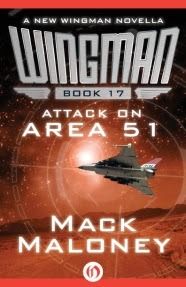 THE WINGMAN SERIES Wingman The Circle War The Lucifer Crusade Thunder in the East The Twisted Cross The Final Storm Freedom Express Skyfire Return from the Inferno War of the Sun The Ghost War Target: Point Zero Death Orbit The Sky Ghost Return of Sky Ghost The Tomorrow War Attack on Area 51 Battle for America
THE WINGMAN SERIES Wingman The Circle War The Lucifer Crusade Thunder in the East The Twisted Cross The Final Storm Freedom Express Skyfire Return from the Inferno War of the Sun The Ghost War Target: Point Zero Death Orbit The Sky Ghost Return of Sky Ghost The Tomorrow War Attack on Area 51 Battle for America
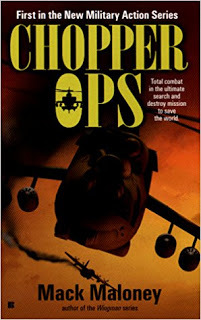 CHOPPER OPS SERIES Chopper Ops Zero Red Shuttle Down
CHOPPER OPS SERIES Chopper Ops Zero Red Shuttle Down
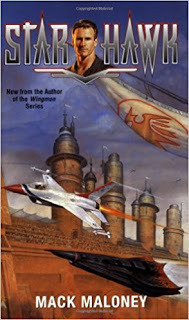 STARHAWK SERIES Starhawk Planet America The Fourth Empire Battle at Zero Point Storm Over Saturn
STARHAWK SERIES Starhawk Planet America The Fourth Empire Battle at Zero Point Storm Over Saturn
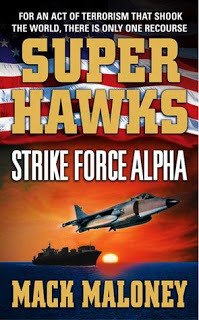 SUPERHAWKS SERIES Strike Force Alpha Strike Force Bravo Strike Force Charlie Strike Force Delta
SUPERHAWKS SERIES Strike Force Alpha Strike Force Bravo Strike Force Charlie Strike Force Delta
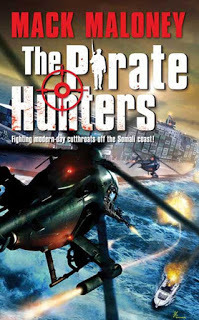 PIRATE HUNTERS SERIES The Pirate Hunters Operation Caribe Operation Sea Ghost
PIRATE HUNTERS SERIES The Pirate Hunters Operation Caribe Operation Sea Ghost
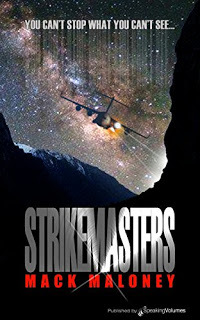 STRIKEMASTERS SERIES Strikemasters Rogue War Fulcrum
STRIKEMASTERS SERIES Strikemasters Rogue War Fulcrum
Published on May 01, 2017 17:40
April 25, 2017
AT THE MOVIES ~ THEIR FINEST
 AT THE MOVIES ~ THEIR FINEST
AT THE MOVIES ~ THEIR FINESTCall me a sentimental sap if you want, but I thoroughly enjoyed Their Finest, the latest British import filled with stiff upper lip, put the kettle on, we can defeat the Nazis as long as we all do our bit attitude. Their Finest is the type of serio-rom-com nobody does better than the British. Their Finest pokes fun at itself, but always maintains the reserve, dignity, and dry sense of humor inherent in the British cultural DNA. While it is definitely lead actress Gemma Arterton's film, Bill Nighy still manages to steal every scene he's in (as he always does). I would buy a ticket to see Nighy read a census report and know I'd come away amused and entertained. He is a British treasure, and so is this film. My favorite of the year so far, but it will take something really special to top it in my affections...
Published on April 25, 2017 10:46
AT THE MOVIES ~ GOING IN STYLE
 AT THE MOVIES ~ GOING IN STYLE Going In Style is visual comfort food, an entertaining, undemanding mac & cheese of a movie, which delivers gentle chuckles across a script tight enough and clever enough to keep you interested. It helps having three consumate actors (Michael Caine, Morgan Freeman, Alan Arkin) who, while not stretching their acting chops, appear to be having a good time. By their very watchability (and that of Ann Margaret, who has always been and remains very watchable) they carry the lightweight undertaking through it's two hours of traditional heist film twists and turns to the satisfying happy ending. I didn't expect much going in, but came out of the theatre with a smile on my face feeling pleasantly surprised...
AT THE MOVIES ~ GOING IN STYLE Going In Style is visual comfort food, an entertaining, undemanding mac & cheese of a movie, which delivers gentle chuckles across a script tight enough and clever enough to keep you interested. It helps having three consumate actors (Michael Caine, Morgan Freeman, Alan Arkin) who, while not stretching their acting chops, appear to be having a good time. By their very watchability (and that of Ann Margaret, who has always been and remains very watchable) they carry the lightweight undertaking through it's two hours of traditional heist film twists and turns to the satisfying happy ending. I didn't expect much going in, but came out of the theatre with a smile on my face feeling pleasantly surprised...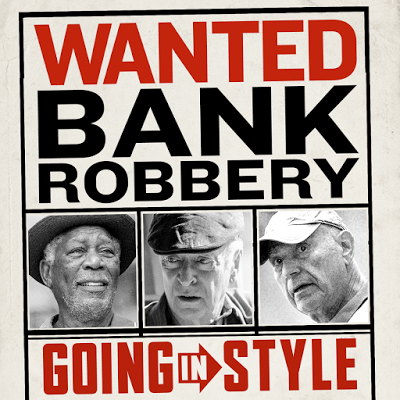
Published on April 25, 2017 10:43
April 6, 2017
W.T. BALLARD—INTERVIEWED BY STEPHEN MERTZ
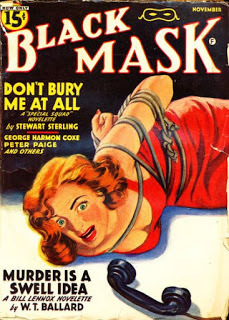
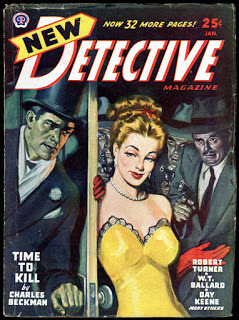 Stephen Mertz and I have been writing contemporaries and friends for longer than either of us would care to mention. We were recently able to spend some time together during an epic used bookstore crawl in Arizona. We talked non-stop smack about books, editors, publishers, and dead authors. The below interview by Steve of pulp wordslinger Todhunter Ballard originally printed in the Armchair Detective #197, Winter, 1979…
Stephen Mertz and I have been writing contemporaries and friends for longer than either of us would care to mention. We were recently able to spend some time together during an epic used bookstore crawl in Arizona. We talked non-stop smack about books, editors, publishers, and dead authors. The below interview by Steve of pulp wordslinger Todhunter Ballard originally printed in the Armchair Detective #197, Winter, 1979…
********W.T. BALLARD—INTERVIEWED BY STEPHEN MERTZ
I first made contact with W. T. Ballard early in 1976. I was researching an article on the detective pulp magazines for which Ballard wrote extensively during the thirties and forties, and his response to my questions was generous, informative and entertaining. Since I'd been a fan and collector of his work for some years, I felt that the next logical step should be a piece dedicated to the man himself. This interview is the result.
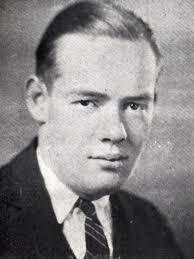 Willis Todhunter Ballard was born in Cleveland in 1903. His career as a professional writer began in 1927 and since then he has produced 95 novels, about fifty movie and TV scripts and more than one thousand short stories and novelettes which have appeared in the pulps as well as such "slicks" as The Saturday Evening Post, Esquire, This Week and McCall's. His most recent work has been primarily in the western field. He is past vice-president of the Western Writers of America and his novel, Gold in California, won that organization's award as Best Historical Novel for 1965. His latest book is Sheriff of Tombstone (Double day, 1977) and he's presently at work on a new one, also a western.
Willis Todhunter Ballard was born in Cleveland in 1903. His career as a professional writer began in 1927 and since then he has produced 95 novels, about fifty movie and TV scripts and more than one thousand short stories and novelettes which have appeared in the pulps as well as such "slicks" as The Saturday Evening Post, Esquire, This Week and McCall's. His most recent work has been primarily in the western field. He is past vice-president of the Western Writers of America and his novel, Gold in California, won that organization's award as Best Historical Novel for 1965. His latest book is Sheriff of Tombstone (Double day, 1977) and he's presently at work on a new one, also a western. 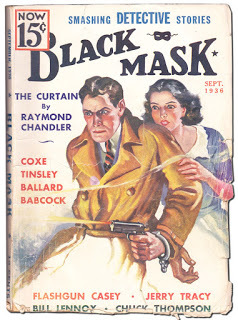 His importance to the mystery field is that he was one of the original contributors to Black Mask, that famous detective pulp which, during the thirties under the editorship of Joe Shaw, pioneered the then-revolutionary American hard-boiled detective form.
His importance to the mystery field is that he was one of the original contributors to Black Mask, that famous detective pulp which, during the thirties under the editorship of Joe Shaw, pioneered the then-revolutionary American hard-boiled detective form. Ballard, along with Chandler, Hammett and Erle Stanley Gardner, was one of that magazine's most popular contributors among contemporary readers. His series starring Bill Lennox, troubleshooter for General Consolidated Studios, set the tone and laid the ground rules for countless Hollywood-milieu mysteries to follow.
"My life is not particularly interesting," Ballard wrote me when agreeing to this interview. "As Dash Hammett used to say, there are two types of people in the world. Those who make news and those who write about them."
What follows is proof positive that W.T. Ballard is as self-effacing as he is important to the development of the American detective story.********First, the traditional question: How did you come to be a professional writer?
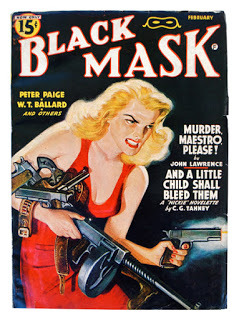 As a child when I was asked what I wanted to do I said I would live in a library and write books. At age twelve I sold my first offering to Hunter Trader Trapper, the saga of a twelve-year-old on vacation at a Canadian trout stream with my family. I received in return for it ten copies of the issue in which the masterpiece appeared. However, the progress to writer was hit or miss for a long time. My father owned an electrical engineering office. They also published a magazine electrically oriented, on which I worked. When I got out of college I was taken into the office to be taught the business, whether or not I liked it. They sat me at a drawing board. I was not a particularly good draftsman. A whole set of handbooks told me precisely what generators were required in any given situation. Thoroughly bored, I looked for another outlet.
As a child when I was asked what I wanted to do I said I would live in a library and write books. At age twelve I sold my first offering to Hunter Trader Trapper, the saga of a twelve-year-old on vacation at a Canadian trout stream with my family. I received in return for it ten copies of the issue in which the masterpiece appeared. However, the progress to writer was hit or miss for a long time. My father owned an electrical engineering office. They also published a magazine electrically oriented, on which I worked. When I got out of college I was taken into the office to be taught the business, whether or not I liked it. They sat me at a drawing board. I was not a particularly good draftsman. A whole set of handbooks told me precisely what generators were required in any given situation. Thoroughly bored, I looked for another outlet. Through a friend I found a job with a small group of local newspapers, the Brush-Moore chain in the Midwest. It was a constant hassle. In eight months I was fired at least eight times. Besides arguments with the printers I had them with the old battle-axe who ran the front office. She had been secretary to the Brush boys' father and considered that she owned the company more than the boys did. It became a routine. She would call me in and fire me, but before I could clear out my desk one or other brother would show up from Europe and rehire me. This went on until one time no one appeared and I stayed fired.
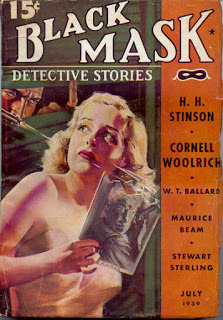 About that time the stock market crashed in '29 and we were sunk in the Depression. Dad was forced to close his business and I was out of that job too. I couldn't find anything in the East and decided it was a good time to go to California where at least it was warm for sleeping on park benches. I got there on Armistice Day with twenty-six dollars. On the way west I broke out with an infection in the lymph glands and spent three weeks in an Albuquerque, New Mexico, hospital, which cost me most of what money I had.
About that time the stock market crashed in '29 and we were sunk in the Depression. Dad was forced to close his business and I was out of that job too. I couldn't find anything in the East and decided it was a good time to go to California where at least it was warm for sleeping on park benches. I got there on Armistice Day with twenty-six dollars. On the way west I broke out with an infection in the lymph glands and spent three weeks in an Albuquerque, New Mexico, hospital, which cost me most of what money I had. I walked down Hollywood Boulevard like any tourist. There was a big parade in downtown L.A. and the Hollywood streets were all but empty, most businesses closed. But a cigar store newsstand was opened and I stopped to gawk in the window. I had been writing and submitting copy to New York without much success, but there before me was a copy of Detective Dragnet featuring a story I had written months earlier. I didn't take much notice. I had been paid long before and the money was spent. I wandered on and was crossing Cherokee Street when a voice called, "Tod. Tod Ballard..." I looked down the side street and, coming toward me, I saw Major Harry Warner.
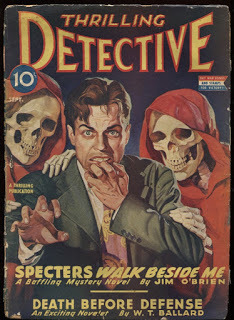 I’d known Warner in Cleveland where his family was making movie trailers for Community Chest and other local organizations. They came from Youngstown where the old man was a tailor, a really sweet guy, and when I was with the Brush outfit I had handled some publicity for them as a favor. That was my only connection with them. The Major wanted to know what I was doing in Hollywood, a question I was beginning to ask myself. I hated to admit that I was out of a job and nearly broke, that I had no real hope of finding work in a strange town. Then I remembered the magazine in the window. I lied gracefully. "I'm freelancing, working for magazines...here. I'll show you..." I led him back to the cigar store, went in, bought the Detective Dragnet, took it out and presented it to him.
I’d known Warner in Cleveland where his family was making movie trailers for Community Chest and other local organizations. They came from Youngstown where the old man was a tailor, a really sweet guy, and when I was with the Brush outfit I had handled some publicity for them as a favor. That was my only connection with them. The Major wanted to know what I was doing in Hollywood, a question I was beginning to ask myself. I hated to admit that I was out of a job and nearly broke, that I had no real hope of finding work in a strange town. Then I remembered the magazine in the window. I lied gracefully. "I'm freelancing, working for magazines...here. I'll show you..." I led him back to the cigar store, went in, bought the Detective Dragnet, took it out and presented it to him. Why the Major was impressed by a dime pulp I'll never know, but he was. The meeting culminated in his offering me a job writing for the studio at seventy-five bucks a week. A bonanza at the time. He and his brothers had just taken over First National Studios from Commodore (Commy) Blackton, who had gone broke in New York real estate. I lasted with Warners for eight months—learning a lot about screenwriting from a couple of wise old-timers—before I forgot to watch my back. I made a derogatory crack about Jack Warner, turned my head to find him at my shoulder, and the pink ticket beat me back to my office.
From there, I went to Columbia, an eye-opening experience. Sam Cohan, who owned the studio with his brother, had worked out a crummy deal. A Hungarian, he had brought eight of his relatives over to this country, with no intention of personally supporting them. Instead, he set up an ingenious company, gave each relative a share in the stock, and the titular title of producer to make pictures as independents. Then he would buy these productions and divide any profit with each contributing relative.
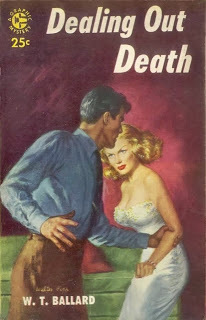 The snag was the first man he made a producer spent more money on his pictures than he could hope to realize from their sale. I was hired to recoup the losses, to bring in new films for a very low budget of ten thousand dollars each. We were in the bottom of the Depression, but the job still wasn't easy. I had to write the script, direct, produce the picture and even move the sets and scenery, as it was before the days of powerful unions. The camera was housed in a heavy concrete booth mounted on piano casters, the sound table in the same booth. When you needed to move the apparatus, everyone—grips, juicers, stagehands, actors (including stars)—put their shoulders to the booth and wrestled it into the new position.
The snag was the first man he made a producer spent more money on his pictures than he could hope to realize from their sale. I was hired to recoup the losses, to bring in new films for a very low budget of ten thousand dollars each. We were in the bottom of the Depression, but the job still wasn't easy. I had to write the script, direct, produce the picture and even move the sets and scenery, as it was before the days of powerful unions. The camera was housed in a heavy concrete booth mounted on piano casters, the sound table in the same booth. When you needed to move the apparatus, everyone—grips, juicers, stagehands, actors (including stars)—put their shoulders to the booth and wrestled it into the new position. Most of our shooting was done inside. We couldn't afford to go out. The studio was located on Gower Avenue. It was known locally as Gower Gulch because of the preponderance of westerns being made on the lots lining the street and the horde of unemployed actors who gathered outside the gates. When we needed a couple of extras, we opened the window and yelled, then stood out of the way of the stampede.
The job lasted six months and exhausted me. I never cared for studio work. I hated having my scripts torn apart by producers, directors, even the actors who had any clout. I returned to freelancing and made a living, but barely.
How did you come to write for Black Mask?
[image error] I caught The Maltese Falcon on radio. My uncle, with whom I was living, was head of the West Coast Customs Bureau. He would come home at night worn out, collapse in his favorite chair, turn the radio volume all the way up, and go to sleep. I wrote in a small study off the living room and could not escape hearing every sound from the box. I had learned to tune it out of my consciousness, but this night excerpts of dialogue forced themselves through to me. Dialogue the way I had always wanted to write it. I had been trying to please Dorothy Hubbard at Detective Story Magazine, a lady who favored the Mary Roberts Rinehart and Agatha Christie styles and types of material. This was something else again. I went to the living room and listened. What I heard was an ad, a teaser for a movie playing at Warner Brothers' downtown theater. I caught a streetcar down and saw the show.
This was not the later Bogie version, but an earlier one starring Ricardo Cortez, who took his stage name from a cigar and acted like it. But I had no interest in the acting. It was the dialogue that enthralled me: Hammett's ear for words sounded the way I thought criminals and detectives should talk. It rang true, the way I wanted mine to do.
The ad gave a credit to Black Mask Magazine, which was the first I had heard of the publication. I left the theater, walked to the corner, bought a copy of the then current issue and read it on the ride back. I felt I was coming home. The story I most remember was written by a boy from Oregon whose family, I later learned, owned the biggest whorehouse in the state. His work sounded authentic.
Bill Lennox was the first hard-boiled series character who worked exclusively against a movie industry setting. Can you tell us something of how you went about creating the series?
The heroes of most of the Black Mask stories were newspaper crime reporters, which I thought could get monotonous. I scratched my head for an alternative and came up with the idea of a troubleshooter working for a studio. I could use my experience in the movie world for realistic background.
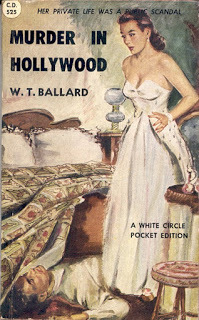 By the time I got back to my uncle's house around midnight I had worked out the basic framework in my mind. A friend, Jim Lawson, was head of the foreign department at Universal. Poor Jim. Every time Junior Laemmle or his sister Rose Mary got into trouble, which was often, Jim had to get out of a warm bed, go to Lincoln Heights jail and bail them out. I couldn't use the name Lawson so I went through the L's in the phone book and came by Lennox. I then needed a name for the head of the studio and wanted something that sounded Jewish, but not obviously so. The phone book yielded me Spurk; there was only one of those. Much later I learned Spurk was a lady and not at all Jewish, but she sufficed well for me. Just after midnight I began the first Lennox story. It ran ten thousand words and I finished at five in the morning. At seven-thirty, I took my uncle to work, mailed the manuscript and went home to bed.
By the time I got back to my uncle's house around midnight I had worked out the basic framework in my mind. A friend, Jim Lawson, was head of the foreign department at Universal. Poor Jim. Every time Junior Laemmle or his sister Rose Mary got into trouble, which was often, Jim had to get out of a warm bed, go to Lincoln Heights jail and bail them out. I couldn't use the name Lawson so I went through the L's in the phone book and came by Lennox. I then needed a name for the head of the studio and wanted something that sounded Jewish, but not obviously so. The phone book yielded me Spurk; there was only one of those. Much later I learned Spurk was a lady and not at all Jewish, but she sufficed well for me. Just after midnight I began the first Lennox story. It ran ten thousand words and I finished at five in the morning. At seven-thirty, I took my uncle to work, mailed the manuscript and went home to bed.I had been nickel and diming along, selling an occasional story to Street & Smith, Short Stories, Argosy and so on. I was paid a quarter of a cent to a cent per word, while supporting my parents and an aunt, long since regretting losing the regular salary from Columbia and having quit my job—much as I had hated it. Along with writing, I was looking for another spot, with no luck.
A week after I mailed the story to Black Mask, I received a letter from Joe Shaw. He wanted some changes made, but he sent along a check with the letter, an unheard of generosity and compassion among editors at the time. The major change he asked for was that Bill Lennox not carry a gun as other fictional detectives did, even newspaper reporters. That reporters went armed seemed odd to me, and that a troubleshooter should go naked seemed odder, but it was not a time to argue with an editor. No one with sense argued with Shaw. So, Lennox went without a gun.
Joe Shaw was a strong guiding force where many of his writers were concerned. Did you have any memorable experiences in your relationship with him as an editor?
I loved Shaw better the more I knew him. He was a curious bastard who wanted to write himself and couldn't. He had been president of a highly successful manufacturing company before the First World War. How he got involved in Europe I don't know, but Hoover used him to deliver relief in Belgium after the armistice, then sent him to Greece.
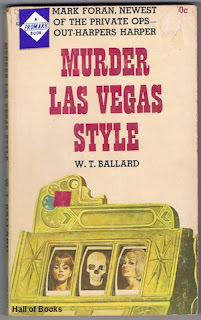 When he came home, he had a manuscript he took to Phil Cody at Warners Publications. He did not sell the story, but he so impressed Cody that he hired Shaw to edit Black Mask on the spot—and he made a fine editor. He could point the way for his writers, contribute much to helping work out their problems with sympathy and understanding, but he could not do the same for himself even though writing was what he most wanted to do.
When he came home, he had a manuscript he took to Phil Cody at Warners Publications. He did not sell the story, but he so impressed Cody that he hired Shaw to edit Black Mask on the spot—and he made a fine editor. He could point the way for his writers, contribute much to helping work out their problems with sympathy and understanding, but he could not do the same for himself even though writing was what he most wanted to do.He wrote two books, both of which Knopf published, not because they were worthy of publication but because Joe wrote them—he was that much appreciated. Both books were bad. I can't remember both titles, but one was Blood on the Curb. At his request, I worked over it with him trying to point out where he had gone off base, but I was not the editor he was. It was an experience, believe me, trying to teach my father how to write.
As I said, I loved him. I sold him more copy than anyone else did, an average of ten stories a year, more than that including characters other than Lennox. Erle Gardner never forgave that I sold one story more to Black Mask than he did during a given period.
Through the years, I have worked with the leading editors of the business. Ray Long, Fanny Ellsworth, Dorothy Hubbard. Erd Brandt. Ken McCormick. Ken Littaur, Ken White, you name them. But none of them offered the help, the assurance, the patience Joe Shaw gave to his writers. It is too bad he has been so overlooked in the history of the craft.
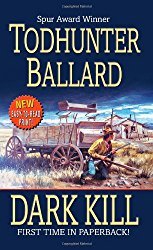 Following my first Black Mask sale, I wrote and sold seven more within three weeks, with Joe buying everything I submitted until Phil Cody told him to quit Lennox for a while. At Joe's suggestion, I began a new series and wrote six Red Drake stories about a race course detective working for the state racing commission. When that wore thin, I switched to several manuscripts on Don Tomasa, a Mexican adventurer working out of Tijuana.
Following my first Black Mask sale, I wrote and sold seven more within three weeks, with Joe buying everything I submitted until Phil Cody told him to quit Lennox for a while. At Joe's suggestion, I began a new series and wrote six Red Drake stories about a race course detective working for the state racing commission. When that wore thin, I switched to several manuscripts on Don Tomasa, a Mexican adventurer working out of Tijuana. Finally Shaw left Black Mask because Warner and Cody decided to cheapen the quality of the content. Fanny Ellsworth took over and I went along. It was a living. But although Fanny was a good editor, it was never the same as with Joe. At the risk of sounding euphoric, there never was a relationship between editor and writer to equal my connection with Cap Shaw.
Your reminiscences of Raymond Chandler are quoted by Frank MacShane, in his biography of Chandler. Did you know Dashiell Hammett?
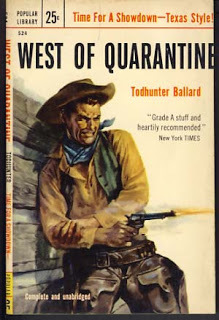 Yes, and quite well. Until the time he took off with Lillian Hellman. She saw to it he was cut off from his old friends, even Horace McCoy who had been closest to him. McCoy had been a police reporter in El Paso, a genuine tough guy. He and Dash shared an apartment in San Francisco and at one time were virtually broke. Dash was, as many writers are, a compulsive gambler. Joe Shaw finally sent them a check for $250. Their funds were so low they didn't even have a bank account. Dash took the check downstairs to the Chinese restaurant below their rooms to get it cashed. He did not show up for so long McCoy became worried enough to go looking for Hammett. He arrived at the restaurant just in time to see Dash put the last dollar into the claw machine and lose again. The Chinese felt so bad about the loss he unlocked the box and gave Dash a tin cigarette case from it. Thereafter McCoy called the tin piece Hammett's $250 extravagance.
Yes, and quite well. Until the time he took off with Lillian Hellman. She saw to it he was cut off from his old friends, even Horace McCoy who had been closest to him. McCoy had been a police reporter in El Paso, a genuine tough guy. He and Dash shared an apartment in San Francisco and at one time were virtually broke. Dash was, as many writers are, a compulsive gambler. Joe Shaw finally sent them a check for $250. Their funds were so low they didn't even have a bank account. Dash took the check downstairs to the Chinese restaurant below their rooms to get it cashed. He did not show up for so long McCoy became worried enough to go looking for Hammett. He arrived at the restaurant just in time to see Dash put the last dollar into the claw machine and lose again. The Chinese felt so bad about the loss he unlocked the box and gave Dash a tin cigarette case from it. Thereafter McCoy called the tin piece Hammett's $250 extravagance.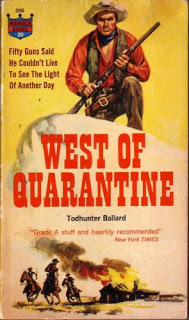 McCoy wrote They Shoot Horses, Don't They? Jane Fonda made a picture from the story a few years ago. He married some dame who owned a couple of apartment houses at Vine Street and Beverly Boulevard and I lost all track of him. He was a nice guy and a good writer.
McCoy wrote They Shoot Horses, Don't They? Jane Fonda made a picture from the story a few years ago. He married some dame who owned a couple of apartment houses at Vine Street and Beverly Boulevard and I lost all track of him. He was a nice guy and a good writer.Jumping to the other end of the spectrum, did you know Robert Leslie Bellem? He's been called the worst writer of the pulps, yet I've always viewed his Dan Turner, Hollywood Detective series as superb private eye parody.
Yes, I knew Bob I suppose as well as anyone. I can't give you the exact date of our meeting, sometime in the mid-1930's. Soon afterward, we took adjoining offices in an old corner building on Colorado Boulevard in Pasadena and worked there until I left for Wright Field during the Second World War, in 1942. During that period, we collaborated a lot on Frank Armer's Super Detective Stories and a number of other mags. Bob was always a good word man, but had trouble with story, which was my field, and he did not work well under pressure. Frequently, he would blow up, come apart and throw the thing in my lap. That was especially true when the longer pieces became popular. His best work was in short material. He was a pugnacious, small man, but easy to collaborate with, never pretentious about his prose, and we edited each other without many battles.
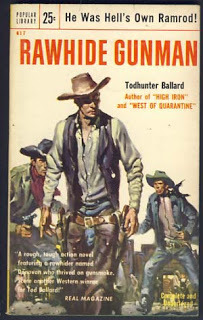 After the end of the war, I returned to the coast and we again got together writing the Death Valley shows for Ronnie Regan, and also stories for a number of magazines. But the magazine market was sinking, TV taking its place. TV was never my forte. It was too restrictive and I had not the patience to go around and around on endless story conferences with producers who didn't know what they wanted, but had to have an oar in. On the other hand, Bob loved it and thrived on it. He was great at talking, but was never what they called a talking writer. He was one of the hardest workers in the field, kept as regular office hours as if he punched a time clock, and stayed at his machine until he finished a predetermined number of pages a day. He had a delightful sense of humor that relied a lot on play on words. I recall one lunch-long game we played using the names of American Indian tribes, using the verbal sounds for different word meaning. An example: Shawnee(ds) more action in this story—Shaw being Cap Shaw. I guess we used up every tribe in the land.
After the end of the war, I returned to the coast and we again got together writing the Death Valley shows for Ronnie Regan, and also stories for a number of magazines. But the magazine market was sinking, TV taking its place. TV was never my forte. It was too restrictive and I had not the patience to go around and around on endless story conferences with producers who didn't know what they wanted, but had to have an oar in. On the other hand, Bob loved it and thrived on it. He was great at talking, but was never what they called a talking writer. He was one of the hardest workers in the field, kept as regular office hours as if he punched a time clock, and stayed at his machine until he finished a predetermined number of pages a day. He had a delightful sense of humor that relied a lot on play on words. I recall one lunch-long game we played using the names of American Indian tribes, using the verbal sounds for different word meaning. An example: Shawnee(ds) more action in this story—Shaw being Cap Shaw. I guess we used up every tribe in the land. 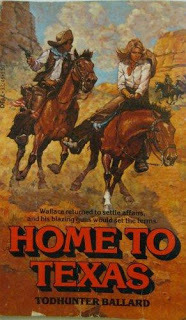 Bob was also a mighty hypochondriac, forever taking pills, medicines, asthma inhalations, anything he could find. He fell into the clutches of the Beverly Hills heart attack doctor, a man who treated many writers and studio people, all of whom he diagnosed as having had or soon to have heart attacks—and some even did. Most did not. However, Bob decided he was a prime candidate and suffered realistically for a couple of years. I never took his complaints seriously until the day he died of a heart attack in the new home he had worried himself to death building.
Bob was also a mighty hypochondriac, forever taking pills, medicines, asthma inhalations, anything he could find. He fell into the clutches of the Beverly Hills heart attack doctor, a man who treated many writers and studio people, all of whom he diagnosed as having had or soon to have heart attacks—and some even did. Most did not. However, Bob decided he was a prime candidate and suffered realistically for a couple of years. I never took his complaints seriously until the day he died of a heart attack in the new home he had worried himself to death building.Incidentally, Bob was not nearly as bad a writer as you make him out. He looked over the markets, chose one he could handle fast and easily, and hewed to the line. And was highly successful in so doing. When he went into television, he was one of the most successful story editors in the trade. He was a generous man, even professionally. Always busy with his and our work, when Cleve F. Adams had a grave illness while in the middle of a detective book manuscript Bob suggested the two of us finish it for him. We did. Cleve was a father figure to the fiction writing group, much loved but a porcupine nevertheless. His comment on reading the finished copy: It's a beautiful...typing job.
For all his popularity with private eye readers during the forties, surprisingly little is known about Adams.
I met Cleve in '31. He and his wife, Vera, had a candy store in Culver City, but he had always wanted to write, and broke in with the old Munsey magazines. With varying success, he continued selling to the pulps until he wrote his first book, Sabotage. It was an instant hit and, on the strength of it, he did seven or eight others. He was good, though hardly in a class with Ray Chandler. He had an exalted regard for his own ability and seldom discussed his work with anyone, including family. I knew him intimately until he died. His son phoned me at four o'clock that morning to tell me Cleve had had a heart attack. He was dead before I could drive over.
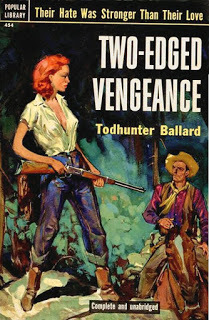 He and Glen Wichman and I founded the Fictioneers organization, selecting some twenty men as original members. It was an entirely social group with neither rules nor by-laws. Cleve ran it through the first years as secretary, the only office we had, sending out notices of where and when the next meeting would be held. We paid for cards and postage. I have no idea how many members there were for we kept no records and charged no dues, but I would say the number ran into the hundreds. Any writer, fixed or just passing through, was welcome if he cared to join and at times we had more members than the Authors' League. However, our monthly dinners seldom turned out more than thirty or forty at one gathering. It held together until the war when a lot of the boys went into the services. Although several efforts were made to revive it after the war they were largely unsuccessful because most of us had moved into the slick markets and the book field, and had scattered.
He and Glen Wichman and I founded the Fictioneers organization, selecting some twenty men as original members. It was an entirely social group with neither rules nor by-laws. Cleve ran it through the first years as secretary, the only office we had, sending out notices of where and when the next meeting would be held. We paid for cards and postage. I have no idea how many members there were for we kept no records and charged no dues, but I would say the number ran into the hundreds. Any writer, fixed or just passing through, was welcome if he cared to join and at times we had more members than the Authors' League. However, our monthly dinners seldom turned out more than thirty or forty at one gathering. It held together until the war when a lot of the boys went into the services. Although several efforts were made to revive it after the war they were largely unsuccessful because most of us had moved into the slick markets and the book field, and had scattered. One Black Maskwriter who seems shrouded in obscurity is Raoul Whitfield, who just seemed to vanish at the height of his career.
He died in North Hollywood in the early forties. I don't recall what he died of or what he was doing at the time.
Would you tell us something about the lifestyle of a pulp writer living in L.A. during the thirties and forties?
We all worked hard, played hard, lived modestly, drank—but only a few to excess—gambled some when we had extra cash. Most of our friends were other writers. In the Depression, when any of us got a check, he climbed in his jalopy and made the rounds to see who was in worse straits than he and loaned up to half what he had just received.
More and more interest is being shown these days in the detective pulps and those who wrote for them. Are there any pulp writers who are generally ignored today whom you think deserve recognition?
Here are a few from memory. Norbert (Bert) Davis was one of the best with a light style and humor. He killed himself in the odd-forties. John K. (Johnny) Butler who wound up at the studios. Dwight Babcock. Carroll John Daly. Fred Nebel, who was very good.
What was your yearly average word output for the pulps?
My files are at the University of Oregon library, but a shotgun guess would be about or over a million words per year.
Would you tell us something about your work habits both then and now?
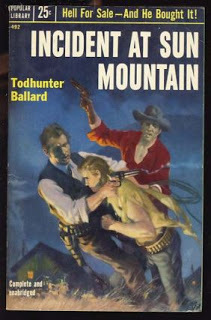 I tried to do about ten pages a day after that first Black Mask flush, sometimes more, sometimes less. I tried to work regularly, something every day even if I later threw it away. These days my wife, Phoebe, does the typing since I'm a lousy typist and in so doing edits the copy. I seldom objected to requests for rewrite, but sometimes stood my ground. A late example is a western called Sheriff of Tombstone. Both my agent and my Doubleday editor, Harold Kuebler, held their noses at the first submission and Harold only accepted the altered copy grudgingly. Both let me know in no uncertain terms they considered it a bad work. It has outsold all my more recent books, and is rated second from the top of the list in Western Writers of America's scoring for the last year.
I tried to do about ten pages a day after that first Black Mask flush, sometimes more, sometimes less. I tried to work regularly, something every day even if I later threw it away. These days my wife, Phoebe, does the typing since I'm a lousy typist and in so doing edits the copy. I seldom objected to requests for rewrite, but sometimes stood my ground. A late example is a western called Sheriff of Tombstone. Both my agent and my Doubleday editor, Harold Kuebler, held their noses at the first submission and Harold only accepted the altered copy grudgingly. Both let me know in no uncertain terms they considered it a bad work. It has outsold all my more recent books, and is rated second from the top of the list in Western Writers of America's scoring for the last year. How about the marketing of pulp fiction? I've heard many of the magazines (such as Frank Armer's) were closed to most freelancers. Was this a widespread practice?
How did we market pulp fiction? Like selling any other commodity. No magazine I remember was tightly closed to submissions, although a couple of them were written entirely by one or two men for long stretches. It was largely governed by how lazy the editors were, how much they were willing to read.
[image error] Frank Armer was no worse than others, but his editors were crooked. They were pulling old copy out of the files, slapping a current writer's name on as author, and drawing checks to the new names, cashing them themselves at the bar on the corner. Bob Bellem and I combined to send them to Sing Sing for five years each. We discovered the ploy after I received a notice from the IRS that I had failed to report $35,000 paid me by Armer Publications. Since I had sold them no copy for that year, I checked with Bob. He had sold to them, but he was being charged with not reporting twice what he had been paid. We contacted Frank, then blew the whistle. Armer was an open market but Bob did have the edge by a large margin.
After a highly successful career in the detective magazines under your own name, much of your later work has been pseudonymous. Why the switch?
Frankly, the market for detective, especially from picture studios, became very slim and when I was forced into westerns, I chose to use my middle name—Todhunter—to begin with. But unlike the detective publications, the westerns would not absorb enough copy under a single byline to support me. Especially when I jumped to books. The houses would take only one a year, and a name was tied up solely by one house. Therefore, the shift to a long series of pseudonyms under which I could work for several houses at once. They didn't like it. But the practice became common, and they had to go along or do without sufficient submissions. Later, resales to paperback, as they have reverted to me, have been reissued under only one or two noms.
[image error] The private eye series starring Tony Costaine and Bert McCall, which you did for Gold Medal Books during the fifties and sixties under the pseudonym of Neil MacNeil, was unusual in that it featured two lead protagonists instead of one. I thought it was a good idea, well executed. What happened to the series?
I developed the idea and editor Dick Carrol was enthusiastic. Then he died and Knox Burger took over. Burger was chary of the MacNeil byline because he knew the real Neil MacNeil of Washington. D.C., and my use embarrassed him, although it was an honest family name for me. Knox did his best to kill the series. However, the books were popular and went back into reprint over which Knox had no control. It dragged on until Knox felt it was safe and then did kill both the nom and the series. I had no recourse. Knox left the house soon afterward, but the series was gone. I did two books for Fawcett on the Mafia under my wife's initials, P. D. Ballard. We already had a couple of titles out under P. D. which were highly successful. Then the Mafia market collapsed, the old-time editor, Ralph Deigh, retired, a woman came in as managing editor and my boy who had replaced Knox was fired. Is there a single work you look back on as the highlight of your career?
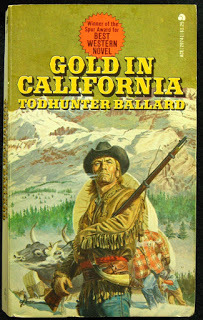 The single piece of my work that gave me much satisfaction is called Gold in California. It's a good book. It sold over 30,000 copies, which is a huge sale for a western, and I am proud of it. I like also a sort of sequel, same locale and time frame, called The Californian. Do you prefer writing westerns over mysteries? In a way, yes. Most crime fiction is phony. Hammett made it believable because he wrote about people he knew from his experience with the Pinkertons in Baltimore and San Francisco. He avoided the mistake Chandler and his imitators made and make in going psychological, with Little Sisters sucking their thumbs. Westerns are of course exaggerated but there are many classics, and the better recent books such as Elmer Kelton's Time It Never Rained are as near factual and convincing as you can get. When I wrote my first western, I knew practically nothing about the West and its history. Since then I have researched. Learned a lot and had a lot of fun doing It. For nearly fifty years you've remained popular to a most precarious profession while other careers have come and gone. To what do you attribute this staying power? Would you share some of your views on the writing business with us? My views on writing as a business? That it is not much different from any other. You have to keep swinging, rolling with the punches, keep alert and attuned to the changes that take place suddenly or gradually, but always constantly. Copy written in 1930 would not sell today because it is dated and shows it glaringly.
The single piece of my work that gave me much satisfaction is called Gold in California. It's a good book. It sold over 30,000 copies, which is a huge sale for a western, and I am proud of it. I like also a sort of sequel, same locale and time frame, called The Californian. Do you prefer writing westerns over mysteries? In a way, yes. Most crime fiction is phony. Hammett made it believable because he wrote about people he knew from his experience with the Pinkertons in Baltimore and San Francisco. He avoided the mistake Chandler and his imitators made and make in going psychological, with Little Sisters sucking their thumbs. Westerns are of course exaggerated but there are many classics, and the better recent books such as Elmer Kelton's Time It Never Rained are as near factual and convincing as you can get. When I wrote my first western, I knew practically nothing about the West and its history. Since then I have researched. Learned a lot and had a lot of fun doing It. For nearly fifty years you've remained popular to a most precarious profession while other careers have come and gone. To what do you attribute this staying power? Would you share some of your views on the writing business with us? My views on writing as a business? That it is not much different from any other. You have to keep swinging, rolling with the punches, keep alert and attuned to the changes that take place suddenly or gradually, but always constantly. Copy written in 1930 would not sell today because it is dated and shows it glaringly.
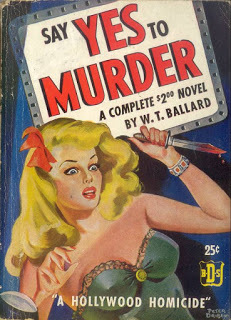 In Say Yes to Murder, you describe the library of one character as containing books kept by one who loved reading for the joy that only reading can afford. What do you read for enjoyment? What I read now is very little. I enjoy history, but my eyes don't take kindly to too much strain. I try to keep abreast of the current best sellers to sample the wind and let it go at that. Very few current mysteries, only an occasional John or Ross Macdonald, and neither of those men give me much pleasure. What can you tell us of your current projects? Is there any chance of a new Lennox yarn or has Bill's day come and gone? Currently, I have done nothing since a major operation a year and a half ago. I have been long in regaining strength or enthusiasm. I have just begun another western...not a Bill Lennox who, I fear, has outlived his usefulness. We'll let him rest in his own time frame. W.T. BALLARD A CHECKLISTINCLUDING MISCELLANEOUS READING NOTES
In Say Yes to Murder, you describe the library of one character as containing books kept by one who loved reading for the joy that only reading can afford. What do you read for enjoyment? What I read now is very little. I enjoy history, but my eyes don't take kindly to too much strain. I try to keep abreast of the current best sellers to sample the wind and let it go at that. Very few current mysteries, only an occasional John or Ross Macdonald, and neither of those men give me much pleasure. What can you tell us of your current projects? Is there any chance of a new Lennox yarn or has Bill's day come and gone? Currently, I have done nothing since a major operation a year and a half ago. I have been long in regaining strength or enthusiasm. I have just begun another western...not a Bill Lennox who, I fear, has outlived his usefulness. We'll let him rest in his own time frame. W.T. BALLARD A CHECKLISTINCLUDING MISCELLANEOUS READING NOTES
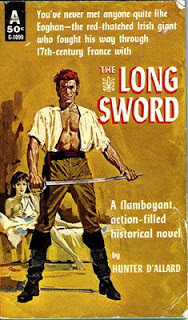 This checklist concerns itself only with Ballard's crime and detective fiction. A complete listing of his novels may be found in the library reference work, Contemporary Authors. The best of Ballard's novels, such as Say Yes to Murder, are highlighted by a crisp, clean prose style, vivid characterization, rapid plot development and a singular humaneness. The Death Brokersis a prime example of his talent for introducing complex, fully dimensioned characters who get under your skin and make you care about them after only one page, involved in a twisty, imaginative story line. Originally packaged to cash in on the Mafia fad, which infested paperback publishing during the early seventies, the book stands on its own as a superb evocation of the all-pervasive fear, treachery and moral decay that is life in the Brotherhood. Murder Las Vegas Styleis neo-Black Mask; a beautifully written private eye novel Raymond Chandler would have enjoyed. This one is highly recommended. Many of Ballard's books are set either completely or partially in Las Vegas, and he always does a convincing job of portraying this fascinating, seldom utilized desert locale with its swinging casinos, its moral ambiguity and the uneasy alliance between gamblers and police. THE BILL LENNOX SERIES
This checklist concerns itself only with Ballard's crime and detective fiction. A complete listing of his novels may be found in the library reference work, Contemporary Authors. The best of Ballard's novels, such as Say Yes to Murder, are highlighted by a crisp, clean prose style, vivid characterization, rapid plot development and a singular humaneness. The Death Brokersis a prime example of his talent for introducing complex, fully dimensioned characters who get under your skin and make you care about them after only one page, involved in a twisty, imaginative story line. Originally packaged to cash in on the Mafia fad, which infested paperback publishing during the early seventies, the book stands on its own as a superb evocation of the all-pervasive fear, treachery and moral decay that is life in the Brotherhood. Murder Las Vegas Styleis neo-Black Mask; a beautifully written private eye novel Raymond Chandler would have enjoyed. This one is highly recommended. Many of Ballard's books are set either completely or partially in Las Vegas, and he always does a convincing job of portraying this fascinating, seldom utilized desert locale with its swinging casinos, its moral ambiguity and the uneasy alliance between gamblers and police. THE BILL LENNOX SERIES•1. Say Yes to Murder. Putnam, 1942. Penguin pb, 1945. Also published as The Demise of a Louse (as by John Shepherd). Belmont pb, 1962.•2. Murder Can't Stop. McKay. 1946. Graphic pb, 1950. •3. Dealing Out Death. McKay, 1948. Graphic pb, 1954. •4. Lights, Camera, Murder (as by John Shepherd). Belmont pb. 1960. THE TONY COSTAINE/BERT MCCALL SERIES •1. Death Takes an Option. Gold Medal pb, 1958. •2. Third on a Seesaw. Gold Medal pb, 1959. •3. Two Guns for Hire. Gold Medal pb, 1959. •4. Hot Dam. Gold Medal pb, 1960. •5. The Death Ride. Gold Medal pb, 1960. •6. Mexican Stay Ride. Gold Medal pb, 1962. •7. The Spy Catchers. Gold Medal pb, 1966. * Written as Neil MacNeil THE LIEUTENANT MAX HUNTER SERIES•1. Pretty Miss Murder. Permabooks pb, 1962. •2. The Seven Sisters. Permabooks pb, 1962. •3. Three for the Money. Permabooks pb, 1963. NON-SERIES BOOKS•1. Murder Picks the Jury (as by Harrison Hunt). Curl, 1947. •2. Walk in Fear. Gold Medal pb, 1952. •3. Murder Las Vegas Style. Tower pb, 1967. Unibooks pb, 1976. •4. Brothers in Blood (as by P. D. Ballard). Gold Medal pb, 1972. •5. The Kremlin File (as by Nick Carter). Award pb, 1973. •6. The Death Brokers (as by P. D. Ballard). Gold Medal pb, 1973.
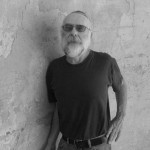 Stephen Mertz is best known for his mainstream thrillers and novels of suspense. His work covers a wide variety of styles from paranormal dark suspense to historical speculative thrillers and hardboiled noir. His most recent novels include Hank & Muddy, The Korean Intercept, and The Castro Directive. This interview is reprinted by permission of the author—Copyright © 1979 by Stephen Mertz
Stephen Mertz is best known for his mainstream thrillers and novels of suspense. His work covers a wide variety of styles from paranormal dark suspense to historical speculative thrillers and hardboiled noir. His most recent novels include Hank & Muddy, The Korean Intercept, and The Castro Directive. This interview is reprinted by permission of the author—Copyright © 1979 by Stephen Mertz
Published on April 06, 2017 11:46
March 27, 2017
THE REASONERS’ WHY ~ JAMES AND LIVIA REASONER
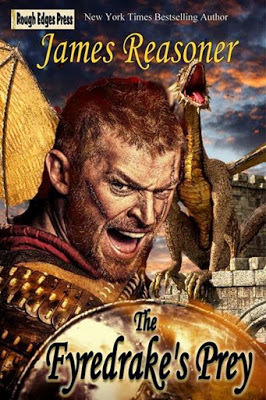
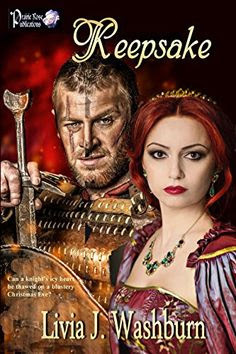 THE REASONERS’ WHY JAMES AND LIVIA REASONER ON WORDS AND PUBLISHING
THE REASONERS’ WHY JAMES AND LIVIA REASONER ON WORDS AND PUBLISHING
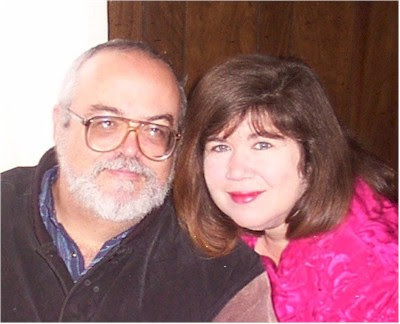 In a career spanning more than thirty years, the list of books and short stories written by the prolific James Reasoner is three times as long as a career criminal’s rap sheet. He regularly burns up keyboards maintaining his million-words-per-year output spread over at least thirty-five pseudonyms—some of which are open secrets, while some are the stuff of deep dark secrets taken to the grave.
In a career spanning more than thirty years, the list of books and short stories written by the prolific James Reasoner is three times as long as a career criminal’s rap sheet. He regularly burns up keyboards maintaining his million-words-per-year output spread over at least thirty-five pseudonyms—some of which are open secrets, while some are the stuff of deep dark secrets taken to the grave.
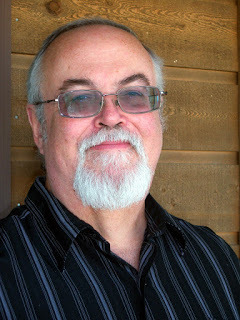 Having had a hand in plotting, editing, and occasionally co-writing novels with James, Livia Reasoner is also an award winning writer of more than 25 books. Under the names Livia J. Washburn and L.J. Washburn, she writes in many genres, including mystery, western, romance, and historical. However, making a living as a writer takes more than putting words on paper. They have to be the right words to keep up with the constantly changing demands of the publishing marketplace and—more recently—publishing technology. The Reasoners have become experts in responding to these challenges.
Having had a hand in plotting, editing, and occasionally co-writing novels with James, Livia Reasoner is also an award winning writer of more than 25 books. Under the names Livia J. Washburn and L.J. Washburn, she writes in many genres, including mystery, western, romance, and historical. However, making a living as a writer takes more than putting words on paper. They have to be the right words to keep up with the constantly changing demands of the publishing marketplace and—more recently—publishing technology. The Reasoners have become experts in responding to these challenges.
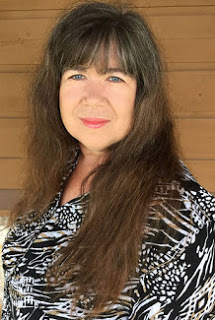 They have actively converted many of their backlist novels into e-books for a new audience of readers. Taking advantage changing technologies, which have leveled the field of book distribution in both print and electronic formats, they also created two successful small press publishers—Rough Edges Press (REP) and Prairie Rose Publications (PRP)—with positive response from writers and readers. Rough Edges Press published 48 books in its first 18 months, bringing out more original novels than reprints. Prairie Rose Publications quickly developed a devoted following for their long list of westerns and western romances written by women. In supporting Prairie Rose, Livia rolled up her sleeves and became involved in marketing and cover creation. Rough Edges became the home for the new Adult Western series Blaze! Written by both well-known and debut authors, the series is rapidly approaching its twentieth title. This work load schedule, along with the often heavy demands and challenges of everyday personal and family life, would be overwhelming for the average mortal. However, James and Livia do it all while continuing to produce a steady output of highly entertaining novels and stories of their own for other publishers. It would be no surprised to discover they wear flashy Lycra leotards and capes under their comfortable, unassuming writer ensembles. By any standards they are writing superheroes. I appreciate them taking time to share some of their experiences in the writing world…********How did you come to the decision to found your small press imprints? LIVIA: The first publishing I did was putting together e-book editions of some of the books James and I had written. Once I had an idea of what I was doing and knew I could format books and design covers, I decided I wanted to help some of the people who had helped us in various ways over the years. This led to the formation of the Western Fictioneers Library, the publishing arm of the writers' organization Western Fictioneers. We reprinted a number of books written by WF members and also did some original books. Then Cheryl Pierson, another WF member, and I decided to start Prairie Rose Publications because we believed there was a strong market for Western romances.
They have actively converted many of their backlist novels into e-books for a new audience of readers. Taking advantage changing technologies, which have leveled the field of book distribution in both print and electronic formats, they also created two successful small press publishers—Rough Edges Press (REP) and Prairie Rose Publications (PRP)—with positive response from writers and readers. Rough Edges Press published 48 books in its first 18 months, bringing out more original novels than reprints. Prairie Rose Publications quickly developed a devoted following for their long list of westerns and western romances written by women. In supporting Prairie Rose, Livia rolled up her sleeves and became involved in marketing and cover creation. Rough Edges became the home for the new Adult Western series Blaze! Written by both well-known and debut authors, the series is rapidly approaching its twentieth title. This work load schedule, along with the often heavy demands and challenges of everyday personal and family life, would be overwhelming for the average mortal. However, James and Livia do it all while continuing to produce a steady output of highly entertaining novels and stories of their own for other publishers. It would be no surprised to discover they wear flashy Lycra leotards and capes under their comfortable, unassuming writer ensembles. By any standards they are writing superheroes. I appreciate them taking time to share some of their experiences in the writing world…********How did you come to the decision to found your small press imprints? LIVIA: The first publishing I did was putting together e-book editions of some of the books James and I had written. Once I had an idea of what I was doing and knew I could format books and design covers, I decided I wanted to help some of the people who had helped us in various ways over the years. This led to the formation of the Western Fictioneers Library, the publishing arm of the writers' organization Western Fictioneers. We reprinted a number of books written by WF members and also did some original books. Then Cheryl Pierson, another WF member, and I decided to start Prairie Rose Publications because we believed there was a strong market for Western romances.
 JAMES: I saw what Livia was doing and I had helped out some with the WF Library. For years I'd had the idea of doing some small press publishing in the back of my head and even had a name picked out: Rough Edges Press. The term ‘Rough Edges’ actually comes from my decades as a pulp fan and refers to the untrimmed edges of the pages in those magazines. So I started out thinking I would do a few pulp reprints and collections of stories by pulp authors I liked.
JAMES: I saw what Livia was doing and I had helped out some with the WF Library. For years I'd had the idea of doing some small press publishing in the back of my head and even had a name picked out: Rough Edges Press. The term ‘Rough Edges’ actually comes from my decades as a pulp fan and refers to the untrimmed edges of the pages in those magazines. So I started out thinking I would do a few pulp reprints and collections of stories by pulp authors I liked.
 What where your initial expectations as small press publishers? LIVIA: I thought we would publish six to eight books a year. JAMES: Same here. I never considered doing more than a book every couple of months, if that many. What was the reality of becoming small press publishers?
What where your initial expectations as small press publishers? LIVIA: I thought we would publish six to eight books a year. JAMES: Same here. I never considered doing more than a book every couple of months, if that many. What was the reality of becoming small press publishers?
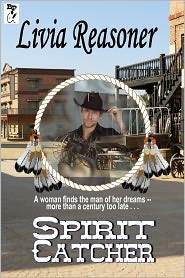 LIVIA: Prairie Rose grew faster than I ever expected. Other imprints branched off from it: Painted Pony Books (young western books), Tornado Alley Publications (young non-western books), Sundown Press (traditional Westerns and historical novels and non-fiction), Fire Star Press (mysteries and science fiction), Prayers and Promises Publications(inspirational fiction)...Between all the imprints, Cheryl and I have published more than 300 books in three years. That's a far cry from what I expected! That is a lot of covers to design, books to format and publish, new release announcements, authors to make sure get their quarterly payments, and 1099s at the end of the year.
LIVIA: Prairie Rose grew faster than I ever expected. Other imprints branched off from it: Painted Pony Books (young western books), Tornado Alley Publications (young non-western books), Sundown Press (traditional Westerns and historical novels and non-fiction), Fire Star Press (mysteries and science fiction), Prayers and Promises Publications(inspirational fiction)...Between all the imprints, Cheryl and I have published more than 300 books in three years. That's a far cry from what I expected! That is a lot of covers to design, books to format and publish, new release announcements, authors to make sure get their quarterly payments, and 1099s at the end of the year.
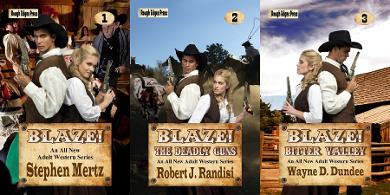 JAMES: Rough Edges Press turned out to be a lot bigger than I anticipated, too. I reprinted quite a few books by friends of mine, but people began to approach me about doing originals, too, and they gradually replaced the reprints in my schedule. Then my long-time friend and occasional collaborator, Stephen Mertz, suggested we do a multi-author Western series, and that became Blaze! I've slowed down my publishing schedule in the past year or so, but REP is still going to be around for the foreseeable future. Prairie Rose and Rough Edges clearly have different mandates. How much, if any, crossover is there between the two?
JAMES: Rough Edges Press turned out to be a lot bigger than I anticipated, too. I reprinted quite a few books by friends of mine, but people began to approach me about doing originals, too, and they gradually replaced the reprints in my schedule. Then my long-time friend and occasional collaborator, Stephen Mertz, suggested we do a multi-author Western series, and that became Blaze! I've slowed down my publishing schedule in the past year or so, but REP is still going to be around for the foreseeable future. Prairie Rose and Rough Edges clearly have different mandates. How much, if any, crossover is there between the two?
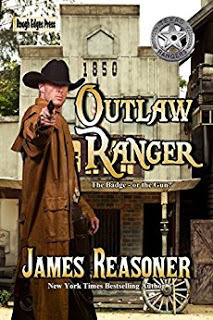 JAMES: I've done a little editing here and there for Prairie Rose and have suggested a few titles for anthologies, etc., but my contributions over there have really been pretty limited. REP, on the other hand, could not exist without Livia. She's formatted every trade paperback I've published and designed nearly all of the covers, in addition to scanning and OCRing the books I've reprinted. She's as much a part of REP as I am. How have the responsibilities of Rough Edges and Prairie Rose impacted your writing schedules? LIVIA: I've always been the type who writes here and there when I can find the time. Keeping up with the publishing has meant there are fewer of those moments, but hasn't really changed the way I work. JAMES:I try to stick to the same sort of writing schedule I've had for the past 30 years. The publishing work gets done in what I'd laughingly refer to as my spare time. That's one reason I've slowed down as far as REP goes. As I get older, it's taking longer to get my writing done, so the publishing has suffered for it. I'd rather put out fewer books and maintain the quality, though. You’ve faced life challenges over the years, as many of us do, of aging parents, health issues, and the demands of house repairs and maintenance. However, you have also experienced the devastation of a major house fire. How do you cope with all of it and still keep putting words on paper? LIVIA: When we lost the house and everything in it in '08, we were also helping take care of both of my parents. It was hard to keep going. But we had an incredible amount of help from family and friends. We also had books under contract, so we didn't have much choice except to keep going.
JAMES: I've done a little editing here and there for Prairie Rose and have suggested a few titles for anthologies, etc., but my contributions over there have really been pretty limited. REP, on the other hand, could not exist without Livia. She's formatted every trade paperback I've published and designed nearly all of the covers, in addition to scanning and OCRing the books I've reprinted. She's as much a part of REP as I am. How have the responsibilities of Rough Edges and Prairie Rose impacted your writing schedules? LIVIA: I've always been the type who writes here and there when I can find the time. Keeping up with the publishing has meant there are fewer of those moments, but hasn't really changed the way I work. JAMES:I try to stick to the same sort of writing schedule I've had for the past 30 years. The publishing work gets done in what I'd laughingly refer to as my spare time. That's one reason I've slowed down as far as REP goes. As I get older, it's taking longer to get my writing done, so the publishing has suffered for it. I'd rather put out fewer books and maintain the quality, though. You’ve faced life challenges over the years, as many of us do, of aging parents, health issues, and the demands of house repairs and maintenance. However, you have also experienced the devastation of a major house fire. How do you cope with all of it and still keep putting words on paper? LIVIA: When we lost the house and everything in it in '08, we were also helping take care of both of my parents. It was hard to keep going. But we had an incredible amount of help from family and friends. We also had books under contract, so we didn't have much choice except to keep going.
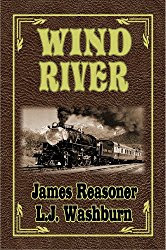 JAMES:On the day of the fire, I was halfway through a book I was writing. I saved our old dog instead of my computer and have never regretted it for one second. That night, while we were staying with Livia's parents, I had trouble sleeping, so I got up, went in the kitchen, found a legal pad and a pen, and started making notes of everything I could remember about the half book I’d lost, so I could start over on it. Within a couple of days, we had new computers and I had set up a place at my in-laws' house where I could start turning out pages again. I think that continuity of effort really helped us get through the experience. We're writers. We write. The fire wasn't going to change that. LIVIA: And keeping up with the day to day challenges of life is no different than it is for anyone else. We do what we have to and go on. You’ve stayed close to your Texas roots your entire life. How do you feel this has helped or hindered your creative life? LIVIA: I suppose there are a lot of places we haven't seen and things we haven't experienced, but family is very important to me and this is where our family is. I would like to do more traveling than we have, but we'll always come home. JAMES: I'm a Texan, for better or worse. Can't really be anything else. And don't want to be. Are there any other genres or non-fiction projects on your writing bucket list? JAMES: I'd like to write more science fiction and horror. I've done a little of both. And I have at least one more crime novel I'd like to write. I have the outline done for it. One of these days... Does a reputation for good writing, delivered to deadline, consistently bring more offers of writing work or do you have to proactively seek out new writing opportunities?
JAMES:On the day of the fire, I was halfway through a book I was writing. I saved our old dog instead of my computer and have never regretted it for one second. That night, while we were staying with Livia's parents, I had trouble sleeping, so I got up, went in the kitchen, found a legal pad and a pen, and started making notes of everything I could remember about the half book I’d lost, so I could start over on it. Within a couple of days, we had new computers and I had set up a place at my in-laws' house where I could start turning out pages again. I think that continuity of effort really helped us get through the experience. We're writers. We write. The fire wasn't going to change that. LIVIA: And keeping up with the day to day challenges of life is no different than it is for anyone else. We do what we have to and go on. You’ve stayed close to your Texas roots your entire life. How do you feel this has helped or hindered your creative life? LIVIA: I suppose there are a lot of places we haven't seen and things we haven't experienced, but family is very important to me and this is where our family is. I would like to do more traveling than we have, but we'll always come home. JAMES: I'm a Texan, for better or worse. Can't really be anything else. And don't want to be. Are there any other genres or non-fiction projects on your writing bucket list? JAMES: I'd like to write more science fiction and horror. I've done a little of both. And I have at least one more crime novel I'd like to write. I have the outline done for it. One of these days... Does a reputation for good writing, delivered to deadline, consistently bring more offers of writing work or do you have to proactively seek out new writing opportunities?
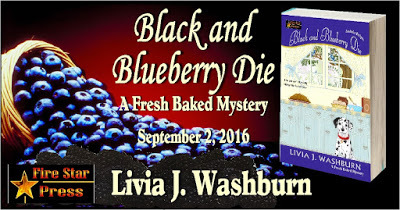 LIVIA: Right now I'm self-publishing my new novels, so I'm not really looking for more opportunities. What I'm seeking is more time to work on them! Since we both already work seven days a week, and haven’t had a non-working vacation in twenty years, I don’t see where I’ll find more time. JAMES: My own stuff I publish through REP. But the vast majority of my writing is ghost work under some established names, and that's lined up for years in advance. Of course, if somebody asked me to write something and it was a project that interested me, I'd sure try to find the time to do it. What has the e-book explosion, the many recent changes in attitudes toward self-publishing, and the challenges faced by traditional publishing in a world of shrinking bookstore chains, affected your writing process, opportunities, and decisions?
LIVIA: Right now I'm self-publishing my new novels, so I'm not really looking for more opportunities. What I'm seeking is more time to work on them! Since we both already work seven days a week, and haven’t had a non-working vacation in twenty years, I don’t see where I’ll find more time. JAMES: My own stuff I publish through REP. But the vast majority of my writing is ghost work under some established names, and that's lined up for years in advance. Of course, if somebody asked me to write something and it was a project that interested me, I'd sure try to find the time to do it. What has the e-book explosion, the many recent changes in attitudes toward self-publishing, and the challenges faced by traditional publishing in a world of shrinking bookstore chains, affected your writing process, opportunities, and decisions?
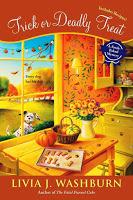
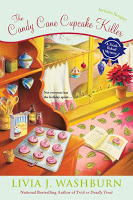
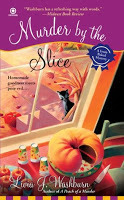 LIVIA: My process hasn't changed other than to get busier with all the publishing. The ability to self-publish has allowed me to write what I want to—for example, continuing my Fresh Baked Mystery series even though the traditional publisher that did the first ten books decided not to go on with it. I published the eleventh book myself and it was very successful, so that tells me the readership is still there. JAMES: I'm one of those so-called hybrid authors. We've self-published a lot of my back-list, and anything new under my own name will come out from Rough Edges Press. But 90% or more of my current work still goes through one of the traditional publishers in New York. As long as this set-up is working for me, I don't see any reason to change it. Changing gears slightly—what were the books you loved as a children (why)? LIVIA: My parents didn't own many books, but my mother was a reader and took us to the library. I recall reading Hardy Boys books and some of the Mrs. Pollifax novels by Dorothy Gilman. Really, I read whatever I could get my hands on. When I was in sixth grade, my mom was in college getting her teaching degree, and for one of her classes she had to read Catch-22. Since a copy of the book was in the house, I read it, too. Not a typical childhood book, I know, but I've never been all that typical.
LIVIA: My process hasn't changed other than to get busier with all the publishing. The ability to self-publish has allowed me to write what I want to—for example, continuing my Fresh Baked Mystery series even though the traditional publisher that did the first ten books decided not to go on with it. I published the eleventh book myself and it was very successful, so that tells me the readership is still there. JAMES: I'm one of those so-called hybrid authors. We've self-published a lot of my back-list, and anything new under my own name will come out from Rough Edges Press. But 90% or more of my current work still goes through one of the traditional publishers in New York. As long as this set-up is working for me, I don't see any reason to change it. Changing gears slightly—what were the books you loved as a children (why)? LIVIA: My parents didn't own many books, but my mother was a reader and took us to the library. I recall reading Hardy Boys books and some of the Mrs. Pollifax novels by Dorothy Gilman. Really, I read whatever I could get my hands on. When I was in sixth grade, my mom was in college getting her teaching degree, and for one of her classes she had to read Catch-22. Since a copy of the book was in the house, I read it, too. Not a typical childhood book, I know, but I've never been all that typical.
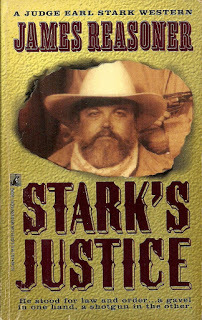 JAMES: When I was in elementary school, we didn't have a school library, but some of my teachers had shelves of books in their room you could check out. One of them also read novels to us, a chapter at a time after lunch, and that was how I discovered Treasure Island, one of my all-time favorite books. From the ‘library shelf’, I read an early science fiction novel called Space Hawk by ‘Anthony Gilmore’ (really Harry E. Bates and D.W. Hall) and thought it was the best thing ever. There was also a book by Eustace Adams called Doomed Demons, about a group of young pilots in World War I. It's probably the grimmest ‘juvenile’ novel I've ever read, with likeable young protagonists being riddled by bullets and going down in flaming crates. From the bookmobile that came out to our little town every Saturday, I read Clarence E. Mulford's Hopalong Cassidy books, Max Brand, Erle Stanley Gardner, and Brett Halliday. So if you look at all that, it's pretty much a blueprint for my reading and writing ever since. What books did you read to your daughters (why)? LIVIA: We loved the Little Critter books by Mercer Mayer—Jemima Puddle Duck, Jack Goes To The Beach, Emma Goes To The Playground. Berenstain Bears books. We read to the kids constantly. They enjoyed it, and so did we. What book(s) made you want to become writers (why)? JAMES: With me it wasn't a book, but rather a short story. I had always liked making up stories for my own entertainment, but when I was a kid, my cousin Richard Finley had a story published in his college literary magazine. I was so impressed to read it in an actual printed magazine, written by somebody I knew, that I decided I could do that, too. LIVIA: James’ Texas Wind. A very intriguing book that made me want to be a part of this crazy writing world. Do you have a favorite time/place to read? JAMES: I try to read a little every morning while I eat breakfast, and I read some before I got to bed at night. Otherwise, it's just a matter of where and when I can catch a few extra minutes.
JAMES: When I was in elementary school, we didn't have a school library, but some of my teachers had shelves of books in their room you could check out. One of them also read novels to us, a chapter at a time after lunch, and that was how I discovered Treasure Island, one of my all-time favorite books. From the ‘library shelf’, I read an early science fiction novel called Space Hawk by ‘Anthony Gilmore’ (really Harry E. Bates and D.W. Hall) and thought it was the best thing ever. There was also a book by Eustace Adams called Doomed Demons, about a group of young pilots in World War I. It's probably the grimmest ‘juvenile’ novel I've ever read, with likeable young protagonists being riddled by bullets and going down in flaming crates. From the bookmobile that came out to our little town every Saturday, I read Clarence E. Mulford's Hopalong Cassidy books, Max Brand, Erle Stanley Gardner, and Brett Halliday. So if you look at all that, it's pretty much a blueprint for my reading and writing ever since. What books did you read to your daughters (why)? LIVIA: We loved the Little Critter books by Mercer Mayer—Jemima Puddle Duck, Jack Goes To The Beach, Emma Goes To The Playground. Berenstain Bears books. We read to the kids constantly. They enjoyed it, and so did we. What book(s) made you want to become writers (why)? JAMES: With me it wasn't a book, but rather a short story. I had always liked making up stories for my own entertainment, but when I was a kid, my cousin Richard Finley had a story published in his college literary magazine. I was so impressed to read it in an actual printed magazine, written by somebody I knew, that I decided I could do that, too. LIVIA: James’ Texas Wind. A very intriguing book that made me want to be a part of this crazy writing world. Do you have a favorite time/place to read? JAMES: I try to read a little every morning while I eat breakfast, and I read some before I got to bed at night. Otherwise, it's just a matter of where and when I can catch a few extra minutes.
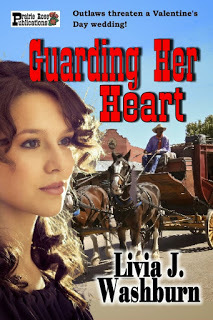 LIVIA: If I’m reading one of the books we’re publishing, or one of James’ ghosted books, I will typically spend all day doing it. Reading for fun has fallen into a few minutes at night, and occasionally at lunch. Do you prefer series books or standalones? JAMES: No real preference, although when I was younger I think I tended to read more series books. LIVIA: I enjoy both. What genre would you read if you were limited to one? JAMES: I don't know if I could stand that! But just for the sake of discussion, probably mysteries. LIVIA: It’s a good thing I don’t have to limit to just one. I don’t think I could pick just one. Is there a specific book or author either of you find yourself recommending over and over? JAMES: Robert E. Howard LIVIA: James Reasoner Is there a book either of you have returned to again and again? JAMES: I've read Treasure Island and The Sun Also Rises probably more than any other novels, but that was when I was younger. I haven't read either of them in many years. I tend not to reread. Too many books, not enough time. I do read Irwin Shaw's short story Main Currents of American Thought every year or two, though. It captures the desperation of writing for a living better than anything else I've ever read. LIVIA: I’ve never had time to read a book more than once, except one I was editing. What is your favorite book to movie adaptation? JAMES: It would be hard to beat The Maltese Falcon. The Searchers is awfully good, too. I think the movie is considerably better than the novel. LIVIA: Shane. A good book, and a good movie. What book would you like to see as a movie?
LIVIA: If I’m reading one of the books we’re publishing, or one of James’ ghosted books, I will typically spend all day doing it. Reading for fun has fallen into a few minutes at night, and occasionally at lunch. Do you prefer series books or standalones? JAMES: No real preference, although when I was younger I think I tended to read more series books. LIVIA: I enjoy both. What genre would you read if you were limited to one? JAMES: I don't know if I could stand that! But just for the sake of discussion, probably mysteries. LIVIA: It’s a good thing I don’t have to limit to just one. I don’t think I could pick just one. Is there a specific book or author either of you find yourself recommending over and over? JAMES: Robert E. Howard LIVIA: James Reasoner Is there a book either of you have returned to again and again? JAMES: I've read Treasure Island and The Sun Also Rises probably more than any other novels, but that was when I was younger. I haven't read either of them in many years. I tend not to reread. Too many books, not enough time. I do read Irwin Shaw's short story Main Currents of American Thought every year or two, though. It captures the desperation of writing for a living better than anything else I've ever read. LIVIA: I’ve never had time to read a book more than once, except one I was editing. What is your favorite book to movie adaptation? JAMES: It would be hard to beat The Maltese Falcon. The Searchers is awfully good, too. I think the movie is considerably better than the novel. LIVIA: Shane. A good book, and a good movie. What book would you like to see as a movie?
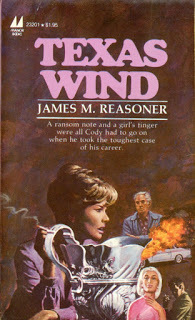 LIVIA: Texas Wind. What fictional character(s) would you like to be friends with in real life? LIVIA: Certainly NOT Ellery Queen! Hang around with him too long and you're bound to be murdered. But Perry Mason might be a good person to have as a friend. If you ever needed a lawyer, he'd be the guy to go to. JAMES: Archie Goodwin. Sure, he can be a smart-aleck, but he always sticks up for his friends. Writers, editors, publishers, marketers, artistic directors—what professional goals are part of your future?
LIVIA: Texas Wind. What fictional character(s) would you like to be friends with in real life? LIVIA: Certainly NOT Ellery Queen! Hang around with him too long and you're bound to be murdered. But Perry Mason might be a good person to have as a friend. If you ever needed a lawyer, he'd be the guy to go to. JAMES: Archie Goodwin. Sure, he can be a smart-aleck, but he always sticks up for his friends. Writers, editors, publishers, marketers, artistic directors—what professional goals are part of your future?
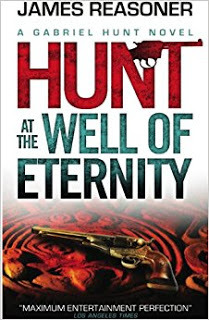 JAMES: My goal is to keep writing and selling for as long as I can, although at this point I wouldn't mind slowing down a little. After publishing so many books for Rough Edges Press in a fairly short period of time, I intend to taper off and publish only a few books each year. I don't want to give it up entirely, though. And there are some days when I think, "Yeah, I'm done," and want to spend the rest of my life reading books, watching movies, and taking walks. I'm sure the reality will fall somewhere in between. LIVIA: To get caught up enough or slow down enough for a non-working vacation.********Thx to Livia and James for a thoroughly entertaining interview. I’m glad to call you guys friends, but you are also inspirations—to me and many others...
ROUGH EDGES BLOG
ROUGH EDGES PRESS
PRAIRIE ROSE PUBLICATIONS
PRAIRIE ROSE BLOG
JAMES: My goal is to keep writing and selling for as long as I can, although at this point I wouldn't mind slowing down a little. After publishing so many books for Rough Edges Press in a fairly short period of time, I intend to taper off and publish only a few books each year. I don't want to give it up entirely, though. And there are some days when I think, "Yeah, I'm done," and want to spend the rest of my life reading books, watching movies, and taking walks. I'm sure the reality will fall somewhere in between. LIVIA: To get caught up enough or slow down enough for a non-working vacation.********Thx to Livia and James for a thoroughly entertaining interview. I’m glad to call you guys friends, but you are also inspirations—to me and many others...
ROUGH EDGES BLOG
ROUGH EDGES PRESS
PRAIRIE ROSE PUBLICATIONS
PRAIRIE ROSE BLOG
Published on March 27, 2017 15:25
March 24, 2017
ALLIGATOR MAN—BILL CRIDER
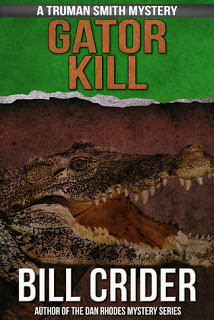
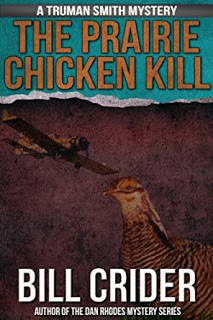 ALLIGATOR MAN—BILL CRIDER
ALLIGATOR MAN—BILL CRIDER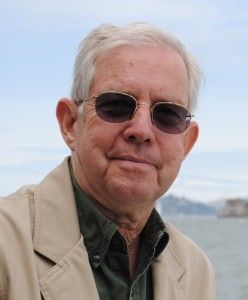 This is another interview where full disclosure is required. Bill Crider and I have been friends since our early days of mystery fandom and fanzines. We both broke into professional fiction writing in the mid-eighties, both in (different) men’s adventure series paperbacks published under pseudonyms. Since those days, we’ve continued our friendship through years of publishing successes under our own names, mystery conventions, tales of recreational running, and shared collecting obsessions...********If Bill Crider was on the FBI’s Most Wanted list, what biographical details would accompany the fuzzy photo of you?
This is another interview where full disclosure is required. Bill Crider and I have been friends since our early days of mystery fandom and fanzines. We both broke into professional fiction writing in the mid-eighties, both in (different) men’s adventure series paperbacks published under pseudonyms. Since those days, we’ve continued our friendship through years of publishing successes under our own names, mystery conventions, tales of recreational running, and shared collecting obsessions...********If Bill Crider was on the FBI’s Most Wanted list, what biographical details would accompany the fuzzy photo of you?
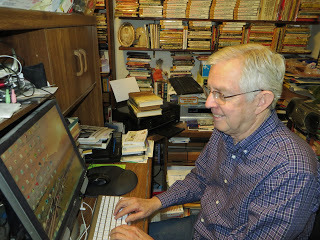 That fuzzy photo would probably have been taken in April 1970 when the student body at The University of Texas at Austin learned about the invasion of Cambodia. There was a huge rally on campus, and I was caught up in the middle of it because the English building was right next to the mall where a giant demonstration was held. I was outside the English building and headed for the mall to see what was going on, when every cop in Austin marched up in full riot gear. I heard later that snipers were stationed on state buildings on the street to the capitol in case students started marching in that direction with intent to riot. Helicopters chattered overhead. Good times, good times. As for the biographical details, “Born: Mexia (that’s Muh-HAY-uh), Texas, long ago. Nearsighted. Can read and write a little. Scrawny, but game.” We’ve been friends for a long time, but I’ve never know the origin of the connection between Bill Crider and alligators, so now is the time to spill. How did it all start? It all began with an article about books about alligators in the sewers I wrote for a fanzine—Andy Jaysnovitch’s, The Not-So Private-Eye. People liked the article, I guess, so they started sending me alligators and giving them to me at conventions. I have dozens of them now, the latest having just arrived from Cap’n Bob Napier only last week. It never ends. Before we dig into your writing career, let’s talk about book collecting. What makes books important to you? I first loved books because I loved reading, which somehow led me to loving books as physical objects. I didn’t want to let go of the ones I loved, so I didn’t. What I have is more of an accumulation, and it’s a lot of books. A lot. How long have you been collecting?
That fuzzy photo would probably have been taken in April 1970 when the student body at The University of Texas at Austin learned about the invasion of Cambodia. There was a huge rally on campus, and I was caught up in the middle of it because the English building was right next to the mall where a giant demonstration was held. I was outside the English building and headed for the mall to see what was going on, when every cop in Austin marched up in full riot gear. I heard later that snipers were stationed on state buildings on the street to the capitol in case students started marching in that direction with intent to riot. Helicopters chattered overhead. Good times, good times. As for the biographical details, “Born: Mexia (that’s Muh-HAY-uh), Texas, long ago. Nearsighted. Can read and write a little. Scrawny, but game.” We’ve been friends for a long time, but I’ve never know the origin of the connection between Bill Crider and alligators, so now is the time to spill. How did it all start? It all began with an article about books about alligators in the sewers I wrote for a fanzine—Andy Jaysnovitch’s, The Not-So Private-Eye. People liked the article, I guess, so they started sending me alligators and giving them to me at conventions. I have dozens of them now, the latest having just arrived from Cap’n Bob Napier only last week. It never ends. Before we dig into your writing career, let’s talk about book collecting. What makes books important to you? I first loved books because I loved reading, which somehow led me to loving books as physical objects. I didn’t want to let go of the ones I loved, so I didn’t. What I have is more of an accumulation, and it’s a lot of books. A lot. How long have you been collecting?
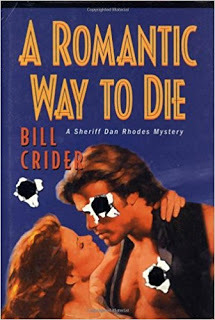 Things started getting bad around 1966, when I decided I wanted all the first printings of John D. MacDonald’s paperback originals. They were easy enough to find in those days, and they led me to decide maybe I needed to collect crime and mystery paperback originals. Which led to, well...you know. How many genres do you collect? Mystery and crime, and SF to a lesser extent. And some sleaze. And some books just because of the covers. It’s a sickness, or as Nicholas Basbanes put it, a gentle madness. What is the heart of your collection? I’d have to say my Harry Whittington set. I have just about every paperback he ever wrote, and I’m looking for the other two or three. They absolutely never turn up. I got many of the ones I own because Harry himself sent them to me many a year ago. He was a great guy. How do you store and preserve the books? They’re on my shelves, with no special care except a few are in bags. There’s not really much you can do to save paperbacks, which are slowly oxidizing themselves into oblivion. I’m just going to enjoy them now and let others worry about what happens to them after I’m gone. What do you look for in a current book before adding it to your collection? I do have a few current books, but mostly I buy them, read them, and send them on their way. Except for books by people I know, and that’s a lot of people. I even have hardbacks by people I know. Did I mention it’s a sickness? Are there books you pass on to Friends of the Library or other sources, or all the books in your collection permanent additions?
Things started getting bad around 1966, when I decided I wanted all the first printings of John D. MacDonald’s paperback originals. They were easy enough to find in those days, and they led me to decide maybe I needed to collect crime and mystery paperback originals. Which led to, well...you know. How many genres do you collect? Mystery and crime, and SF to a lesser extent. And some sleaze. And some books just because of the covers. It’s a sickness, or as Nicholas Basbanes put it, a gentle madness. What is the heart of your collection? I’d have to say my Harry Whittington set. I have just about every paperback he ever wrote, and I’m looking for the other two or three. They absolutely never turn up. I got many of the ones I own because Harry himself sent them to me many a year ago. He was a great guy. How do you store and preserve the books? They’re on my shelves, with no special care except a few are in bags. There’s not really much you can do to save paperbacks, which are slowly oxidizing themselves into oblivion. I’m just going to enjoy them now and let others worry about what happens to them after I’m gone. What do you look for in a current book before adding it to your collection? I do have a few current books, but mostly I buy them, read them, and send them on their way. Except for books by people I know, and that’s a lot of people. I even have hardbacks by people I know. Did I mention it’s a sickness? Are there books you pass on to Friends of the Library or other sources, or all the books in your collection permanent additions?
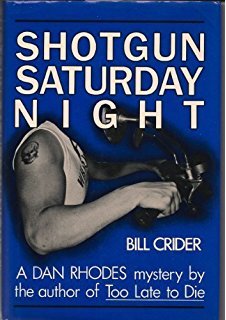 I do pass on books to the local Friends for their ongoing book sale. I get a lot of review copies, and many of these go to the Friends after I’ve read them or at least looked them over. I occasionally pass on a book to someone I think I will enjoy it. That’s about it. Your history with the men’s adventure genre began with one of the most iconic characters in the genre. How did the situation come about? The husband of a wife in a little writing group I was in said he thought we could write a Nick Carter book. He managed the local Allied Van Lines, and he said all the truck drivers were reading Nick Carter, which he described as James Bond for truck drivers. To make a very long story short, we did write one of the books and somehow managed to sell it. The editor loved it and wanted more, but by the time we’d done a couple of outlines, that editor was gone. The new editor wasn’t impressed and hired a several people (Bob Randisi was one of them, I think, and probably Bob Vardeman) to do a good many of the books around that time. How did it influence your career? Probably not much, other than letting me know I could write fiction an editor would buy. That’s important. What were the lessons learned from your debut novel?
I do pass on books to the local Friends for their ongoing book sale. I get a lot of review copies, and many of these go to the Friends after I’ve read them or at least looked them over. I occasionally pass on a book to someone I think I will enjoy it. That’s about it. Your history with the men’s adventure genre began with one of the most iconic characters in the genre. How did the situation come about? The husband of a wife in a little writing group I was in said he thought we could write a Nick Carter book. He managed the local Allied Van Lines, and he said all the truck drivers were reading Nick Carter, which he described as James Bond for truck drivers. To make a very long story short, we did write one of the books and somehow managed to sell it. The editor loved it and wanted more, but by the time we’d done a couple of outlines, that editor was gone. The new editor wasn’t impressed and hired a several people (Bob Randisi was one of them, I think, and probably Bob Vardeman) to do a good many of the books around that time. How did it influence your career? Probably not much, other than letting me know I could write fiction an editor would buy. That’s important. What were the lessons learned from your debut novel?
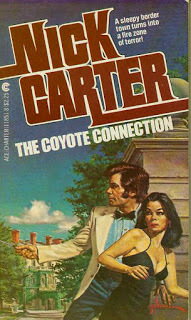 From the Nick Carter novel, not much. It was a thrill to see it in print, and I learned I loved the feeling of holding a book I’d written. I also learned editors don’t always stick around for long and a new editor might not like what a previous one liked. It’s as true now as it was then. You also wrote three novels in the men’s adventure style series, The M.I.A. Hunter. What was the experience like and have you contributed to other ‘house name’ series to which you can contractually admit?
From the Nick Carter novel, not much. It was a thrill to see it in print, and I learned I loved the feeling of holding a book I’d written. I also learned editors don’t always stick around for long and a new editor might not like what a previous one liked. It’s as true now as it was then. You also wrote three novels in the men’s adventure style series, The M.I.A. Hunter. What was the experience like and have you contributed to other ‘house name’ series to which you can contractually admit?
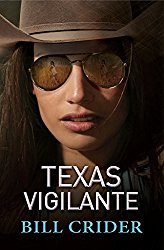 That was a great experience. Steve Mertz sent me an outline for each one, and I wrote the book based on it. Aside from that, I had all the freedom I could’ve wanted. I always tried to write the best book I could, no matter what genre, and I’m proud of the work I did on those. Steve may well have reworked the books, but I didn’t read them after publication, so I don’t know. My other house name work is all under the rose, although some of it’s no big secret, as anyone with access to Wikipedia can discover. You’re known as mystery writer, but you’ve also written a number of westerns and horror novels. How did you come to jump genres, and do you have a favorite?
That was a great experience. Steve Mertz sent me an outline for each one, and I wrote the book based on it. Aside from that, I had all the freedom I could’ve wanted. I always tried to write the best book I could, no matter what genre, and I’m proud of the work I did on those. Steve may well have reworked the books, but I didn’t read them after publication, so I don’t know. My other house name work is all under the rose, although some of it’s no big secret, as anyone with access to Wikipedia can discover. You’re known as mystery writer, but you’ve also written a number of westerns and horror novels. How did you come to jump genres, and do you have a favorite?
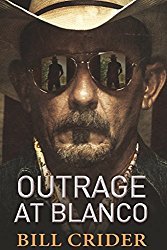 When I started writing, I told my agent I’d always wanted to write a western. She said, “What are you waiting for?” So, I wrote several for M. Evans. Dell picked up two others (Outrage at Blanco and Texas Vigilante), and those have done very well in reprint from Brash Books. The horror novels came about the same way. I told my agent I had an idea for a horror novel, and she said, “What are you waiting for?” She sold four or five of them to Zebra, as by my Evil Twin pseudonym, Jack MacLane. My heart’s always been with the mystery field, though, and that’s where I’ve had the most success. You’ve written a number of different mystery series. How did you come to diversify?
When I started writing, I told my agent I’d always wanted to write a western. She said, “What are you waiting for?” So, I wrote several for M. Evans. Dell picked up two others (Outrage at Blanco and Texas Vigilante), and those have done very well in reprint from Brash Books. The horror novels came about the same way. I told my agent I had an idea for a horror novel, and she said, “What are you waiting for?” She sold four or five of them to Zebra, as by my Evil Twin pseudonym, Jack MacLane. My heart’s always been with the mystery field, though, and that’s where I’ve had the most success. You’ve written a number of different mystery series. How did you come to diversify?
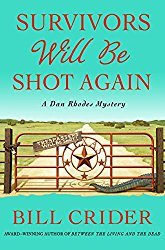 I discovered I had too many ideas for just one series, and I’d always wanted to write about the small-time academic world I inhabited. “What are you waiting for?” I really had fun writing those books. And I’d always loved private-eye novels. “What are you waiting for?” The Truman Smith series is dear to my heart, but readers didn’t agree, I guess. Thanks to my agent, who got me the job, I also got the chance to write a private-eye novel with Humphrey Bogart as a featured character. It’s one of my better books, though nobody has heard of it—We’ll Always Have Murder is the title.
I discovered I had too many ideas for just one series, and I’d always wanted to write about the small-time academic world I inhabited. “What are you waiting for?” I really had fun writing those books. And I’d always loved private-eye novels. “What are you waiting for?” The Truman Smith series is dear to my heart, but readers didn’t agree, I guess. Thanks to my agent, who got me the job, I also got the chance to write a private-eye novel with Humphrey Bogart as a featured character. It’s one of my better books, though nobody has heard of it—We’ll Always Have Murder is the title.
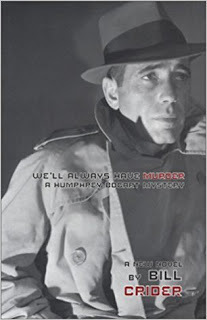 What is your process when beginning a new book? Is it different for different books? I just sit down and start writing. That’s the way it’s been for just about every book. So far it’s worked out for me. When asked, what advice do you share about writing and what do you think has the most impact? I don’t know what has any impact, but my advice is the same all the time, a variation on the advice of the great Robert A. Heinlein: You have to write, you have to write every day, and you have to submit what you write. I don’t know if anybody ever listens to me. What was a book you loved as a child? There are many. Mother Goose and Dr. Seuss were big favorites because I love rhyme and rhythm. And then there were the Bobbsey Twins, Bomba the Jungle Boy, John Carter of Mars, the Hardy Boys, Nancy Drew...There seems to be a theme here—mystery and adventure. I haven’t changed a bit. What were the books you read to your children? That was mostly Judy’s job. I was the one who’d lie in the floor in their bedrooms after they were put to bed and make up stories to tell them. Cubby the Bear was a big favorite. What book made you want to be a writer? Just about everything I ever read. I really wanted to be Raymond Chandler and Ernest Hemingway and William Faulkner, but that didn’t work out.
What is your process when beginning a new book? Is it different for different books? I just sit down and start writing. That’s the way it’s been for just about every book. So far it’s worked out for me. When asked, what advice do you share about writing and what do you think has the most impact? I don’t know what has any impact, but my advice is the same all the time, a variation on the advice of the great Robert A. Heinlein: You have to write, you have to write every day, and you have to submit what you write. I don’t know if anybody ever listens to me. What was a book you loved as a child? There are many. Mother Goose and Dr. Seuss were big favorites because I love rhyme and rhythm. And then there were the Bobbsey Twins, Bomba the Jungle Boy, John Carter of Mars, the Hardy Boys, Nancy Drew...There seems to be a theme here—mystery and adventure. I haven’t changed a bit. What were the books you read to your children? That was mostly Judy’s job. I was the one who’d lie in the floor in their bedrooms after they were put to bed and make up stories to tell them. Cubby the Bear was a big favorite. What book made you want to be a writer? Just about everything I ever read. I really wanted to be Raymond Chandler and Ernest Hemingway and William Faulkner, but that didn’t work out.
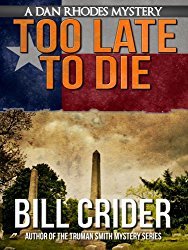 What is your favorite book to movie adaptation? Tie between The Maltese Falcon and The Big Sleep. What book would you like to see as a movie? Anything I’ve written would suit me just fine. What imaginary place from a book would you want to live? Barsoom.
*If you don't know where Barsoom is look it up immediately. You've got some great reading ahead...
What genre would you read if you were limited to one? Probably mysteries. Those are what I read most of, anyway.
What is your favorite book to movie adaptation? Tie between The Maltese Falcon and The Big Sleep. What book would you like to see as a movie? Anything I’ve written would suit me just fine. What imaginary place from a book would you want to live? Barsoom.
*If you don't know where Barsoom is look it up immediately. You've got some great reading ahead...
What genre would you read if you were limited to one? Probably mysteries. Those are what I read most of, anyway.
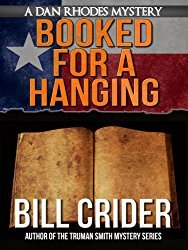 Is there a book you’ve returned to again and again? Anything by Ross Thomas and Alistair MacLean. I’ve read Catch-22 probably more times than any other. Catcher in the Rye is right up there, along with a few others. What fictional character(s) would you like to have a beer with? Hap and Leonard.
*Two outrageous characters created by Joe R. Lansdale...
What was the last novel to make you laugh? Joe R. Lansdale’s Rusty Puppy, just a week or so ago.
Is there a book you’ve returned to again and again? Anything by Ross Thomas and Alistair MacLean. I’ve read Catch-22 probably more times than any other. Catcher in the Rye is right up there, along with a few others. What fictional character(s) would you like to have a beer with? Hap and Leonard.
*Two outrageous characters created by Joe R. Lansdale...
What was the last novel to make you laugh? Joe R. Lansdale’s Rusty Puppy, just a week or so ago.
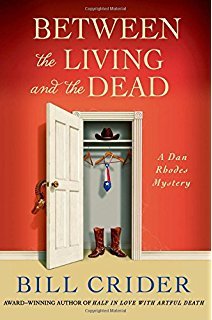 What was the last novel to make you cry? It’s been a while. Probably The Fault in our Stars. I’m a big John Green fan. What are you reading now? The Soak by Patrick McLean. What is currently keeping you working at the keyboard? I’m working on what may well be the final Sheriff Dan Rhodes novel, working title That Old Scoundrel Death.********Thx, Bill for taking a turn in the interrogation room. I appreciate your friendship and humor...Be sure to take care of those VBKs (Very Bad Kittens), or are they taking care of you? FOR MORE ON BILL CRIDER AND THE VBKs CLICK HERE
What was the last novel to make you cry? It’s been a while. Probably The Fault in our Stars. I’m a big John Green fan. What are you reading now? The Soak by Patrick McLean. What is currently keeping you working at the keyboard? I’m working on what may well be the final Sheriff Dan Rhodes novel, working title That Old Scoundrel Death.********Thx, Bill for taking a turn in the interrogation room. I appreciate your friendship and humor...Be sure to take care of those VBKs (Very Bad Kittens), or are they taking care of you? FOR MORE ON BILL CRIDER AND THE VBKs CLICK HERE
Published on March 24, 2017 13:20
March 22, 2017
WRITERS AND FIGHTERS
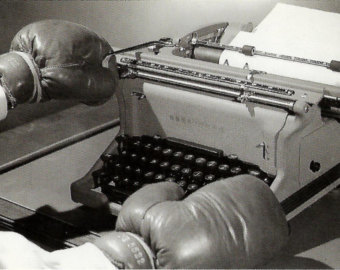 WRITERS AND FIGHTERS In a straightforward world, boxing is boxing. From the view of a romantic, however, it’s the sweet science. And for those with a more hardboiled twist, it’s the fight racket, prizefighting, or the train to Palookaville...For writers, it’s the Golden Fleece. There is a cinematic lyricism inherent in boxing, which has spoken to the souls of uncountable scribes since the early Greeks first began throwing fists at one another. Writers who have never thrown a punch, and those who have both given and taken their share of fists to the face, have found their true muse in boxing’s gladiatorial clashes. But there is something more tying writers to fighters—fighting is writing and writing is fighting...A writer’s blank page is his ring, words are his punches, tone and intonation are his footwork, re-writing and re-writing are the miles and miles of roadwork and sit-ups, the bell is the deadline, the blood on the page is the blood on the canvas...and the sweat is the sweat in both professions. Fighters are taught to punch through their opponents to knock them out, while writers strive to break through a reader’s cynicism and turn his world upside down. And while untold symphonies of words have been used to capture the drama of real world bouts, it is in the world of fiction where writers have taken the metaphoric spirit of boxing and delivered the knockout punch. The fight fiction genre has become an integral part of our cultural history—especially when economic times have been as tough as the characters in a fight fiction tale. I have long been fascinated by the history of fight fiction and those writers who have used it to create stories going far beyond the big fight finish of most boxing tales.
WRITERS AND FIGHTERS In a straightforward world, boxing is boxing. From the view of a romantic, however, it’s the sweet science. And for those with a more hardboiled twist, it’s the fight racket, prizefighting, or the train to Palookaville...For writers, it’s the Golden Fleece. There is a cinematic lyricism inherent in boxing, which has spoken to the souls of uncountable scribes since the early Greeks first began throwing fists at one another. Writers who have never thrown a punch, and those who have both given and taken their share of fists to the face, have found their true muse in boxing’s gladiatorial clashes. But there is something more tying writers to fighters—fighting is writing and writing is fighting...A writer’s blank page is his ring, words are his punches, tone and intonation are his footwork, re-writing and re-writing are the miles and miles of roadwork and sit-ups, the bell is the deadline, the blood on the page is the blood on the canvas...and the sweat is the sweat in both professions. Fighters are taught to punch through their opponents to knock them out, while writers strive to break through a reader’s cynicism and turn his world upside down. And while untold symphonies of words have been used to capture the drama of real world bouts, it is in the world of fiction where writers have taken the metaphoric spirit of boxing and delivered the knockout punch. The fight fiction genre has become an integral part of our cultural history—especially when economic times have been as tough as the characters in a fight fiction tale. I have long been fascinated by the history of fight fiction and those writers who have used it to create stories going far beyond the big fight finish of most boxing tales.
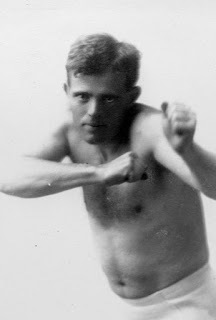 Even before the explosion of fight fiction in the pulps of the ‘30s and ‘40s, Jack London was penning fight stories for the masses, such as his classics A Piece of Steak and The Abysmal Brute. Feeding the need of the everyman to rise above his daily struggle for survival through vicarious fight entertainment, London’s fight tales were devoured. London learned to box by sparring with his friend Jim Whitaker, and his love of the sport never waned. Wherever his wanderings took him, London always had a pair of boxing gloves, always ready to mix it up with any challenger. Most often, however, London’s regular sparring partner was his wife, Charmian Kittredge, with whom he routinely boxed at home.
Even before the explosion of fight fiction in the pulps of the ‘30s and ‘40s, Jack London was penning fight stories for the masses, such as his classics A Piece of Steak and The Abysmal Brute. Feeding the need of the everyman to rise above his daily struggle for survival through vicarious fight entertainment, London’s fight tales were devoured. London learned to box by sparring with his friend Jim Whitaker, and his love of the sport never waned. Wherever his wanderings took him, London always had a pair of boxing gloves, always ready to mix it up with any challenger. Most often, however, London’s regular sparring partner was his wife, Charmian Kittredge, with whom he routinely boxed at home.
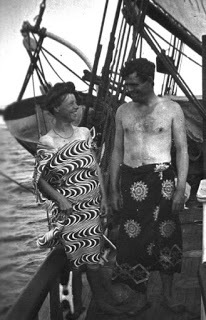 Even on his sloop Snark, travelling to the Solomon Islands, or on the Tymeric from Sydney, Australia, to Ecuador, or the Dirgo from Baltimore to Seattle in 1912, Jack and Charmain would put on their bathing suits and square off for an hour of sparring before throwing buckets of salt water on one another. Because he couldn’t strike back against Charmain as he would against another man, London developed an almost impenetrable defense, making him more than a challenge for any man he toed the line against. London hated bullfighting and hunting, considering them without any sporting interest. However, the specific mano-a-mano science of boxing fascinated him. He always tried to attend professional fights as a reporter in order to secure a ringside seat.
Even on his sloop Snark, travelling to the Solomon Islands, or on the Tymeric from Sydney, Australia, to Ecuador, or the Dirgo from Baltimore to Seattle in 1912, Jack and Charmain would put on their bathing suits and square off for an hour of sparring before throwing buckets of salt water on one another. Because he couldn’t strike back against Charmain as he would against another man, London developed an almost impenetrable defense, making him more than a challenge for any man he toed the line against. London hated bullfighting and hunting, considering them without any sporting interest. However, the specific mano-a-mano science of boxing fascinated him. He always tried to attend professional fights as a reporter in order to secure a ringside seat.
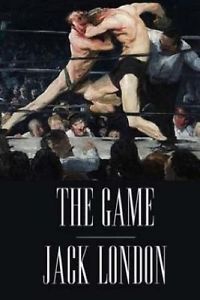 In 1905, he wrote one of his most highly regarded fight stories, The Game, which was serialized in Metropolitan Magazine. The story caused a clamor when critics claimed the story’s conclusion was over-the-top as a fighter could not be killed by hitting his head on the canvas. London’s reply was a claim to have seen it happen in the West Oakland Athletic Club. Eventually, lightweight champion of the world, Jimmy Britt, settled things in the San Francisco Examiner when he was quoted as saying, “With...nothing more to guarantee me he knows The Game than his description of his fictional prize-fight, I would, if he were part of our world, propose or accept him as referee of my impending battle with Nelson."
In 1905, he wrote one of his most highly regarded fight stories, The Game, which was serialized in Metropolitan Magazine. The story caused a clamor when critics claimed the story’s conclusion was over-the-top as a fighter could not be killed by hitting his head on the canvas. London’s reply was a claim to have seen it happen in the West Oakland Athletic Club. Eventually, lightweight champion of the world, Jimmy Britt, settled things in the San Francisco Examiner when he was quoted as saying, “With...nothing more to guarantee me he knows The Game than his description of his fictional prize-fight, I would, if he were part of our world, propose or accept him as referee of my impending battle with Nelson."
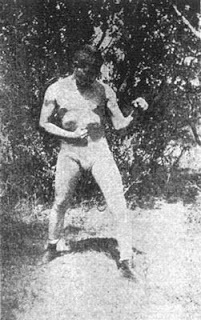 During the height of the pulp era on the ‘30s and ‘40s, Robert E. Howard was another writer who banged out fight stories while also engaging in the pugilistic arts. Even though as a child he was bookish and intellectual, in his teen years he took up bodybuilding before eventually entering the ring as an amateur boxer. The first heyday of fight fiction , however, came in the American pulps from the turn of the 20thcentury through their final issues in the 1950’s. While the sports pulps have not become as collectable as the hero pulps or the detective pulps, there were at least fifty sport pulp titles available monthly during their zenith—and their pages were filled with fistic action.
During the height of the pulp era on the ‘30s and ‘40s, Robert E. Howard was another writer who banged out fight stories while also engaging in the pugilistic arts. Even though as a child he was bookish and intellectual, in his teen years he took up bodybuilding before eventually entering the ring as an amateur boxer. The first heyday of fight fiction , however, came in the American pulps from the turn of the 20thcentury through their final issues in the 1950’s. While the sports pulps have not become as collectable as the hero pulps or the detective pulps, there were at least fifty sport pulp titles available monthly during their zenith—and their pages were filled with fistic action.
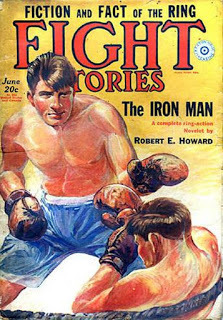 Two pulp magazines in particular, Fight Storiesand Knockout published nothing but fight fiction during their run on the newsstands. Jack Dempsey’s Fight Magazine was another, but it only had a short run. Fight Stories often featured tales staring Sailor Steve Costigan, the lovable, hard-fisted, and innocent semi-pro pugilist who regularly squared-off against dastardly villains in exotic ports of call. Created by Robert E. Howard, the Sailor Steve Costigan stories have endured to become the standard of the genre and are still readily available.
Two pulp magazines in particular, Fight Storiesand Knockout published nothing but fight fiction during their run on the newsstands. Jack Dempsey’s Fight Magazine was another, but it only had a short run. Fight Stories often featured tales staring Sailor Steve Costigan, the lovable, hard-fisted, and innocent semi-pro pugilist who regularly squared-off against dastardly villains in exotic ports of call. Created by Robert E. Howard, the Sailor Steve Costigan stories have endured to become the standard of the genre and are still readily available.
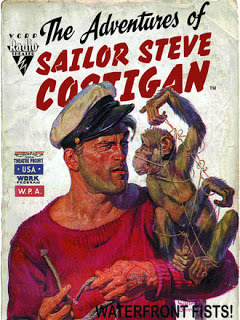 Best known as the creator of Conan The Barbarian, Solomon Kane, and other sword and sorcerycharacters, Howard had a lifelong interest in boxing, attending fights and avidly following the careers of his favorite fighters. During the height of the pulp era, he banged out numerous fight stories claiming to considered his fictional fight tales—especially The Iron Man, and the adventures of Sailor Steve Costigan—as among the best of his works. Howardwrote more stories about Costigan and his pugilistic ilk than any of his more famous fantasy series characters. His boxing tales and the hundreds of other two-fisted pulp yarns helped a generation of readers to fight through the Great Depression and the tough years to follow.
Best known as the creator of Conan The Barbarian, Solomon Kane, and other sword and sorcerycharacters, Howard had a lifelong interest in boxing, attending fights and avidly following the careers of his favorite fighters. During the height of the pulp era, he banged out numerous fight stories claiming to considered his fictional fight tales—especially The Iron Man, and the adventures of Sailor Steve Costigan—as among the best of his works. Howardwrote more stories about Costigan and his pugilistic ilk than any of his more famous fantasy series characters. His boxing tales and the hundreds of other two-fisted pulp yarns helped a generation of readers to fight through the Great Depression and the tough years to follow.
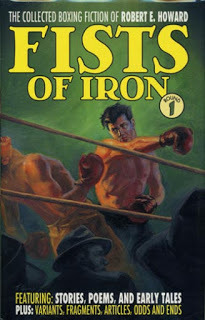
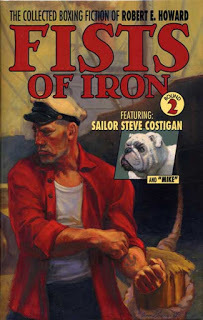
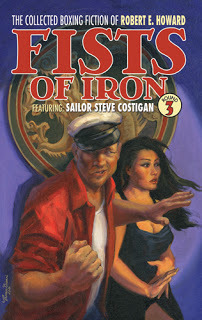
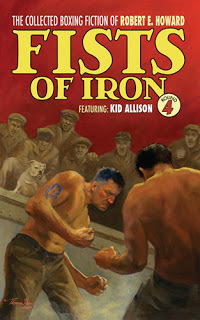 During the ‘50s, the printed tales of fight fiction gave way to a wider appreciation of live bouts. Television brought those fights into American living rooms for all to see. However, as the public became jaded by the scandal of fight fixing and the real life encroachment of organized crime into the fight game, a new realism in fight fiction wrapped its hands with tape and pulled on battered leather gloves illegally loaded with lead.
During the ‘50s, the printed tales of fight fiction gave way to a wider appreciation of live bouts. Television brought those fights into American living rooms for all to see. However, as the public became jaded by the scandal of fight fixing and the real life encroachment of organized crime into the fight game, a new realism in fight fiction wrapped its hands with tape and pulled on battered leather gloves illegally loaded with lead.
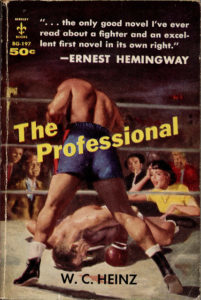 Published in 1958, The Professional written by W. C. Heinz cast a harsh reflection of the seedy circus-like atmosphere of boxing with its assorted hangers-on, crooked promoters, and jaded journalists. With his lean sentences, rough-and-ready dialogue, dry wit, and you-are-there style, Heinz brilliantly used the cynical eyes of fictional sports writer Frank Hughes to recount the trials of middleweight Eddie Brown and his crusty trainer, Doc Carroll, as Brown prepares for a championship fight. Heinz’ novel is still as revered today as it was when Hemingway—himself an amateur pugilist and teller of fight stories such as Fifty Grand and A Matter of Colour—declared it the only good novel about a fighter I've read and an excellent novel in its own right. Movies also reflected the public’s growing disenchantment with boxing in the ‘50s. Humphrey Bogart’s final screen appearance in 1956’s The Harder They Fall—based on Budd Schulberg’s 1947 novel—dramatizes a thinly disguised account of the real life boxing scandal involving champion Primo Carnera. Bogart's character, Eddie Willis, was based on the career of boxing writer and event promoter Harold Conrad. The book and film pulled no punches, showing brutal and brutish fight scenes coupled with the cynical and humiliating treatment of fighters by those surrounding them—which further reflected the middle class workers’ own feelings of punitive treatment by upper management.
Published in 1958, The Professional written by W. C. Heinz cast a harsh reflection of the seedy circus-like atmosphere of boxing with its assorted hangers-on, crooked promoters, and jaded journalists. With his lean sentences, rough-and-ready dialogue, dry wit, and you-are-there style, Heinz brilliantly used the cynical eyes of fictional sports writer Frank Hughes to recount the trials of middleweight Eddie Brown and his crusty trainer, Doc Carroll, as Brown prepares for a championship fight. Heinz’ novel is still as revered today as it was when Hemingway—himself an amateur pugilist and teller of fight stories such as Fifty Grand and A Matter of Colour—declared it the only good novel about a fighter I've read and an excellent novel in its own right. Movies also reflected the public’s growing disenchantment with boxing in the ‘50s. Humphrey Bogart’s final screen appearance in 1956’s The Harder They Fall—based on Budd Schulberg’s 1947 novel—dramatizes a thinly disguised account of the real life boxing scandal involving champion Primo Carnera. Bogart's character, Eddie Willis, was based on the career of boxing writer and event promoter Harold Conrad. The book and film pulled no punches, showing brutal and brutish fight scenes coupled with the cynical and humiliating treatment of fighters by those surrounding them—which further reflected the middle class workers’ own feelings of punitive treatment by upper management.
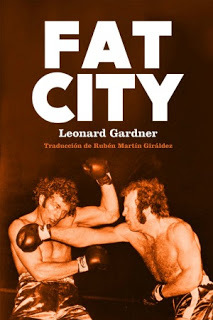 Finally, in 1969, the noir edge of fight stories was capped with the publication of Fat City. Written by Leonard Gardner, Fat City, set in the small-time boxing circuit of Stockton, California in the late ‘50s, became an acclaimed film from director John Houston in 1972. As in The Professional and The Harder They Fall, the message of Fat City was a harsh metaphor for the impossibility of a public striving to get ahead while surrounded by forces determined to derail them at every turn.
Finally, in 1969, the noir edge of fight stories was capped with the publication of Fat City. Written by Leonard Gardner, Fat City, set in the small-time boxing circuit of Stockton, California in the late ‘50s, became an acclaimed film from director John Houston in 1972. As in The Professional and The Harder They Fall, the message of Fat City was a harsh metaphor for the impossibility of a public striving to get ahead while surrounded by forces determined to derail them at every turn.
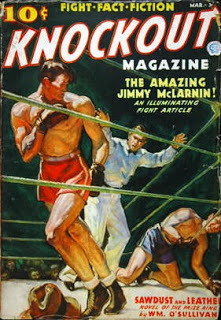 As the ‘70s progressed, however, the public became primed for a change. Unlike prior generations, this change in popular entertainment would not be tied to the socio-economic factors of the day. Instead, a blurring of the lines of fact and fiction—especially in the world of boxing—was occurring as the hyper embellishments of celebritywere inflicted upon larger popular culture as a whole.
As the ‘70s progressed, however, the public became primed for a change. Unlike prior generations, this change in popular entertainment would not be tied to the socio-economic factors of the day. Instead, a blurring of the lines of fact and fiction—especially in the world of boxing—was occurring as the hyper embellishments of celebritywere inflicted upon larger popular culture as a whole.
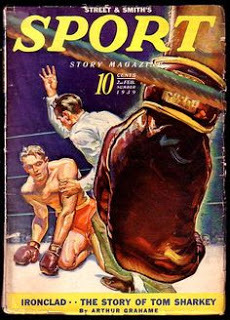 In boxing, the anger, power, and sheer showmanship of Muhammad Ali—the man who would become boxing’s greatest ambassador—had revitalized the public’s fervor for ring action. Ali’s larger than life, love-me-or-hate-me-I’m-still-the-greatest personality overshadowed the ever darkening machinations of the trademark spiky-haired head and grasping fingers of promoter Don King.
In boxing, the anger, power, and sheer showmanship of Muhammad Ali—the man who would become boxing’s greatest ambassador—had revitalized the public’s fervor for ring action. Ali’s larger than life, love-me-or-hate-me-I’m-still-the-greatest personality overshadowed the ever darkening machinations of the trademark spiky-haired head and grasping fingers of promoter Don King.
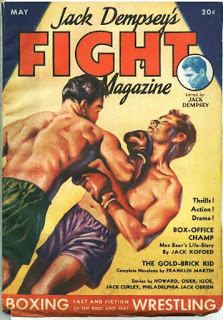 In 1971, Joe Frazier fought Ali in a bout hyped as The Fight of the Century. Frazier prevailed over Ali, who was returning to boxing after being suspended for three years for his refusal to obey the draft. The defeat sent Ali on a quest, fighting contender after pretender to the heavyweight throne in an attempt to obtain another title shot.
In 1971, Joe Frazier fought Ali in a bout hyped as The Fight of the Century. Frazier prevailed over Ali, who was returning to boxing after being suspended for three years for his refusal to obey the draft. The defeat sent Ali on a quest, fighting contender after pretender to the heavyweight throne in an attempt to obtain another title shot.
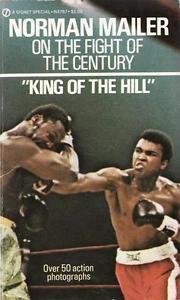 The Rumble in the Junglein 1974, pitted then world Heavyweight champion George Foreman against former world champion and challenger Muhammad Ali. This fight, coupled a year later with The Thrilla in Manila (the climax of the bitter rivalry between Ali and Frazier) returned boxing to the world stage like nothing before. Norman Mailer's bestselling non-fiction work, The Fight, documented The Greatest Fight of the Greatest Lifewith all the power of a great fictional narrative. This revered work ushered in an era of self-involved journalism, which laid the ground work preparing the public for a little film that could go the distance...Rocky.
The Rumble in the Junglein 1974, pitted then world Heavyweight champion George Foreman against former world champion and challenger Muhammad Ali. This fight, coupled a year later with The Thrilla in Manila (the climax of the bitter rivalry between Ali and Frazier) returned boxing to the world stage like nothing before. Norman Mailer's bestselling non-fiction work, The Fight, documented The Greatest Fight of the Greatest Lifewith all the power of a great fictional narrative. This revered work ushered in an era of self-involved journalism, which laid the ground work preparing the public for a little film that could go the distance...Rocky.
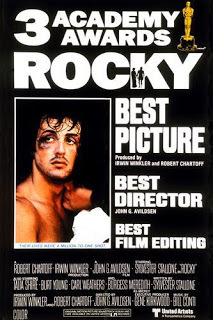 Rocky detailed the winning underdog story of a fighter who only wanted to go the distance—an achievable, if difficult, goal believed in and desired by the everyman of the day in his everyday mundane life, However, the film’s real world inception and creation was an underdog story to rival its fight fiction, pulp-style, plot. Sylvester Stallone was inseparable from his onscreen persona as he fought for his screenplay and starring role against all studio odds—and then went the distance as Rocky would go on to win three Oscars, including Best Picture. Rocky and its (eventually) five sequels were hits and misses with the critics, but not with the public. The average Joe began to see the hype of the real world fights and fictional movie fireworks as almost one and the same. Fight stories were back in the public eye in a big way.
Rocky detailed the winning underdog story of a fighter who only wanted to go the distance—an achievable, if difficult, goal believed in and desired by the everyman of the day in his everyday mundane life, However, the film’s real world inception and creation was an underdog story to rival its fight fiction, pulp-style, plot. Sylvester Stallone was inseparable from his onscreen persona as he fought for his screenplay and starring role against all studio odds—and then went the distance as Rocky would go on to win three Oscars, including Best Picture. Rocky and its (eventually) five sequels were hits and misses with the critics, but not with the public. The average Joe began to see the hype of the real world fights and fictional movie fireworks as almost one and the same. Fight stories were back in the public eye in a big way.

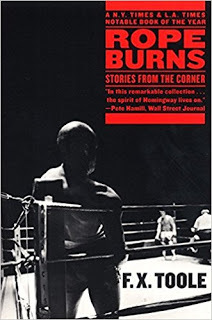 In 2000, fight fiction morphed again with the publication of the pseudonymous F. X. Toole’s, Rope Burns: Stories From The Corner. Each story in the collection was a gem. But unlike the tales populating the fight pulps of old, the stories in Rope Burns gave a whole new human face to the world of boxing, a deeper meaning—all leading to the brilliant Best Picture Oscar winning film Million Dollar Baby, based on several stories from the collection. Rope Burns proved to the wider public, yet again, what fans of fight fiction have always known—the world of the sweet science, at its best, has always been a reflection of what it means to be human, what it means to struggle, what it means to be hit in the face with the daily and millennial challenge of survival as individuals, as families, and finally as a race.
In 2000, fight fiction morphed again with the publication of the pseudonymous F. X. Toole’s, Rope Burns: Stories From The Corner. Each story in the collection was a gem. But unlike the tales populating the fight pulps of old, the stories in Rope Burns gave a whole new human face to the world of boxing, a deeper meaning—all leading to the brilliant Best Picture Oscar winning film Million Dollar Baby, based on several stories from the collection. Rope Burns proved to the wider public, yet again, what fans of fight fiction have always known—the world of the sweet science, at its best, has always been a reflection of what it means to be human, what it means to struggle, what it means to be hit in the face with the daily and millennial challenge of survival as individuals, as families, and finally as a race.
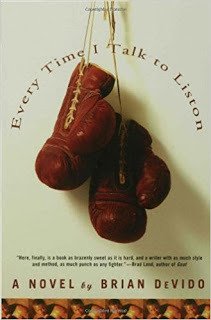 In the new millennium, the economy has struggled again. Today, the ever exploding popularity of mixed martial arts tournaments (MMA) has brought the fighting arts back to the forefront of the public consciousness. In MMA, the everyman sees in the caged octagon his own incarceration, its brutality a blow against the state of the world—the stark struggle to survive in a time and place where the rules have change, where the action is faster, more violent, and yet possessed of a choreographed beauty.
In the new millennium, the economy has struggled again. Today, the ever exploding popularity of mixed martial arts tournaments (MMA) has brought the fighting arts back to the forefront of the public consciousness. In MMA, the everyman sees in the caged octagon his own incarceration, its brutality a blow against the state of the world—the stark struggle to survive in a time and place where the rules have change, where the action is faster, more violent, and yet possessed of a choreographed beauty.
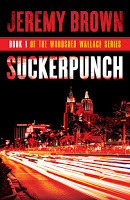
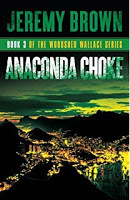
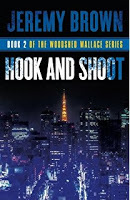 Simultaneously, the thirst for fight stories has increased, as shown by the popularity and critical acclaim for such MMA-themed novels as Suckerpunch by Jeremy Brown, The Longshot by Katie Kitamura, Choke Hold by Christa Faust, and many more. Traditional boxing novels are flourishing. Every Time I Talk To Liston and Las Vegas Soul by Brian DeVido; Pound For Pound, F. X. Toole’s posthumously finished novel; Waiting for Carver Boyd by Thomas Hauser; and many, many, more continue to tell the tale of the tape and the story of the squared circle.
Simultaneously, the thirst for fight stories has increased, as shown by the popularity and critical acclaim for such MMA-themed novels as Suckerpunch by Jeremy Brown, The Longshot by Katie Kitamura, Choke Hold by Christa Faust, and many more. Traditional boxing novels are flourishing. Every Time I Talk To Liston and Las Vegas Soul by Brian DeVido; Pound For Pound, F. X. Toole’s posthumously finished novel; Waiting for Carver Boyd by Thomas Hauser; and many, many, more continue to tell the tale of the tape and the story of the squared circle.
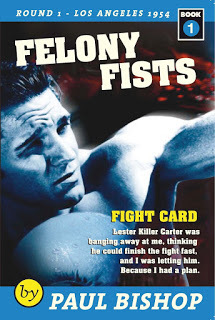
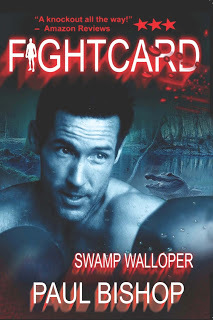 My love of fight fiction and my own writing career eventually squared off in 2012. Together with fellow scribe Mel Odom, we created the Fight Card series of 25,000 word novelettes designed to capture the feel of the fight fiction tales of the pulp era for a new generation. By the end of 2016, the Fight Card series had published fifty tightly plotted tales of fistic mayhem from 45 of the most promising writers working today. Set in the gangster era of the 1920s through the noir-filled streets of the ‘50s and on to the gaged violence of MMA, Fight Card has provided inspiring, entertaining, stories of tough guys caught in tough spots with nothing but their fists, wits, and fighting nature to battle against the odds.
My love of fight fiction and my own writing career eventually squared off in 2012. Together with fellow scribe Mel Odom, we created the Fight Card series of 25,000 word novelettes designed to capture the feel of the fight fiction tales of the pulp era for a new generation. By the end of 2016, the Fight Card series had published fifty tightly plotted tales of fistic mayhem from 45 of the most promising writers working today. Set in the gangster era of the 1920s through the noir-filled streets of the ‘50s and on to the gaged violence of MMA, Fight Card has provided inspiring, entertaining, stories of tough guys caught in tough spots with nothing but their fists, wits, and fighting nature to battle against the odds.
 The best fight fiction has boxing (or other fighting styles) at the beating heart of each narrative and provides the resolution through which each conclusion is reached. Great fight fiction is about character—the individual’s journey into darkness and back to the light. It inspires our character and our journeys. It makes us believe we can endure our own darkness until the light breaks through again.
The best fight fiction has boxing (or other fighting styles) at the beating heart of each narrative and provides the resolution through which each conclusion is reached. Great fight fiction is about character—the individual’s journey into darkness and back to the light. It inspires our character and our journeys. It makes us believe we can endure our own darkness until the light breaks through again.
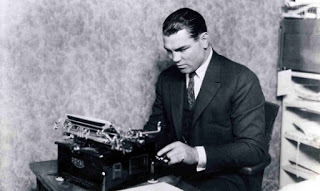 I savor fight fiction because, as a reader and a writer, it brings my imagination alive. It makes me want to stand up and cheer. It elevates me beyond the ordinary and takes me into a world of one man's determination and skill pitted against another in the brutal ballet danced in ring or cage. No matter the time period or the style of fighting involved, it gives me the vicarious experience of being in the ring against an overwhelming opponent, yet with the resolve to never, never, go down for the count—something I never get tired of feeling.
I savor fight fiction because, as a reader and a writer, it brings my imagination alive. It makes me want to stand up and cheer. It elevates me beyond the ordinary and takes me into a world of one man's determination and skill pitted against another in the brutal ballet danced in ring or cage. No matter the time period or the style of fighting involved, it gives me the vicarious experience of being in the ring against an overwhelming opponent, yet with the resolve to never, never, go down for the count—something I never get tired of feeling.
Published on March 22, 2017 23:07
THE CZAR OF ACTION NOIR ~ ERIC BEETNER
 THE CZAR OF ACTION NOIR ~ ERIC BEETNER
THE CZAR OF ACTION NOIR ~ ERIC BEETNER
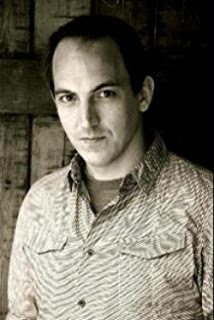 If you want pistol-whipping, boot-stomping, nasty noir, then Eric Beetner is the guy for you—or his books anyway...Eric himself is wonderful blend of kind and cool...He’s the quick-fisted presence behind two of the best Fight Card novels—
Split Decision
and
A Mouthful Of Blood
—with his work since exploding across the hardboiled mystery scene.
Rumrunners
,
Leadfoot
,
The Devil Doesn’t Want Me
,
When The Devil Comes To Call
, and his upcoming
The Devil At Your Door
are just a few of the tough, noir influenced works Eric has published to critical acclaim...As part of an ongoing series of blog posts, I’ve asked the Eric to give us a personal look into the reading habits of writers... Do you mark or write in your books as you read, or does the idea horrify you?
If you want pistol-whipping, boot-stomping, nasty noir, then Eric Beetner is the guy for you—or his books anyway...Eric himself is wonderful blend of kind and cool...He’s the quick-fisted presence behind two of the best Fight Card novels—
Split Decision
and
A Mouthful Of Blood
—with his work since exploding across the hardboiled mystery scene.
Rumrunners
,
Leadfoot
,
The Devil Doesn’t Want Me
,
When The Devil Comes To Call
, and his upcoming
The Devil At Your Door
are just a few of the tough, noir influenced works Eric has published to critical acclaim...As part of an ongoing series of blog posts, I’ve asked the Eric to give us a personal look into the reading habits of writers... Do you mark or write in your books as you read, or does the idea horrify you?
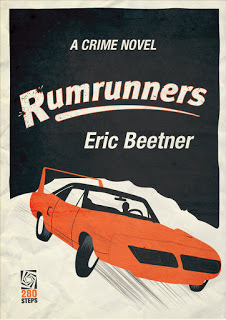 In novels, yes the idea horrifies me. What monster would do that? Now, in reference books it’s another story. Specifically I have several film books where I check off films I’ve seen in genres like Film Noir and Our Gang shorts. I’m sure if you ever investigated my office those books would seem like the obsessive ticks of a madman. How do you keep your place in a book? Bookmark? Dog-ears? Laying the book flat open? I’m a bookmark guy and the great thing about them is that you can make anything into a bookmark. An old receipt. A scrap of paper. A dollar bill. A gum wrapper. A losing lottery ticket. An old photo. Seriously, I’m an artist at repurposing things into bookmarks. Do you have a favorite snack to eat while you read?
In novels, yes the idea horrifies me. What monster would do that? Now, in reference books it’s another story. Specifically I have several film books where I check off films I’ve seen in genres like Film Noir and Our Gang shorts. I’m sure if you ever investigated my office those books would seem like the obsessive ticks of a madman. How do you keep your place in a book? Bookmark? Dog-ears? Laying the book flat open? I’m a bookmark guy and the great thing about them is that you can make anything into a bookmark. An old receipt. A scrap of paper. A dollar bill. A gum wrapper. A losing lottery ticket. An old photo. Seriously, I’m an artist at repurposing things into bookmarks. Do you have a favorite snack to eat while you read?
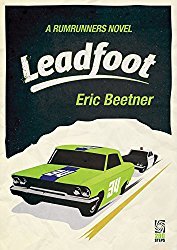 I do 90% of my reading while at my lunch break at work so I’m usually covered for eating and reading. The two really do go hand in hand for me. The mark of a good book is if it has multiple stains in it from curry or ketchup or soup. What book did you love as a child? One I really remember is called The Great Cheese Conspiracy. It’s about a gang of mice who live in an old movie house watching old gangster films and get inspired to rob the cheese shop next door. I think it inspired my love of crime fiction at a young age. What book you would read to your kids? Another favorite from childhood I had the pleasure to read to my girls is The Phantom Tollbooth. My girls are reading on their own now so this is close to the last book they let me read to them, but it is such an important book to me. I had to share it with them.
I do 90% of my reading while at my lunch break at work so I’m usually covered for eating and reading. The two really do go hand in hand for me. The mark of a good book is if it has multiple stains in it from curry or ketchup or soup. What book did you love as a child? One I really remember is called The Great Cheese Conspiracy. It’s about a gang of mice who live in an old movie house watching old gangster films and get inspired to rob the cheese shop next door. I think it inspired my love of crime fiction at a young age. What book you would read to your kids? Another favorite from childhood I had the pleasure to read to my girls is The Phantom Tollbooth. My girls are reading on their own now so this is close to the last book they let me read to them, but it is such an important book to me. I had to share it with them.
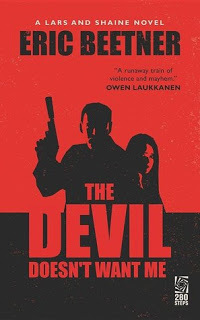 What book made you want to be a writer? I think the one that turned the tide and made me want to commit to crime fiction was A Simple Plan by Scott Smith. Before that I was more omnivorous as a reader, but that solidified the types of stories I like best. Do you read mostly fiction or nonfiction or an even mix? Mostly fiction, but I listen to audiobooks during my commute and I like a good nonfiction listen. Entertainment biographies or histories like Lost In Shangri-La or Frozen In Time, two I can highly recommend.
What book made you want to be a writer? I think the one that turned the tide and made me want to commit to crime fiction was A Simple Plan by Scott Smith. Before that I was more omnivorous as a reader, but that solidified the types of stories I like best. Do you read mostly fiction or nonfiction or an even mix? Mostly fiction, but I listen to audiobooks during my commute and I like a good nonfiction listen. Entertainment biographies or histories like Lost In Shangri-La or Frozen In Time, two I can highly recommend.
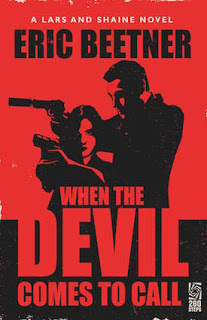 Do you always read to the end of a chapter or can you stop anywhere? Always to the end. I write like that too. I need to finish a thought before I leave off from the night. Not sure what that says about me. Do you stop reading to look up unfamiliar words? I will, but luckily I don’t encounter that too often. I guess I need to read more challenging books. How do you organize your books—by genre, title, author’s last name, random stacks? By author for the new stuff. I have a huge rack of vintage paperbacks arranged by title since so many are by a single author and I usually know them by the cover and title so if I go searching for something I’m more likely to find it by title.
Do you always read to the end of a chapter or can you stop anywhere? Always to the end. I write like that too. I need to finish a thought before I leave off from the night. Not sure what that says about me. Do you stop reading to look up unfamiliar words? I will, but luckily I don’t encounter that too often. I guess I need to read more challenging books. How do you organize your books—by genre, title, author’s last name, random stacks? By author for the new stuff. I have a huge rack of vintage paperbacks arranged by title since so many are by a single author and I usually know them by the cover and title so if I go searching for something I’m more likely to find it by title.
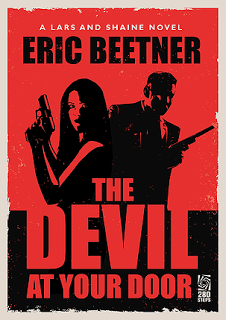 What is your favorite classic? Oh, man, making me choose! I do my best to read the classics of crime. I know I have a long way to go, but my favorite for now might be The Hot Spot by Charles Williams. It was originally titled Hell Hath No Furywhen it came but the movie title is how it is republished today. But ask me again in 5 minutes and I’ll switch to something else like The Kiss Off or The Big Stealor Rendezvous In Black or Double Indemnity or…or…or… What classic have you never been able to read? Maybe Crime and Punishment? But to be honest I haven’t tried that hard. I know better than to try some classic detective fiction like Agatha Christie because I know it’s just not my thing.
What is your favorite classic? Oh, man, making me choose! I do my best to read the classics of crime. I know I have a long way to go, but my favorite for now might be The Hot Spot by Charles Williams. It was originally titled Hell Hath No Furywhen it came but the movie title is how it is republished today. But ask me again in 5 minutes and I’ll switch to something else like The Kiss Off or The Big Stealor Rendezvous In Black or Double Indemnity or…or…or… What classic have you never been able to read? Maybe Crime and Punishment? But to be honest I haven’t tried that hard. I know better than to try some classic detective fiction like Agatha Christie because I know it’s just not my thing.
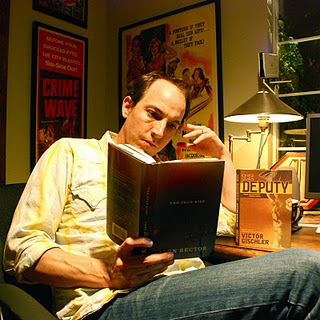 What classic have you pretended to read? I never pretend. I’ll cop to not reading something every time. Talented Mr. Ripley is one I’ve never read but probably should. I own it. Just never read it. What is the last book you read? Justice by Larry Watson. It’s a prequel to his novel Montana, 1948 and it was great. Watson is a bit of a departure for me in that they aren’t really crime novels (though some dark things happen in them) but I absolutely love his writing.
What classic have you pretended to read? I never pretend. I’ll cop to not reading something every time. Talented Mr. Ripley is one I’ve never read but probably should. I own it. Just never read it. What is the last book you read? Justice by Larry Watson. It’s a prequel to his novel Montana, 1948 and it was great. Watson is a bit of a departure for me in that they aren’t really crime novels (though some dark things happen in them) but I absolutely love his writing.
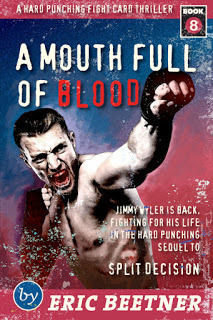 What is the last book you bought? I bought The House Husband by Duane Swierczynski and some guy named James Patterson. It’s part of the Bookshots novella series and it’s great. Also a novel, The Neon Lights Are Veins by Nolan Knight, a local LA writer who we’ve had read at Noir at the Br. It’s his debut novel and I’m excited to dive in. Do you read one book from start to finish, or do you have several on the go? I usually have an at-work book, an at-home book and an in-the-car audiobook. I’m between audiobooks right now waiting for the next one come free at the library. In that case I listen to podcasts.
What is the last book you bought? I bought The House Husband by Duane Swierczynski and some guy named James Patterson. It’s part of the Bookshots novella series and it’s great. Also a novel, The Neon Lights Are Veins by Nolan Knight, a local LA writer who we’ve had read at Noir at the Br. It’s his debut novel and I’m excited to dive in. Do you read one book from start to finish, or do you have several on the go? I usually have an at-work book, an at-home book and an in-the-car audiobook. I’m between audiobooks right now waiting for the next one come free at the library. In that case I listen to podcasts.
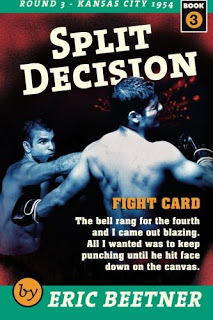 Do you have a favorite time/place to read? Midday at whatever restaurant I’m in. I’m good to go almost anywhere though, except a moving car. I’ll barf in two minutes flat. Do you prefer series books or standalones? Generally I like standalones, but I’ve come around to more series. Most of my favorite books when I look back at it are standalone, though. What book to movie adaptation have you loved? Back to A Simple Plan. They really nailed it.
Do you have a favorite time/place to read? Midday at whatever restaurant I’m in. I’m good to go almost anywhere though, except a moving car. I’ll barf in two minutes flat. Do you prefer series books or standalones? Generally I like standalones, but I’ve come around to more series. Most of my favorite books when I look back at it are standalone, though. What book to movie adaptation have you loved? Back to A Simple Plan. They really nailed it.
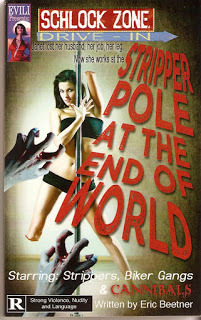 What book would you like to see as a movie? Well, any of mine, of course. I’d like to see Gun Monkeys by Victor Gischler. With the right cast, it could be a lot of fun. What imaginary place would you like to live? It’s far away enough to be imaginary and mythical in my mind, but I’d love to have lived and worked in Hollywood in the 1940s. A great time for film. What genre would you read if you were limited to one? Hardboiled crime fiction What book have you returned to again and again? I don’t re-read very much, but when I even think of it I always want to start with Wild At Heartby Barry Gifford.
What book would you like to see as a movie? Well, any of mine, of course. I’d like to see Gun Monkeys by Victor Gischler. With the right cast, it could be a lot of fun. What imaginary place would you like to live? It’s far away enough to be imaginary and mythical in my mind, but I’d love to have lived and worked in Hollywood in the 1940s. A great time for film. What genre would you read if you were limited to one? Hardboiled crime fiction What book have you returned to again and again? I don’t re-read very much, but when I even think of it I always want to start with Wild At Heartby Barry Gifford.
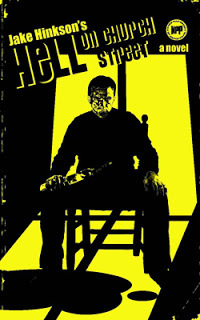 Is there a specific book or author you find yourself recommending over and over? I think people must be getting sick of me pushing Jake Hinkson on them. His novels are amazing noir done right. Hell On Church St.and No Tomorrow are modern classics in my eyes. I keep a small stack of novels that are doubles of titles I already own and love. If I see one in a Goodwill or a dollar bookstore I’ll grab it just to have it to give away to someone. In that stack now are Small Crimes by Dave Zeltserman, Twisted City by Jason Starr, A Very Simple Crime by Grant Jerkins, The Postman Always Rings Twice by James M. Cain. I just sent a copy of The Terror Of Living by Urban Waite to a friend in Chicago. I love sharing a good book! What was the last novel to make you laugh and the last to make you cry?
Is there a specific book or author you find yourself recommending over and over? I think people must be getting sick of me pushing Jake Hinkson on them. His novels are amazing noir done right. Hell On Church St.and No Tomorrow are modern classics in my eyes. I keep a small stack of novels that are doubles of titles I already own and love. If I see one in a Goodwill or a dollar bookstore I’ll grab it just to have it to give away to someone. In that stack now are Small Crimes by Dave Zeltserman, Twisted City by Jason Starr, A Very Simple Crime by Grant Jerkins, The Postman Always Rings Twice by James M. Cain. I just sent a copy of The Terror Of Living by Urban Waite to a friend in Chicago. I love sharing a good book! What was the last novel to make you laugh and the last to make you cry?
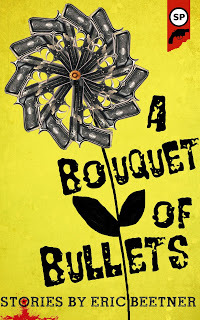 Martin Short’s autobiography I Must Say was fantastic. Do the audiobook to get the full effect. In a way it had the funniest and some of the saddest parts of a book so you get both in one volume. What fictional character would you like to have a beer with? Oh, man, I’ll say the Amlingmeyer brothers from Steve Hockensmith’s Holmes on the Range series. Or Hap and Leonard from Joe Lansdale’s series. Both pairs get into a lot of trouble though, so you’d have to watch your back.********Eric’s latest book,
When The Devil Comes To Call
, continues the adventures of aging hitman Lars and Shaine, the high spirited daughter of one of Lar’s targets who has more mayhem in one fist than most men in their entire bodies. The final book in the trilogy
The Devil At Your Door
will be published in April...Also look for
Leadfoot
the sequel to his great hillbilly noir
Rumrunners
... For more books by Eric Beetner
CLICK HERE
Martin Short’s autobiography I Must Say was fantastic. Do the audiobook to get the full effect. In a way it had the funniest and some of the saddest parts of a book so you get both in one volume. What fictional character would you like to have a beer with? Oh, man, I’ll say the Amlingmeyer brothers from Steve Hockensmith’s Holmes on the Range series. Or Hap and Leonard from Joe Lansdale’s series. Both pairs get into a lot of trouble though, so you’d have to watch your back.********Eric’s latest book,
When The Devil Comes To Call
, continues the adventures of aging hitman Lars and Shaine, the high spirited daughter of one of Lar’s targets who has more mayhem in one fist than most men in their entire bodies. The final book in the trilogy
The Devil At Your Door
will be published in April...Also look for
Leadfoot
the sequel to his great hillbilly noir
Rumrunners
... For more books by Eric Beetner
CLICK HERE
 THE CZAR OF ACTION NOIR ~ ERIC BEETNER
THE CZAR OF ACTION NOIR ~ ERIC BEETNER
 If you want pistol-whipping, boot-stomping, nasty noir, then Eric Beetner is the guy for you—or his books anyway...Eric himself is wonderful blend of kind and cool...He’s the quick-fisted presence behind two of the best Fight Card novels—
Split Decision
and
A Mouthful Of Blood
—with his work since exploding across the hardboiled mystery scene.
Rumrunners
,
Leadfoot
,
The Devil Doesn’t Want Me
,
When The Devil Comes To Call
, and his upcoming
The Devil At Your Door
are just a few of the tough, noir influenced works Eric has published to critical acclaim...As part of an ongoing series of blog posts, I’ve asked the Eric to give us a personal look into the reading habits of writers... Do you mark or write in your books as you read, or does the idea horrify you?
If you want pistol-whipping, boot-stomping, nasty noir, then Eric Beetner is the guy for you—or his books anyway...Eric himself is wonderful blend of kind and cool...He’s the quick-fisted presence behind two of the best Fight Card novels—
Split Decision
and
A Mouthful Of Blood
—with his work since exploding across the hardboiled mystery scene.
Rumrunners
,
Leadfoot
,
The Devil Doesn’t Want Me
,
When The Devil Comes To Call
, and his upcoming
The Devil At Your Door
are just a few of the tough, noir influenced works Eric has published to critical acclaim...As part of an ongoing series of blog posts, I’ve asked the Eric to give us a personal look into the reading habits of writers... Do you mark or write in your books as you read, or does the idea horrify you?
 In novels, yes the idea horrifies me. What monster would do that? Now, in reference books it’s another story. Specifically I have several film books where I check off films I’ve seen in genres like Film Noir and Our Gang shorts. I’m sure if you ever investigated my office those books would seem like the obsessive ticks of a madman. How do you keep your place in a book? Bookmark? Dog-ears? Laying the book flat open? I’m a bookmark guy and the great thing about them is that you can make anything into a bookmark. An old receipt. A scrap of paper. A dollar bill. A gum wrapper. A losing lottery ticket. An old photo. Seriously, I’m an artist at repurposing things into bookmarks. Do you have a favorite snack to eat while you read?
In novels, yes the idea horrifies me. What monster would do that? Now, in reference books it’s another story. Specifically I have several film books where I check off films I’ve seen in genres like Film Noir and Our Gang shorts. I’m sure if you ever investigated my office those books would seem like the obsessive ticks of a madman. How do you keep your place in a book? Bookmark? Dog-ears? Laying the book flat open? I’m a bookmark guy and the great thing about them is that you can make anything into a bookmark. An old receipt. A scrap of paper. A dollar bill. A gum wrapper. A losing lottery ticket. An old photo. Seriously, I’m an artist at repurposing things into bookmarks. Do you have a favorite snack to eat while you read?
 I do 90% of my reading while at my lunch break at work so I’m usually covered for eating and reading. The two really do go hand in hand for me. The mark of a good book is if it has multiple stains in it from curry or ketchup or soup. What book did you love as a child? One I really remember is called The Great Cheese Conspiracy. It’s about a gang of mice who live in an old movie house watching old gangster films and get inspired to rob the cheese shop next door. I think it inspired my love of crime fiction at a young age. What book you would read to your kids? Another favorite from childhood I had the pleasure to read to my girls is The Phantom Tollbooth. My girls are reading on their own now so this is close to the last book they let me read to them, but it is such an important book to me. I had to share it with them.
I do 90% of my reading while at my lunch break at work so I’m usually covered for eating and reading. The two really do go hand in hand for me. The mark of a good book is if it has multiple stains in it from curry or ketchup or soup. What book did you love as a child? One I really remember is called The Great Cheese Conspiracy. It’s about a gang of mice who live in an old movie house watching old gangster films and get inspired to rob the cheese shop next door. I think it inspired my love of crime fiction at a young age. What book you would read to your kids? Another favorite from childhood I had the pleasure to read to my girls is The Phantom Tollbooth. My girls are reading on their own now so this is close to the last book they let me read to them, but it is such an important book to me. I had to share it with them.
 What book made you want to be a writer? I think the one that turned the tide and made me want to commit to crime fiction was A Simple Plan by Scott Smith. Before that I was more omnivorous as a reader, but that solidified the types of stories I like best. Do you read mostly fiction or nonfiction or an even mix? Mostly fiction, but I listen to audiobooks during my commute and I like a good nonfiction listen. Entertainment biographies or histories like Lost In Shangri-La or Frozen In Time, two I can highly recommend.
What book made you want to be a writer? I think the one that turned the tide and made me want to commit to crime fiction was A Simple Plan by Scott Smith. Before that I was more omnivorous as a reader, but that solidified the types of stories I like best. Do you read mostly fiction or nonfiction or an even mix? Mostly fiction, but I listen to audiobooks during my commute and I like a good nonfiction listen. Entertainment biographies or histories like Lost In Shangri-La or Frozen In Time, two I can highly recommend.
 Do you always read to the end of a chapter or can you stop anywhere? Always to the end. I write like that too. I need to finish a thought before I leave off from the night. Not sure what that says about me. Do you stop reading to look up unfamiliar words? I will, but luckily I don’t encounter that too often. I guess I need to read more challenging books. How do you organize your books—by genre, title, author’s last name, random stacks? By author for the new stuff. I have a huge rack of vintage paperbacks arranged by title since so many are by a single author and I usually know them by the cover and title so if I go searching for something I’m more likely to find it by title.
Do you always read to the end of a chapter or can you stop anywhere? Always to the end. I write like that too. I need to finish a thought before I leave off from the night. Not sure what that says about me. Do you stop reading to look up unfamiliar words? I will, but luckily I don’t encounter that too often. I guess I need to read more challenging books. How do you organize your books—by genre, title, author’s last name, random stacks? By author for the new stuff. I have a huge rack of vintage paperbacks arranged by title since so many are by a single author and I usually know them by the cover and title so if I go searching for something I’m more likely to find it by title.
 What is your favorite classic? Oh, man, making me choose! I do my best to read the classics of crime. I know I have a long way to go, but my favorite for now might be The Hot Spot by Charles Williams. It was originally titled Hell Hath No Furywhen it came but the movie title is how it is republished today. But ask me again in 5 minutes and I’ll switch to something else like The Kiss Off or The Big Stealor Rendezvous In Black or Double Indemnity or…or…or… What classic have you never been able to read? Maybe Crime and Punishment? But to be honest I haven’t tried that hard. I know better than to try some classic detective fiction like Agatha Christie because I know it’s just not my thing.
What is your favorite classic? Oh, man, making me choose! I do my best to read the classics of crime. I know I have a long way to go, but my favorite for now might be The Hot Spot by Charles Williams. It was originally titled Hell Hath No Furywhen it came but the movie title is how it is republished today. But ask me again in 5 minutes and I’ll switch to something else like The Kiss Off or The Big Stealor Rendezvous In Black or Double Indemnity or…or…or… What classic have you never been able to read? Maybe Crime and Punishment? But to be honest I haven’t tried that hard. I know better than to try some classic detective fiction like Agatha Christie because I know it’s just not my thing.
 What classic have you pretended to read? I never pretend. I’ll cop to not reading something every time. Talented Mr. Ripley is one I’ve never read but probably should. I own it. Just never read it. What is the last book you read? Justice by Larry Watson. It’s a prequel to his novel Montana, 1948 and it was great. Watson is a bit of a departure for me in that they aren’t really crime novels (though some dark things happen in them) but I absolutely love his writing.
What classic have you pretended to read? I never pretend. I’ll cop to not reading something every time. Talented Mr. Ripley is one I’ve never read but probably should. I own it. Just never read it. What is the last book you read? Justice by Larry Watson. It’s a prequel to his novel Montana, 1948 and it was great. Watson is a bit of a departure for me in that they aren’t really crime novels (though some dark things happen in them) but I absolutely love his writing.
 What is the last book you bought? I bought The House Husband by Duane Swierczynski and some guy named James Patterson. It’s part of the Bookshots novella series and it’s great. Also a novel, The Neon Lights Are Veins by Nolan Knight, a local LA writer who we’ve had read at Noir at the Br. It’s his debut novel and I’m excited to dive in. Do you read one book from start to finish, or do you have several on the go? I usually have an at-work book, an at-home book and an in-the-car audiobook. I’m between audiobooks right now waiting for the next one come free at the library. In that case I listen to podcasts.
What is the last book you bought? I bought The House Husband by Duane Swierczynski and some guy named James Patterson. It’s part of the Bookshots novella series and it’s great. Also a novel, The Neon Lights Are Veins by Nolan Knight, a local LA writer who we’ve had read at Noir at the Br. It’s his debut novel and I’m excited to dive in. Do you read one book from start to finish, or do you have several on the go? I usually have an at-work book, an at-home book and an in-the-car audiobook. I’m between audiobooks right now waiting for the next one come free at the library. In that case I listen to podcasts.
 Do you have a favorite time/place to read? Midday at whatever restaurant I’m in. I’m good to go almost anywhere though, except a moving car. I’ll barf in two minutes flat. Do you prefer series books or standalones? Generally I like standalones, but I’ve come around to more series. Most of my favorite books when I look back at it are standalone, though. What book to movie adaptation have you loved? Back to A Simple Plan. They really nailed it.
Do you have a favorite time/place to read? Midday at whatever restaurant I’m in. I’m good to go almost anywhere though, except a moving car. I’ll barf in two minutes flat. Do you prefer series books or standalones? Generally I like standalones, but I’ve come around to more series. Most of my favorite books when I look back at it are standalone, though. What book to movie adaptation have you loved? Back to A Simple Plan. They really nailed it.
 What book would you like to see as a movie? Well, any of mine, of course. I’d like to see Gun Monkeys by Victor Gischler. With the right cast, it could be a lot of fun. What imaginary place would you like to live? It’s far away enough to be imaginary and mythical in my mind, but I’d love to have lived and worked in Hollywood in the 1940s. A great time for film. What genre would you read if you were limited to one? Hardboiled crime fiction What book have you returned to again and again? I don’t re-read very much, but when I even think of it I always want to start with Wild At Heartby Barry Gifford.
What book would you like to see as a movie? Well, any of mine, of course. I’d like to see Gun Monkeys by Victor Gischler. With the right cast, it could be a lot of fun. What imaginary place would you like to live? It’s far away enough to be imaginary and mythical in my mind, but I’d love to have lived and worked in Hollywood in the 1940s. A great time for film. What genre would you read if you were limited to one? Hardboiled crime fiction What book have you returned to again and again? I don’t re-read very much, but when I even think of it I always want to start with Wild At Heartby Barry Gifford.
 Is there a specific book or author you find yourself recommending over and over? I think people must be getting sick of me pushing Jake Hinkson on them. His novels are amazing noir done right. Hell On Church St.and No Tomorrow are modern classics in my eyes. I keep a small stack of novels that are doubles of titles I already own and love. If I see one in a Goodwill or a dollar bookstore I’ll grab it just to have it to give away to someone. In that stack now are Small Crimes by Dave Zeltserman, Twisted City by Jason Starr, A Very Simple Crime by Grant Jerkins, The Postman Always Rings Twice by James M. Cain. I just sent a copy of The Terror Of Living by Urban Waite to a friend in Chicago. I love sharing a good book! What was the last novel to make you laugh and the last to make you cry?
Is there a specific book or author you find yourself recommending over and over? I think people must be getting sick of me pushing Jake Hinkson on them. His novels are amazing noir done right. Hell On Church St.and No Tomorrow are modern classics in my eyes. I keep a small stack of novels that are doubles of titles I already own and love. If I see one in a Goodwill or a dollar bookstore I’ll grab it just to have it to give away to someone. In that stack now are Small Crimes by Dave Zeltserman, Twisted City by Jason Starr, A Very Simple Crime by Grant Jerkins, The Postman Always Rings Twice by James M. Cain. I just sent a copy of The Terror Of Living by Urban Waite to a friend in Chicago. I love sharing a good book! What was the last novel to make you laugh and the last to make you cry?
 Martin Short’s autobiography I Must Say was fantastic. Do the audiobook to get the full effect. In a way it had the funniest and some of the saddest parts of a book so you get both in one volume. What fictional character would you like to have a beer with? Oh, man, I’ll say the Amlingmeyer brothers from Steve Hockensmith’s Holmes on the Range series. Or Hap and Leonard from Joe Lansdale’s series. Both pairs get into a lot of trouble though, so you’d have to watch your back.********Eric’s latest book,
When The Devil Comes To Call
, continues the adventures of aging hitman Lars and Shaine, the high spirited daughter of one of Lar’s targets who has more mayhem in one fist than most men in their entire bodies. The final book in the trilogy
The Devil At Your Door
will be published in April...Also look for
Leadfoot
the sequel to his great hillbilly noir
Rumrunners
... For more books by Eric Beetner
CLICK HERE
Martin Short’s autobiography I Must Say was fantastic. Do the audiobook to get the full effect. In a way it had the funniest and some of the saddest parts of a book so you get both in one volume. What fictional character would you like to have a beer with? Oh, man, I’ll say the Amlingmeyer brothers from Steve Hockensmith’s Holmes on the Range series. Or Hap and Leonard from Joe Lansdale’s series. Both pairs get into a lot of trouble though, so you’d have to watch your back.********Eric’s latest book,
When The Devil Comes To Call
, continues the adventures of aging hitman Lars and Shaine, the high spirited daughter of one of Lar’s targets who has more mayhem in one fist than most men in their entire bodies. The final book in the trilogy
The Devil At Your Door
will be published in April...Also look for
Leadfoot
the sequel to his great hillbilly noir
Rumrunners
... For more books by Eric Beetner
CLICK HERE
Published on March 22, 2017 09:53
March 20, 2017
SIX-GUNS DOWN UNDER ~ BRENT TOWNS
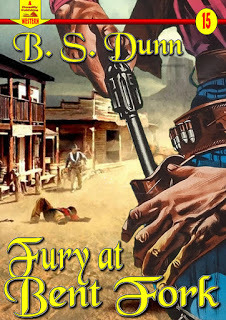
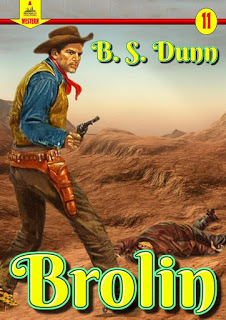 SIX-GUNS DOWN UNDER ~ BRENT TOWNS There’s a new wordslinger in town...or in this case, Towns. Much as the mean and dangerous British writers known as the Piccadilly Cowboys did in the ’70, writing uber-action filled westerns from the wilds of London (and surrounding environs), Brent Towns has recently exploded onto the stage of the western genre from a far distant land—Australia. With six-guns blazing from his key board, Brent has trigger fanned over a dozen top-notch westerns under his own name and a trio of wanted alias: B. S. Dunn, Jake Henry, and Sam Clancy.
SIX-GUNS DOWN UNDER ~ BRENT TOWNS There’s a new wordslinger in town...or in this case, Towns. Much as the mean and dangerous British writers known as the Piccadilly Cowboys did in the ’70, writing uber-action filled westerns from the wilds of London (and surrounding environs), Brent Towns has recently exploded onto the stage of the western genre from a far distant land—Australia. With six-guns blazing from his key board, Brent has trigger fanned over a dozen top-notch westerns under his own name and a trio of wanted alias: B. S. Dunn, Jake Henry, and Sam Clancy.
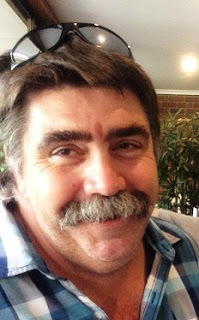 Many traditional western fans may be unaware Australia has deep roots in the genre. Australian writers such as Leonard Meares (alias Marshall Grover, Marshall McCoy, Johnny Nelson, Ward Brennan, Glenn Murrell, Shad Denver), Keith Hetherington (alias Jake Douglas, Hank J Kirby, Clayton Nash, Tyler Hatch, Kirk Hamilton, Brett Waring), and Paul Wheelahan (alias Emerson Dodge, Brett McKinley, E. Jefferson Clay) have literally produced thousands of western tales between them for the likes of Cleveland Publishing and the Horowitz Group—The Kangaroo Cowboys itching for a showdown at high noon calling out The Piccadilly Cowboys. Brent has already earned his writing spurs finding an eager audience for his western actioneers with a number of new titles heading for publication. Taking a short break to reload his word bullets, Brent has hitched his horse to the rail and joined us in the saloon to share his personal tale...******** Thank you, Paul, for the great introduction, kind words, and the chance to tell readers a little about myself and my works and inspirations. What biographic details would be on the wanted poster for Brent Towns?
Many traditional western fans may be unaware Australia has deep roots in the genre. Australian writers such as Leonard Meares (alias Marshall Grover, Marshall McCoy, Johnny Nelson, Ward Brennan, Glenn Murrell, Shad Denver), Keith Hetherington (alias Jake Douglas, Hank J Kirby, Clayton Nash, Tyler Hatch, Kirk Hamilton, Brett Waring), and Paul Wheelahan (alias Emerson Dodge, Brett McKinley, E. Jefferson Clay) have literally produced thousands of western tales between them for the likes of Cleveland Publishing and the Horowitz Group—The Kangaroo Cowboys itching for a showdown at high noon calling out The Piccadilly Cowboys. Brent has already earned his writing spurs finding an eager audience for his western actioneers with a number of new titles heading for publication. Taking a short break to reload his word bullets, Brent has hitched his horse to the rail and joined us in the saloon to share his personal tale...******** Thank you, Paul, for the great introduction, kind words, and the chance to tell readers a little about myself and my works and inspirations. What biographic details would be on the wanted poster for Brent Towns?
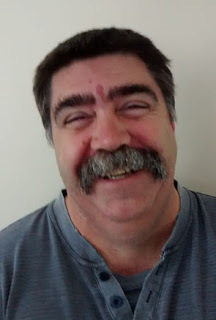 Let’s say I’m a middle-aged western fanatic with a very supportive wife and a young son. We live in Queensland, Australia, in a town on the sunshine coast. In a previous life I worked in a meatworks, a seaweed factory, in the hire industry and in a few caravan parks doing different jobs. I also mowed lawns and did gardening for a living too. Now, I’m a caregiver for my wife and son. For the first part of my life I lived on an island in the middle of Bass Strait between Tasmania and Victoria. A place renowned for Its cheese, beef and shipwrecks. After leaving there I’ve lived in Queensland, Western Australia, and Victoria. When did you start writing?
Let’s say I’m a middle-aged western fanatic with a very supportive wife and a young son. We live in Queensland, Australia, in a town on the sunshine coast. In a previous life I worked in a meatworks, a seaweed factory, in the hire industry and in a few caravan parks doing different jobs. I also mowed lawns and did gardening for a living too. Now, I’m a caregiver for my wife and son. For the first part of my life I lived on an island in the middle of Bass Strait between Tasmania and Victoria. A place renowned for Its cheese, beef and shipwrecks. After leaving there I’ve lived in Queensland, Western Australia, and Victoria. When did you start writing?
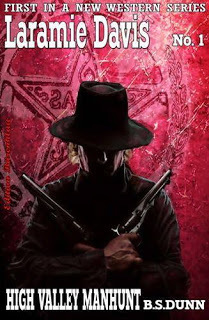 When I was young, I loved free writing at primary school and had a great imagination, even then. I was even lucky enough to have a poem published in a local paper. Later on, in high school, I had to write an essay for English class. After I handed it in, my teacher accused me of getting it from a book. I didn’t take too kindly to the accusation and eventually failed English that year. As a result, I moved away from writing to play golf and football instead. What drew you to the western genre?
When I was young, I loved free writing at primary school and had a great imagination, even then. I was even lucky enough to have a poem published in a local paper. Later on, in high school, I had to write an essay for English class. After I handed it in, my teacher accused me of getting it from a book. I didn’t take too kindly to the accusation and eventually failed English that year. As a result, I moved away from writing to play golf and football instead. What drew you to the western genre?
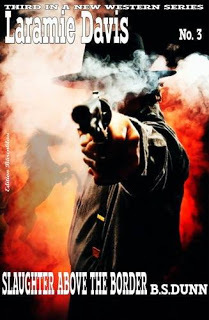 My love of all things western. I used to watch The Lone Ranger as a boy in the school holidays. I can also remember watching Night Of The Grizzly starring Clint Walker when I was about eight. Scared the crap out of me and I had nightmares for weeks after, but it was a great western. Later on, when I was eleven or twelve, a close friend of the family gave me a paper bag filled with Cleveland westerns. They’re quick, action-packed reads you can knock over in a couple of hours. I was hooked from then on.
*Since the early 1950s, Cleveland has published as many as eighteen stapled together, digest-sized, pulp westerns a month—continuing to this day.
Were you aware of Australia’s history in the western genre?
My love of all things western. I used to watch The Lone Ranger as a boy in the school holidays. I can also remember watching Night Of The Grizzly starring Clint Walker when I was about eight. Scared the crap out of me and I had nightmares for weeks after, but it was a great western. Later on, when I was eleven or twelve, a close friend of the family gave me a paper bag filled with Cleveland westerns. They’re quick, action-packed reads you can knock over in a couple of hours. I was hooked from then on.
*Since the early 1950s, Cleveland has published as many as eighteen stapled together, digest-sized, pulp westerns a month—continuing to this day.
Were you aware of Australia’s history in the western genre?
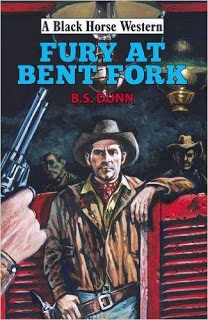 I wasn’t aware until I started reading Cleveland westerns along with the Marshall Grover penned Larry and Stretch books. I didn’t find out for a long time that many, if not most, of the books were written by a handful of Australian authors who used to write like machines.
*Marshall Grover was a pseudonym for prolific Australian writer Leonard F Meares, who wrote hundreds of Larry and Stretch books and others for Cleveland. He later took his characters another publisher, Horowitz, writing them under the pseudonym Marshall McCoy.
Did you start out self-publishing or did you sell your first books to a traditional publisher?
I wasn’t aware until I started reading Cleveland westerns along with the Marshall Grover penned Larry and Stretch books. I didn’t find out for a long time that many, if not most, of the books were written by a handful of Australian authors who used to write like machines.
*Marshall Grover was a pseudonym for prolific Australian writer Leonard F Meares, who wrote hundreds of Larry and Stretch books and others for Cleveland. He later took his characters another publisher, Horowitz, writing them under the pseudonym Marshall McCoy.
Did you start out self-publishing or did you sell your first books to a traditional publisher?
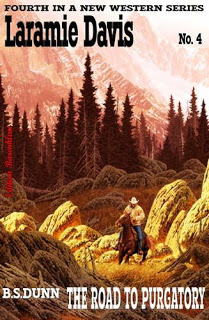 I started with the self-publishing route in 2015. It was easier, plus I had the self-doubt fears of rejection, which kept me from sending it off only to have it dismissed. My first self-published book was Last Stand in Sanctuary. In its first month, it sold a grand total of three copies. I didn’t care. I’d written a book and someone had bought it.
I started with the self-publishing route in 2015. It was easier, plus I had the self-doubt fears of rejection, which kept me from sending it off only to have it dismissed. My first self-published book was Last Stand in Sanctuary. In its first month, it sold a grand total of three copies. I didn’t care. I’d written a book and someone had bought it.
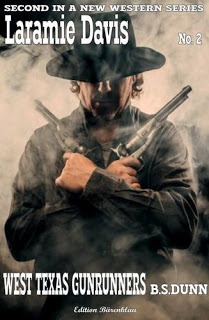 Next, I wrote and self-published High Valley Manhunt. It did a little better, but not much—enter the little doubting voice inside my head once more. I sent the manuscript to Ben Bridges, who I was friends with on Facebook, and asked him if he could please read it and tell me what he thought. He had it for a couple of weeks before I heard back. He told me there was nothing wrong with the story, which gave me the boost required to continue with my third book, which I sent to Robert Hale publishing in the UK.
Next, I wrote and self-published High Valley Manhunt. It did a little better, but not much—enter the little doubting voice inside my head once more. I sent the manuscript to Ben Bridges, who I was friends with on Facebook, and asked him if he could please read it and tell me what he thought. He had it for a couple of weeks before I heard back. He told me there was nothing wrong with the story, which gave me the boost required to continue with my third book, which I sent to Robert Hale publishing in the UK.
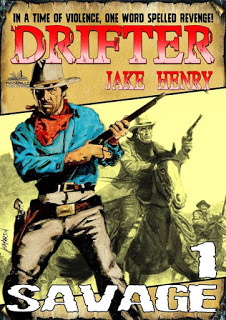 After a month, I heard back from Robert Hale stating they were happy to take the manuscript off my hands. Once accepted there, I never looked back. All I wanted to do was keep writing. No sooner would I finish one, before I would start on the next. Later the same year, I was also lucky enough to have Edition Barenklau in Germany pick up my self-published Laramie Davis series. Then, in 2016, I wrote my first book in The Drifter series for Piccadilly Publishing.
*Bestselling western author Ben Bridges (pseudonym for David Whitehead) is also the head honcho at Piccadilly Publishing
How did you come to use pseudonyms and how do you decided which one to use?
After a month, I heard back from Robert Hale stating they were happy to take the manuscript off my hands. Once accepted there, I never looked back. All I wanted to do was keep writing. No sooner would I finish one, before I would start on the next. Later the same year, I was also lucky enough to have Edition Barenklau in Germany pick up my self-published Laramie Davis series. Then, in 2016, I wrote my first book in The Drifter series for Piccadilly Publishing.
*Bestselling western author Ben Bridges (pseudonym for David Whitehead) is also the head honcho at Piccadilly Publishing
How did you come to use pseudonyms and how do you decided which one to use?
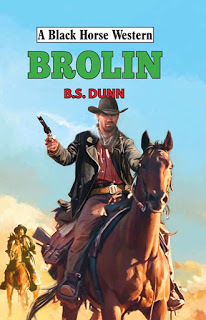 B.S. Dunn was the original name I used when I started this journey. It is a mix of my wife’s and my initials and the name of a street where we once lived. Black Horse Westerns in the UK only take four westerns per year per author. After I gave them two books in two months under the name B.S. Dunn, they said I needed to change my name for the third. I had an idea the third book would have a recurring character (Josh Ford), so I came up with the handle, Sam Clancy.
B.S. Dunn was the original name I used when I started this journey. It is a mix of my wife’s and my initials and the name of a street where we once lived. Black Horse Westerns in the UK only take four westerns per year per author. After I gave them two books in two months under the name B.S. Dunn, they said I needed to change my name for the third. I had an idea the third book would have a recurring character (Josh Ford), so I came up with the handle, Sam Clancy.
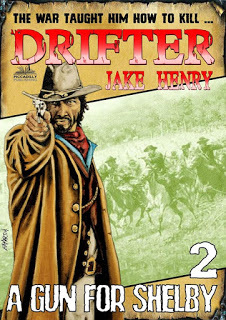 The Josh Ford book was originally to go to Piccadilly Publishing, but things changed and, after a brief discussion, The Drifter and the Jake Henry pseudonym were born. The Jake Henry pseudonym is to be exclusive to The Drifter series. Lastly, I have two books, possibly three, set to be published under my own name this year. One is a Black Horse western and the other two are stories in the Company ‘C’series started by Ben Bridges. This new series is something about which I’m extremely excited. I’ve been reading Ben’s books since the mid-eighties, so to be able to work with him on this project has been fantastic.
The Josh Ford book was originally to go to Piccadilly Publishing, but things changed and, after a brief discussion, The Drifter and the Jake Henry pseudonym were born. The Jake Henry pseudonym is to be exclusive to The Drifter series. Lastly, I have two books, possibly three, set to be published under my own name this year. One is a Black Horse western and the other two are stories in the Company ‘C’series started by Ben Bridges. This new series is something about which I’m extremely excited. I’ve been reading Ben’s books since the mid-eighties, so to be able to work with him on this project has been fantastic. Have you traveled the American west or do you work from research?
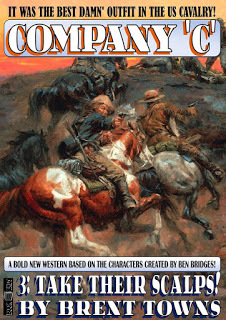 I’ve never been to America before and considering it’s a twenty-something hour flight, and the personal understanding I have with the big silver beast (hate flying), I probably never will step foot on those distant shores. All my work comes from research. I figure out where I want to set my story, then I look at pictures, research history, flora and fauna, clothing, etc., and make the rest up. I’ll glean a few facts to add to the story for authenticity (hopefully) and go from there. I currently have a book in the planning stages based around Crook’s 1883 campaign against the Apache, which is requiring a lot more research than usual. Do you think you bring an Australian perspective to your westerns and if so how would you describe it? I think the only Australian perspective I bring is my spelling. Once, I sent an electronic manuscript to a publisher in the US and he had to turn his spellcheck off because it went crazy. What do you look for when you read a western?
I’ve never been to America before and considering it’s a twenty-something hour flight, and the personal understanding I have with the big silver beast (hate flying), I probably never will step foot on those distant shores. All my work comes from research. I figure out where I want to set my story, then I look at pictures, research history, flora and fauna, clothing, etc., and make the rest up. I’ll glean a few facts to add to the story for authenticity (hopefully) and go from there. I currently have a book in the planning stages based around Crook’s 1883 campaign against the Apache, which is requiring a lot more research than usual. Do you think you bring an Australian perspective to your westerns and if so how would you describe it? I think the only Australian perspective I bring is my spelling. Once, I sent an electronic manuscript to a publisher in the US and he had to turn his spellcheck off because it went crazy. What do you look for when you read a western?
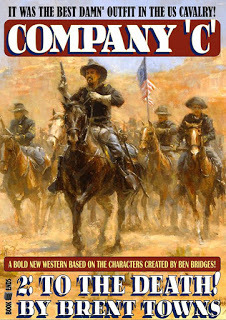 It all comes down to the story grabbing my attention within the first few pages. If it doesn’t, I won’t get past page 20. Because of this, I tend to pack (or try to have) so much action into my stories. I always have something happen within the first page or two for the reader to latch onto. I try not to read westerns over 200 pages as I feel there is too much fill, which outweighs the action. However, I sometimes I have to buy a longer book because of its cover. I like reading about range wars or gunfighters, so they get first preference when I’m looking for something to read. What western novels and writers influenced you?
It all comes down to the story grabbing my attention within the first few pages. If it doesn’t, I won’t get past page 20. Because of this, I tend to pack (or try to have) so much action into my stories. I always have something happen within the first page or two for the reader to latch onto. I try not to read westerns over 200 pages as I feel there is too much fill, which outweighs the action. However, I sometimes I have to buy a longer book because of its cover. I like reading about range wars or gunfighters, so they get first preference when I’m looking for something to read. What western novels and writers influenced you?
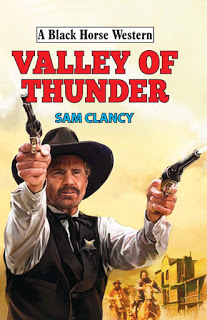 There wasn’t any one novel, but there were a number of writers—starting with the master (in my opinion), Louis L’Amour. I still remember the first book I read by L’Amour. It was called Kid Rodelo. There were many other L’Amour books I enjoyed—Kilkenny, The Key-Lock Man, The Sackett books—the list goes on and on. From Australia, I was always reading Paul Wheelahan, Keith Hetherington, and Len Meares. Of the British writers, Terry Harknett tops the list long with the Neil Hunter and the Ben Bridges westerns. The US writers are too many to name. What book you would read to your kids? Thomas the Tank Engineand Mr. Men books. My son loves them. What is your favorite classic? Hahaha. I have to laugh, sorry. As far as the classics are concerned, I guess you could call me a literary heathen. I’ve never read one. What book would you like to see as a movie? When I’m not reading westerns, I’m quite partial to a good Swords-and-Sandals story, so it would be great to see some big budget movies surrounding the Simon Scarrow tales about Macro and Cato. What imaginary place from a book would you want to live? Nothing so imaginary about this answer. I’ve always liked the look of the English countryside. If I had to choose, it would be there. What genre would you read if you were limited to one? Easy—westerns. Is there a book you’ve returned to again and again? I used to read my Cleveland westerns over and over. Now, however, there are too many books going forward to go back. What fictional character would you like to have a beer with? Dutchy Holland. He was a fictional character created by J.E. MacDonnell in a naval series set in World War Two. One which, I have over 50 copies of sitting on my bookshelf. Holland was a destroyer commander with a gung ho, damn the torpedoes type of attitude and a small soft center somewhere deep down. Early in the series, he skippered a destroyer in the middle-east with virtually no air-defense capability. His solution—arm his crew with machine guns and rifles and have them shoot at the Stukas as they came down. What was the last novel to make you cry? It wasn’t a novel, it was a non-fiction book called Dead Men Risen. It was about the Welsh Guards in Afghanistan. It gave me at least one I’ve-got-something-in-my-eye moment. What are you reading now? It might be easier to ask me what I’m not reading. Currently, I’m into Red Rock Rampage by Ben Boulden, Black, Red, and Deadly by Art Burton, SOG by John L Plaster, and The Apache Wars by Paul Andrew Hutton. What is coming up for you in the realm of the wild west?
There wasn’t any one novel, but there were a number of writers—starting with the master (in my opinion), Louis L’Amour. I still remember the first book I read by L’Amour. It was called Kid Rodelo. There were many other L’Amour books I enjoyed—Kilkenny, The Key-Lock Man, The Sackett books—the list goes on and on. From Australia, I was always reading Paul Wheelahan, Keith Hetherington, and Len Meares. Of the British writers, Terry Harknett tops the list long with the Neil Hunter and the Ben Bridges westerns. The US writers are too many to name. What book you would read to your kids? Thomas the Tank Engineand Mr. Men books. My son loves them. What is your favorite classic? Hahaha. I have to laugh, sorry. As far as the classics are concerned, I guess you could call me a literary heathen. I’ve never read one. What book would you like to see as a movie? When I’m not reading westerns, I’m quite partial to a good Swords-and-Sandals story, so it would be great to see some big budget movies surrounding the Simon Scarrow tales about Macro and Cato. What imaginary place from a book would you want to live? Nothing so imaginary about this answer. I’ve always liked the look of the English countryside. If I had to choose, it would be there. What genre would you read if you were limited to one? Easy—westerns. Is there a book you’ve returned to again and again? I used to read my Cleveland westerns over and over. Now, however, there are too many books going forward to go back. What fictional character would you like to have a beer with? Dutchy Holland. He was a fictional character created by J.E. MacDonnell in a naval series set in World War Two. One which, I have over 50 copies of sitting on my bookshelf. Holland was a destroyer commander with a gung ho, damn the torpedoes type of attitude and a small soft center somewhere deep down. Early in the series, he skippered a destroyer in the middle-east with virtually no air-defense capability. His solution—arm his crew with machine guns and rifles and have them shoot at the Stukas as they came down. What was the last novel to make you cry? It wasn’t a novel, it was a non-fiction book called Dead Men Risen. It was about the Welsh Guards in Afghanistan. It gave me at least one I’ve-got-something-in-my-eye moment. What are you reading now? It might be easier to ask me what I’m not reading. Currently, I’m into Red Rock Rampage by Ben Boulden, Black, Red, and Deadly by Art Burton, SOG by John L Plaster, and The Apache Wars by Paul Andrew Hutton. What is coming up for you in the realm of the wild west?
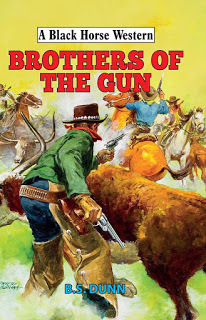 Currently, I’m writing the latest Josh Ford book for Black Horse. Next on the list is a new entry in The Drifter series, followed by a new Company ‘C’ book. This month an e-book edition of Brolin will be published by Piccadilly Publishing and Company ‘C’—To the Death! should be available soon from Bookends Publishing. July sees the release of the second Josh Ford book, Even Marshals Hang, from Black Horse. And there should be at least three more books in The Drifter series later this year.********Thx to Brent Towns for chatting while reloading his keyboard with word bullets. Be sure to check out all his westerns, which are available via Amazon and other book outlets…
Currently, I’m writing the latest Josh Ford book for Black Horse. Next on the list is a new entry in The Drifter series, followed by a new Company ‘C’ book. This month an e-book edition of Brolin will be published by Piccadilly Publishing and Company ‘C’—To the Death! should be available soon from Bookends Publishing. July sees the release of the second Josh Ford book, Even Marshals Hang, from Black Horse. And there should be at least three more books in The Drifter series later this year.********Thx to Brent Towns for chatting while reloading his keyboard with word bullets. Be sure to check out all his westerns, which are available via Amazon and other book outlets…
Published on March 20, 2017 22:19

